

Is Time Travel Possible?
We all travel in time! We travel one year in time between birthdays, for example. And we are all traveling in time at approximately the same speed: 1 second per second.
We typically experience time at one second per second. Credit: NASA/JPL-Caltech
NASA's space telescopes also give us a way to look back in time. Telescopes help us see stars and galaxies that are very far away . It takes a long time for the light from faraway galaxies to reach us. So, when we look into the sky with a telescope, we are seeing what those stars and galaxies looked like a very long time ago.
However, when we think of the phrase "time travel," we are usually thinking of traveling faster than 1 second per second. That kind of time travel sounds like something you'd only see in movies or science fiction books. Could it be real? Science says yes!

This image from the Hubble Space Telescope shows galaxies that are very far away as they existed a very long time ago. Credit: NASA, ESA and R. Thompson (Univ. Arizona)
How do we know that time travel is possible?
More than 100 years ago, a famous scientist named Albert Einstein came up with an idea about how time works. He called it relativity. This theory says that time and space are linked together. Einstein also said our universe has a speed limit: nothing can travel faster than the speed of light (186,000 miles per second).
Einstein's theory of relativity says that space and time are linked together. Credit: NASA/JPL-Caltech
What does this mean for time travel? Well, according to this theory, the faster you travel, the slower you experience time. Scientists have done some experiments to show that this is true.
For example, there was an experiment that used two clocks set to the exact same time. One clock stayed on Earth, while the other flew in an airplane (going in the same direction Earth rotates).
After the airplane flew around the world, scientists compared the two clocks. The clock on the fast-moving airplane was slightly behind the clock on the ground. So, the clock on the airplane was traveling slightly slower in time than 1 second per second.
Credit: NASA/JPL-Caltech
Can we use time travel in everyday life?
We can't use a time machine to travel hundreds of years into the past or future. That kind of time travel only happens in books and movies. But the math of time travel does affect the things we use every day.
For example, we use GPS satellites to help us figure out how to get to new places. (Check out our video about how GPS satellites work .) NASA scientists also use a high-accuracy version of GPS to keep track of where satellites are in space. But did you know that GPS relies on time-travel calculations to help you get around town?
GPS satellites orbit around Earth very quickly at about 8,700 miles (14,000 kilometers) per hour. This slows down GPS satellite clocks by a small fraction of a second (similar to the airplane example above).

GPS satellites orbit around Earth at about 8,700 miles (14,000 kilometers) per hour. Credit: GPS.gov
However, the satellites are also orbiting Earth about 12,550 miles (20,200 km) above the surface. This actually speeds up GPS satellite clocks by a slighter larger fraction of a second.
Here's how: Einstein's theory also says that gravity curves space and time, causing the passage of time to slow down. High up where the satellites orbit, Earth's gravity is much weaker. This causes the clocks on GPS satellites to run faster than clocks on the ground.
The combined result is that the clocks on GPS satellites experience time at a rate slightly faster than 1 second per second. Luckily, scientists can use math to correct these differences in time.

If scientists didn't correct the GPS clocks, there would be big problems. GPS satellites wouldn't be able to correctly calculate their position or yours. The errors would add up to a few miles each day, which is a big deal. GPS maps might think your home is nowhere near where it actually is!
In Summary:
Yes, time travel is indeed a real thing. But it's not quite what you've probably seen in the movies. Under certain conditions, it is possible to experience time passing at a different rate than 1 second per second. And there are important reasons why we need to understand this real-world form of time travel.
If you liked this, you may like:
Time travel: Is it possible?
Science says time travel is possible, but probably not in the way you're thinking.

Albert Einstein's theory
- General relativity and GPS
- Wormhole travel
- Alternate theories
Science fiction
Is time travel possible? Short answer: Yes, and you're doing it right now — hurtling into the future at the impressive rate of one second per second.
You're pretty much always moving through time at the same speed, whether you're watching paint dry or wishing you had more hours to visit with a friend from out of town.
But this isn't the kind of time travel that's captivated countless science fiction writers, or spurred a genre so extensive that Wikipedia lists over 400 titles in the category "Movies about Time Travel." In franchises like " Doctor Who ," " Star Trek ," and "Back to the Future" characters climb into some wild vehicle to blast into the past or spin into the future. Once the characters have traveled through time, they grapple with what happens if you change the past or present based on information from the future (which is where time travel stories intersect with the idea of parallel universes or alternate timelines).
Related: The best sci-fi time machines ever
Although many people are fascinated by the idea of changing the past or seeing the future before it's due, no person has ever demonstrated the kind of back-and-forth time travel seen in science fiction or proposed a method of sending a person through significant periods of time that wouldn't destroy them on the way. And, as physicist Stephen Hawking pointed out in his book " Black Holes and Baby Universes" (Bantam, 1994), "The best evidence we have that time travel is not possible, and never will be, is that we have not been invaded by hordes of tourists from the future."
Science does support some amount of time-bending, though. For example, physicist Albert Einstein 's theory of special relativity proposes that time is an illusion that moves relative to an observer. An observer traveling near the speed of light will experience time, with all its aftereffects (boredom, aging, etc.) much more slowly than an observer at rest. That's why astronaut Scott Kelly aged ever so slightly less over the course of a year in orbit than his twin brother who stayed here on Earth.
Related: Controversially, physicist argues that time is real
There are other scientific theories about time travel, including some weird physics that arise around wormholes , black holes and string theory . For the most part, though, time travel remains the domain of an ever-growing array of science fiction books, movies, television shows, comics, video games and more.

Einstein developed his theory of special relativity in 1905. Along with his later expansion, the theory of general relativity , it has become one of the foundational tenets of modern physics. Special relativity describes the relationship between space and time for objects moving at constant speeds in a straight line.
The short version of the theory is deceptively simple. First, all things are measured in relation to something else — that is to say, there is no "absolute" frame of reference. Second, the speed of light is constant. It stays the same no matter what, and no matter where it's measured from. And third, nothing can go faster than the speed of light.
From those simple tenets unfolds actual, real-life time travel. An observer traveling at high velocity will experience time at a slower rate than an observer who isn't speeding through space.
While we don't accelerate humans to near-light-speed, we do send them swinging around the planet at 17,500 mph (28,160 km/h) aboard the International Space Station . Astronaut Scott Kelly was born after his twin brother, and fellow astronaut, Mark Kelly . Scott Kelly spent 520 days in orbit, while Mark logged 54 days in space. The difference in the speed at which they experienced time over the course of their lifetimes has actually widened the age gap between the two men.
"So, where[as] I used to be just 6 minutes older, now I am 6 minutes and 5 milliseconds older," Mark Kelly said in a panel discussion on July 12, 2020, Space.com previously reported . "Now I've got that over his head."
General relativity and GPS time travel

The difference that low earth orbit makes in an astronaut's life span may be negligible — better suited for jokes among siblings than actual life extension or visiting the distant future — but the dilation in time between people on Earth and GPS satellites flying through space does make a difference.
Read more: Can we stop time?
The Global Positioning System , or GPS, helps us know exactly where we are by communicating with a network of a few dozen satellites positioned in a high Earth orbit. The satellites circle the planet from 12,500 miles (20,100 kilometers) away, moving at 8,700 mph (14,000 km/h).
According to special relativity, the faster an object moves relative to another object, the slower that first object experiences time. For GPS satellites with atomic clocks, this effect cuts 7 microseconds, or 7 millionths of a second, off each day, according to the American Physical Society publication Physics Central .
Read more: Could Star Trek's faster-than-light warp drive actually work?
Then, according to general relativity, clocks closer to the center of a large gravitational mass like Earth tick more slowly than those farther away. So, because the GPS satellites are much farther from the center of Earth compared to clocks on the surface, Physics Central added, that adds another 45 microseconds onto the GPS satellite clocks each day. Combined with the negative 7 microseconds from the special relativity calculation, the net result is an added 38 microseconds.
This means that in order to maintain the accuracy needed to pinpoint your car or phone — or, since the system is run by the U.S. Department of Defense, a military drone — engineers must account for an extra 38 microseconds in each satellite's day. The atomic clocks onboard don’t tick over to the next day until they have run 38 microseconds longer than comparable clocks on Earth.
Given those numbers, it would take more than seven years for the atomic clock in a GPS satellite to un-sync itself from an Earth clock by more than a blink of an eye. (We did the math: If you estimate a blink to last at least 100,000 microseconds, as the Harvard Database of Useful Biological Numbers does, it would take thousands of days for those 38 microsecond shifts to add up.)
This kind of time travel may seem as negligible as the Kelly brothers' age gap, but given the hyper-accuracy of modern GPS technology, it actually does matter. If it can communicate with the satellites whizzing overhead, your phone can nail down your location in space and time with incredible accuracy.
Can wormholes take us back in time?
General relativity might also provide scenarios that could allow travelers to go back in time, according to NASA . But the physical reality of those time-travel methods is no piece of cake.
Wormholes are theoretical "tunnels" through the fabric of space-time that could connect different moments or locations in reality to others. Also known as Einstein-Rosen bridges or white holes, as opposed to black holes, speculation about wormholes abounds. But despite taking up a lot of space (or space-time) in science fiction, no wormholes of any kind have been identified in real life.
Related: Best time travel movies
"The whole thing is very hypothetical at this point," Stephen Hsu, a professor of theoretical physics at the University of Oregon, told Space.com sister site Live Science . "No one thinks we're going to find a wormhole anytime soon."
Primordial wormholes are predicted to be just 10^-34 inches (10^-33 centimeters) at the tunnel's "mouth". Previously, they were expected to be too unstable for anything to be able to travel through them. However, a study claims that this is not the case, Live Science reported .
The theory, which suggests that wormholes could work as viable space-time shortcuts, was described by physicist Pascal Koiran. As part of the study, Koiran used the Eddington-Finkelstein metric, as opposed to the Schwarzschild metric which has been used in the majority of previous analyses.
In the past, the path of a particle could not be traced through a hypothetical wormhole. However, using the Eddington-Finkelstein metric, the physicist was able to achieve just that.
Koiran's paper was described in October 2021, in the preprint database arXiv , before being published in the Journal of Modern Physics D.

Alternate time travel theories
While Einstein's theories appear to make time travel difficult, some researchers have proposed other solutions that could allow jumps back and forth in time. These alternate theories share one major flaw: As far as scientists can tell, there's no way a person could survive the kind of gravitational pulling and pushing that each solution requires.
Infinite cylinder theory
Astronomer Frank Tipler proposed a mechanism (sometimes known as a Tipler Cylinder ) where one could take matter that is 10 times the sun's mass, then roll it into a very long, but very dense cylinder. The Anderson Institute , a time travel research organization, described the cylinder as "a black hole that has passed through a spaghetti factory."
After spinning this black hole spaghetti a few billion revolutions per minute, a spaceship nearby — following a very precise spiral around the cylinder — could travel backward in time on a "closed, time-like curve," according to the Anderson Institute.
The major problem is that in order for the Tipler Cylinder to become reality, the cylinder would need to be infinitely long or be made of some unknown kind of matter. At least for the foreseeable future, endless interstellar pasta is beyond our reach.
Time donuts
Theoretical physicist Amos Ori at the Technion-Israel Institute of Technology in Haifa, Israel, proposed a model for a time machine made out of curved space-time — a donut-shaped vacuum surrounded by a sphere of normal matter.
"The machine is space-time itself," Ori told Live Science . "If we were to create an area with a warp like this in space that would enable time lines to close on themselves, it might enable future generations to return to visit our time."
Amos Ori is a theoretical physicist at the Technion-Israel Institute of Technology in Haifa, Israel. His research interests and publications span the fields of general relativity, black holes, gravitational waves and closed time lines.
There are a few caveats to Ori's time machine. First, visitors to the past wouldn't be able to travel to times earlier than the invention and construction of the time donut. Second, and more importantly, the invention and construction of this machine would depend on our ability to manipulate gravitational fields at will — a feat that may be theoretically possible but is certainly beyond our immediate reach.

Time travel has long occupied a significant place in fiction. Since as early as the "Mahabharata," an ancient Sanskrit epic poem compiled around 400 B.C., humans have dreamed of warping time, Lisa Yaszek, a professor of science fiction studies at the Georgia Institute of Technology in Atlanta, told Live Science .
Every work of time-travel fiction creates its own version of space-time, glossing over one or more scientific hurdles and paradoxes to achieve its plot requirements.
Some make a nod to research and physics, like " Interstellar ," a 2014 film directed by Christopher Nolan. In the movie, a character played by Matthew McConaughey spends a few hours on a planet orbiting a supermassive black hole, but because of time dilation, observers on Earth experience those hours as a matter of decades.
Others take a more whimsical approach, like the "Doctor Who" television series. The series features the Doctor, an extraterrestrial "Time Lord" who travels in a spaceship resembling a blue British police box. "People assume," the Doctor explained in the show, "that time is a strict progression from cause to effect, but actually from a non-linear, non-subjective viewpoint, it's more like a big ball of wibbly-wobbly, timey-wimey stuff."
Long-standing franchises like the "Star Trek" movies and television series, as well as comic universes like DC and Marvel Comics, revisit the idea of time travel over and over.
Related: Marvel movies in order: chronological & release order
Here is an incomplete (and deeply subjective) list of some influential or notable works of time travel fiction:
Books about time travel:

- Rip Van Winkle (Cornelius S. Van Winkle, 1819) by Washington Irving
- A Christmas Carol (Chapman & Hall, 1843) by Charles Dickens
- The Time Machine (William Heinemann, 1895) by H. G. Wells
- A Connecticut Yankee in King Arthur's Court (Charles L. Webster and Co., 1889) by Mark Twain
- The Restaurant at the End of the Universe (Pan Books, 1980) by Douglas Adams
- A Tale of Time City (Methuen, 1987) by Diana Wynn Jones
- The Outlander series (Delacorte Press, 1991-present) by Diana Gabaldon
- Harry Potter and the Prisoner of Azkaban (Bloomsbury/Scholastic, 1999) by J. K. Rowling
- Thief of Time (Doubleday, 2001) by Terry Pratchett
- The Time Traveler's Wife (MacAdam/Cage, 2003) by Audrey Niffenegger
- All You Need is Kill (Shueisha, 2004) by Hiroshi Sakurazaka
Movies about time travel:
- Planet of the Apes (1968)
- Superman (1978)
- Time Bandits (1981)
- The Terminator (1984)
- Back to the Future series (1985, 1989, 1990)
- Star Trek IV: The Voyage Home (1986)
- Bill & Ted's Excellent Adventure (1989)
- Groundhog Day (1993)
- Galaxy Quest (1999)
- The Butterfly Effect (2004)
- 13 Going on 30 (2004)
- The Lake House (2006)
- Meet the Robinsons (2007)
- Hot Tub Time Machine (2010)
- Midnight in Paris (2011)
- Looper (2012)
- X-Men: Days of Future Past (2014)
- Edge of Tomorrow (2014)
- Interstellar (2014)
- Doctor Strange (2016)
- A Wrinkle in Time (2018)
- The Last Sharknado: It's About Time (2018)
- Avengers: Endgame (2019)
- Tenet (2020)
- Palm Springs (2020)
- Zach Snyder's Justice League (2021)
- The Tomorrow War (2021)
Television about time travel:

- Doctor Who (1963-present)
- The Twilight Zone (1959-1964) (multiple episodes)
- Star Trek (multiple series, multiple episodes)
- Samurai Jack (2001-2004)
- Lost (2004-2010)
- Phil of the Future (2004-2006)
- Steins;Gate (2011)
- Outlander (2014-2023)
- Loki (2021-present)
Games about time travel:
- Chrono Trigger (1995)
- TimeSplitters (2000-2005)
- Kingdom Hearts (2002-2019)
- Prince of Persia: Sands of Time (2003)
- God of War II (2007)
- Ratchet and Clank Future: A Crack In Time (2009)
- Sly Cooper: Thieves in Time (2013)
- Dishonored 2 (2016)
- Titanfall 2 (2016)
- Outer Wilds (2019)
Additional resources
Explore physicist Peter Millington's thoughts about Stephen Hawking's time travel theories at The Conversation . Check out a kid-friendly explanation of real-world time travel from NASA's Space Place . For an overview of time travel in fiction and the collective consciousness, read " Time Travel: A History " (Pantheon, 2016) by James Gleik.
Join our Space Forums to keep talking space on the latest missions, night sky and more! And if you have a news tip, correction or comment, let us know at: [email protected].
Get the Space.com Newsletter
Breaking space news, the latest updates on rocket launches, skywatching events and more!

Ailsa is a staff writer for How It Works magazine, where she writes science, technology, space, history and environment features. Based in the U.K., she graduated from the University of Stirling with a BA (Hons) journalism degree. Previously, Ailsa has written for Cardiff Times magazine, Psychology Now and numerous science bookazines.
Satellites watch as 4th global coral bleaching event unfolds (image)
Happy Earth Day 2024! NASA picks 6 new airborne missions to study our changing planet
Boeing's Starliner spacecraft will not fly private missions yet, officials say
Most Popular
- 2 SpaceX launching Falcon 9 rocket on record-tying 20th mission today
- 3 Watch 2 gorgeous supernova remnants evolve over 20 years (timelapse video)
- 4 Boeing Starliner 1st astronaut flight: Live updates
- 5 US Space Force picks Rocket Lab for 2025 Victus Haze space domain awareness mission

Time Travel: Observing Cosmic History
By observing light from faraway cosmic objects, the Hubble Space Telescope is like a time machine. Light takes time to reach Hubble, because it travels great distances. That means images captured by Hubble today, show what the objects looked like years ago!

The Hubble Space Telescope is many things. It’s an observatory, a satellite, and an icon of cultural and scientific significance – but perhaps most interestingly, Hubble is also a time machine.
Hubble isn’t that far away, locked in a low-Earth orbit just a few hundred miles up that takes about 90 minutes to complete. But with its position just above Earth’s murky atmosphere, Hubble’s transformative view of our universe literally lets us witness our universe’s past. It allows us to effectively travel back in time.
How does that work? After all, Hubble doesn’t travel beyond our solar system, or even our home planet’s gravity. It certainly doesn’t have any sci-fi elements you might find in Doctor Who or Back to the Future.
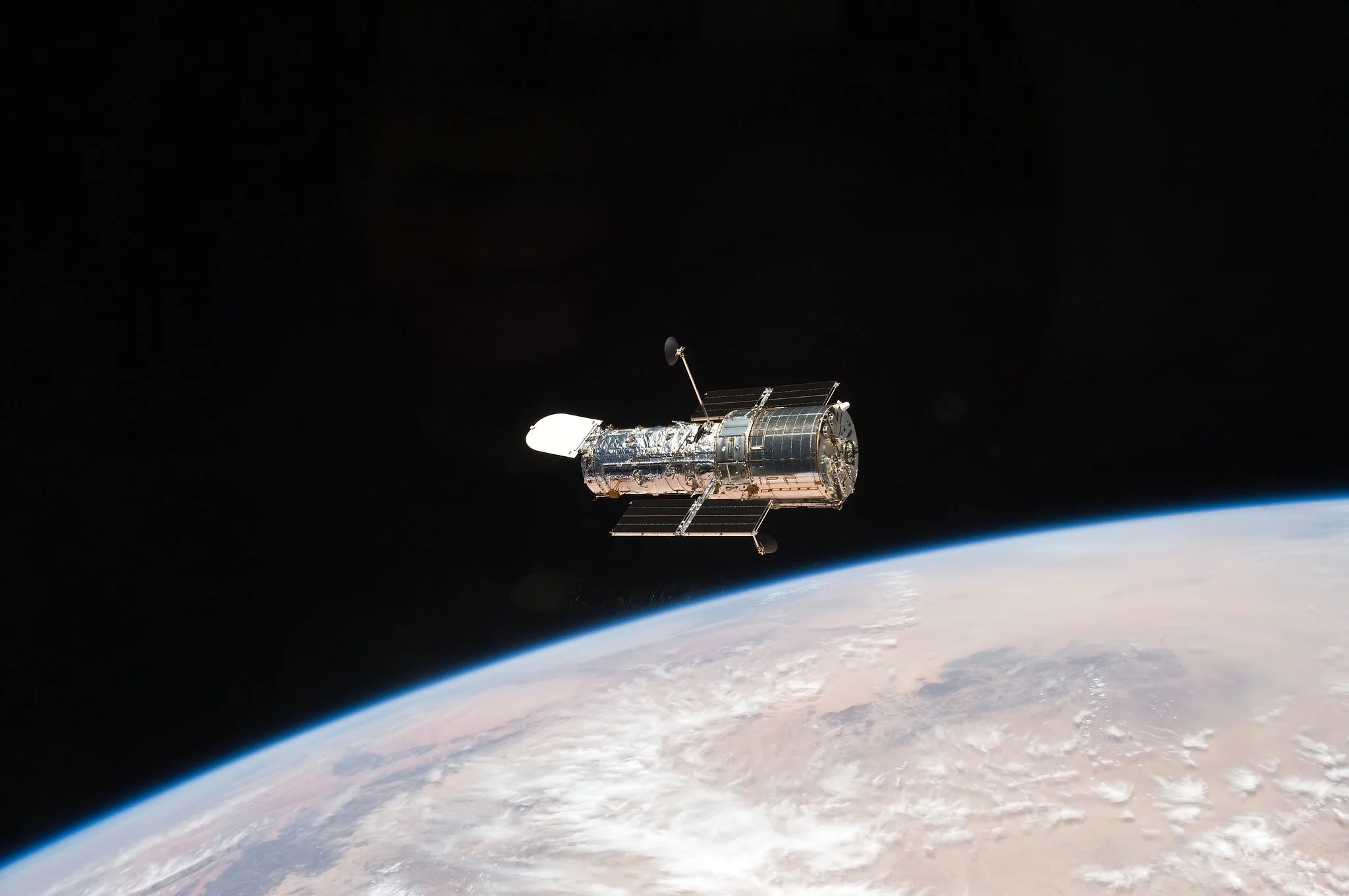
Light Travel
The answer is simply light.
The term “light-year” shows up a lot in astronomy. This is a measure of distance that means exactly what it says – the distance that light travels in one year. Given that the speed of light is 186,000 miles (299,000 kilometers) per second, light can cover some serious ground over the course of 365 days. To be precise, almost 6 trillion miles (9.5 trillion kilometers)!
Traveling Back in Time: 8 minutes
Hubble works by gathering light from objects in our universe – some as close as our Moon, and some as distant as galaxy clusters that are billions of light-years away. All that light takes time to reach the telescope, just as it takes time for light to travel from its source to our eyes. For example, our Sun is located about 93 million miles (150 million kilometers) from Earth. That means that it takes roughly eight minutes for its light to reach us here on our planet, so when we look at the Sun (though directly is never recommended!) we see it exactly as it was eight minutes in the past.
Cosmically speaking, the 93 million miles between us and the Sun are nothing. We orbit around just one of billions of stars in the Milky Way Galaxy, which is one of countless trillions of galaxies in the universe.
With that in mind, time travel gets more intense when Hubble observes objects beyond our star system.
Traveling Back in Time: 4 years
Aside from our Sun, the next closest star to us is named Proxima Centauri. It’s about four light-years away, which makes it a close neighbor on a universal scale. But even with Hubble’s sharp, powerful vision, Proxima Centauri remains a point-like object – demonstrating our universe’s unfathomably large size.
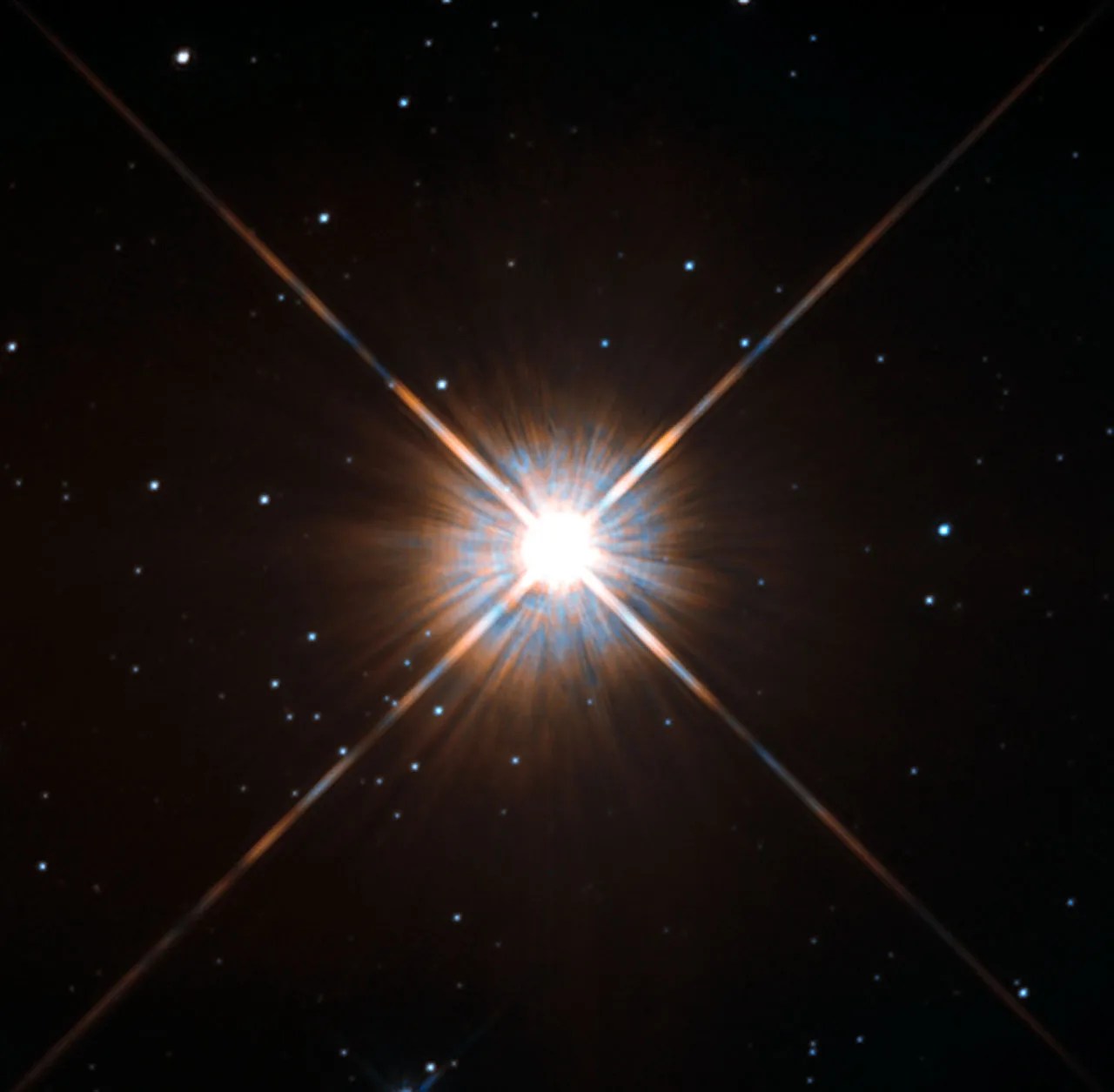
Traveling Back in Time: 700 years
Another stellar target of Hubble’s is named Betelgeuse, which is about 700 light-years from Earth. Again, this means that when Hubble looks at Betelgeuse, the star appears exactly as it was 700 years ago. As one of the brightest stars in our sky, astronomers believe it’s likely that even the earliest humans knew of it, as this star appears in stories from several cultures.
This red supergiant star began to dim significantly in the fall of 2019, losing about 60% of its brightness within months. But by April 2020, its regular brightness returned. Hubble studied Betelgeuse and found out that the star “blew its top” – it went through a surface mass ejection, in which the star spewed out a large amount of its surface material into space. When that material in space cooled down, it became a dust cloud that temporarily blocked some of the star’s light.
Hubble’s unique ability to observe in ultraviolet light helped reveal the details of this dimming event and its aftermath. In this range of light, Hubble can better observe the hot layers of atmosphere above a star’s surface.
The telescope continues to be the go-to observatory for scientists who study Betelgeuse. Because it’s taken this long for the light from Betelgeuse to reach us, only in very recent history have we witnessed a cosmic event unfolding that really occurred about 700 years ago!
Scientists also believe that Betelgeuse is on the verge of going supernova – dying in an explosive event. In fact, it may have already done so, but the light from the explosion still hasn’t reached us. There’s a good chance that Betelgeuse no longer exists, though we can still see it today from Earth.
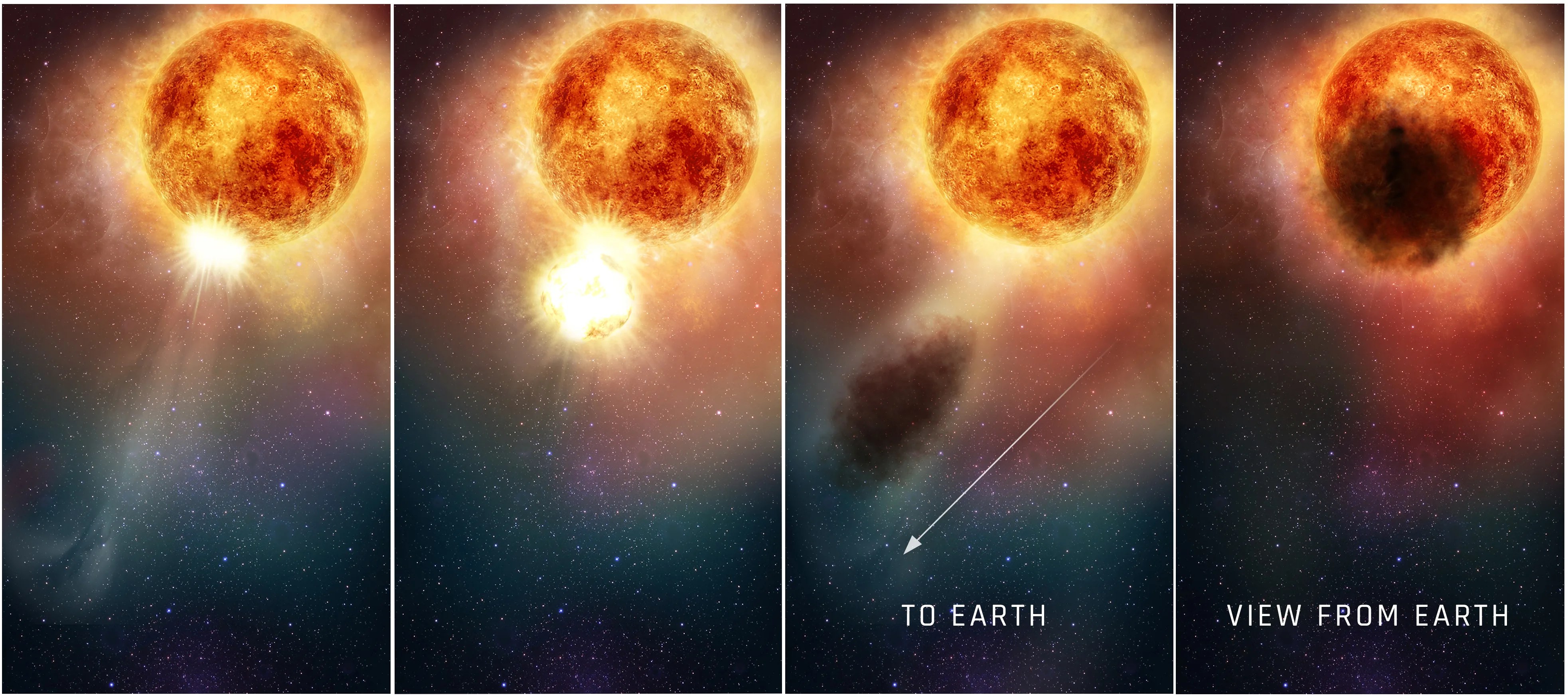
Traveling Back in Time: 6,500 years
Nebulae are clouds of gas and dust where stars are birthed, or the remnants of a dead or dying star itself. These beautiful, ethereal cosmic objects are the subject of some of Hubble’s most iconic images, but they can also teach us more about how our universe behaves and evolves.
For example, a favorite target for Hubble is the Crab Nebula, located about 6,500 light-years away. There are records from 1054 CE written by Chinese astronomers noting the new presence of a shockingly bright “guest” star in the sky, visible even during the daytime. Turns out, they actually saw a supernova – a star’s explosive death – which became the Crab Nebula, made up by the remnants of this violent event. Of course, those Chinese astronomers witnessed a supernova explosion that occurred about 5446 BCE, but it took the light from the explosion 6,500 years to reach Earth in the year 1054.

Traveling Back in Time: 2.5 million years
When Hubble looks beyond our own galaxy, we can watch cosmic history unfold over eons.
The Andromeda Galaxy is a whopping 2.5 million light-years away, but that’s just the closest major galaxy to us here in the Milky Way. Observing Andromeda is like staring into a vision from 2.5 million years ago – back during the Paleolithic period on Earth, when very early humans existed.
And if Andromeda is the closest major galaxy to us, it’s difficult to comprehend just how far the light from the most distant observed galaxies has traveled.

Traveling Back in Time: 12.9 billion years
Another Hubble record is for observing the most distant individual star ever detected, named Earendel. This faraway star emitted its light within the first billion years of the universe, which is about 13.8 billion years old, so it took quite a while to reach Hubble! In fact, that observation was only made possible by nature’s magnifying glass – an astronomical phenomenon known as gravitational lensing. When a massive cosmic object has enough gravity, its gravitational field can magnify and bend light coming from objects located behind it. The gravity of a galaxy cluster located between Hubble and Earendel magnified the star’s light, making it detectable. The type of star that Earendel seems to be typically have brief lives, only surviving about half a billion years. That means Earendel has ceased to exist for over 12 billion years, yet we are able to look back in time and watch Earendel during its short life.
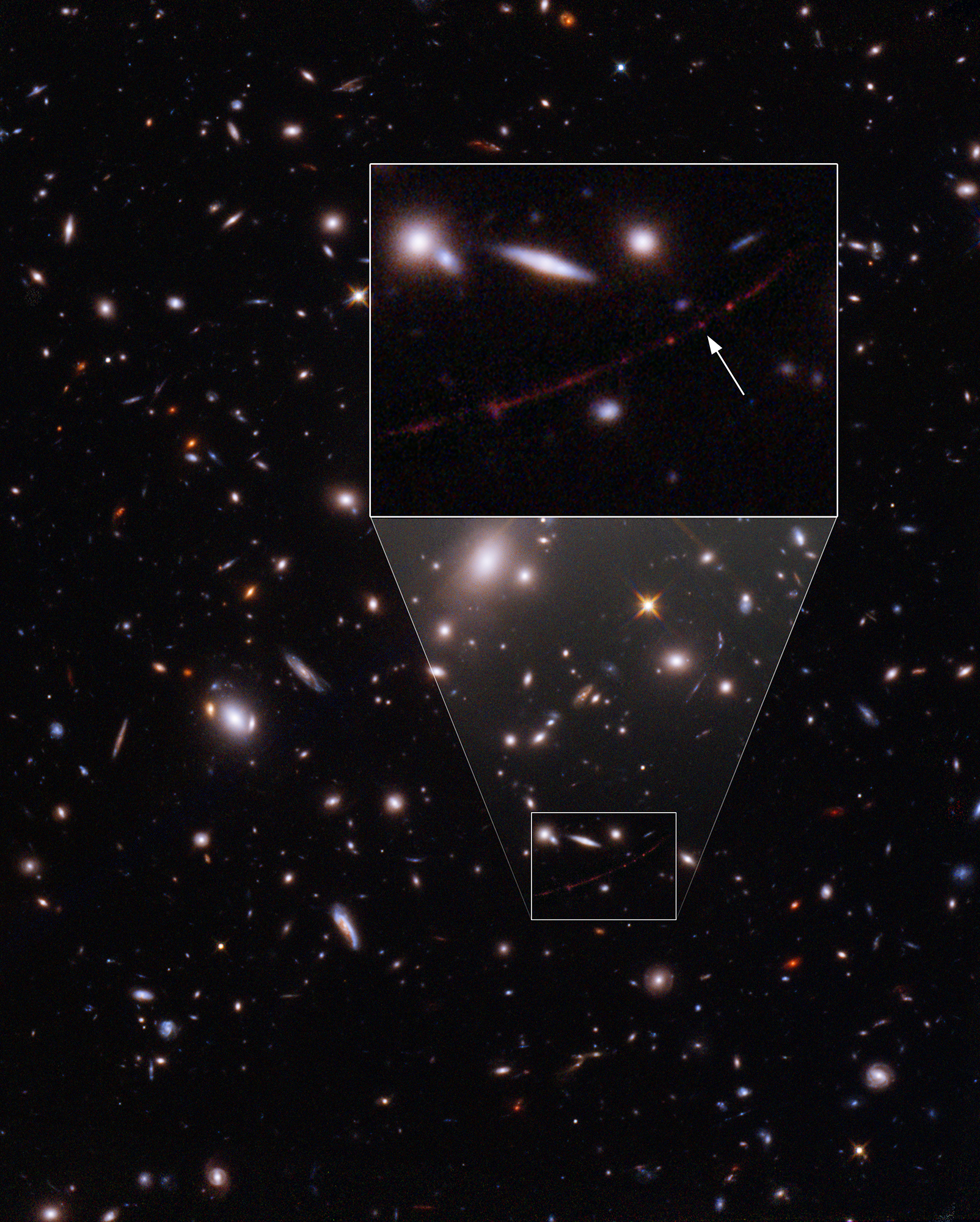
Traveling Back in Time: 13.4 billion years
Perhaps some of Hubble’s most legendary observations are its deep field images, which collect light from thousands of galaxies that are billions of light-years away.
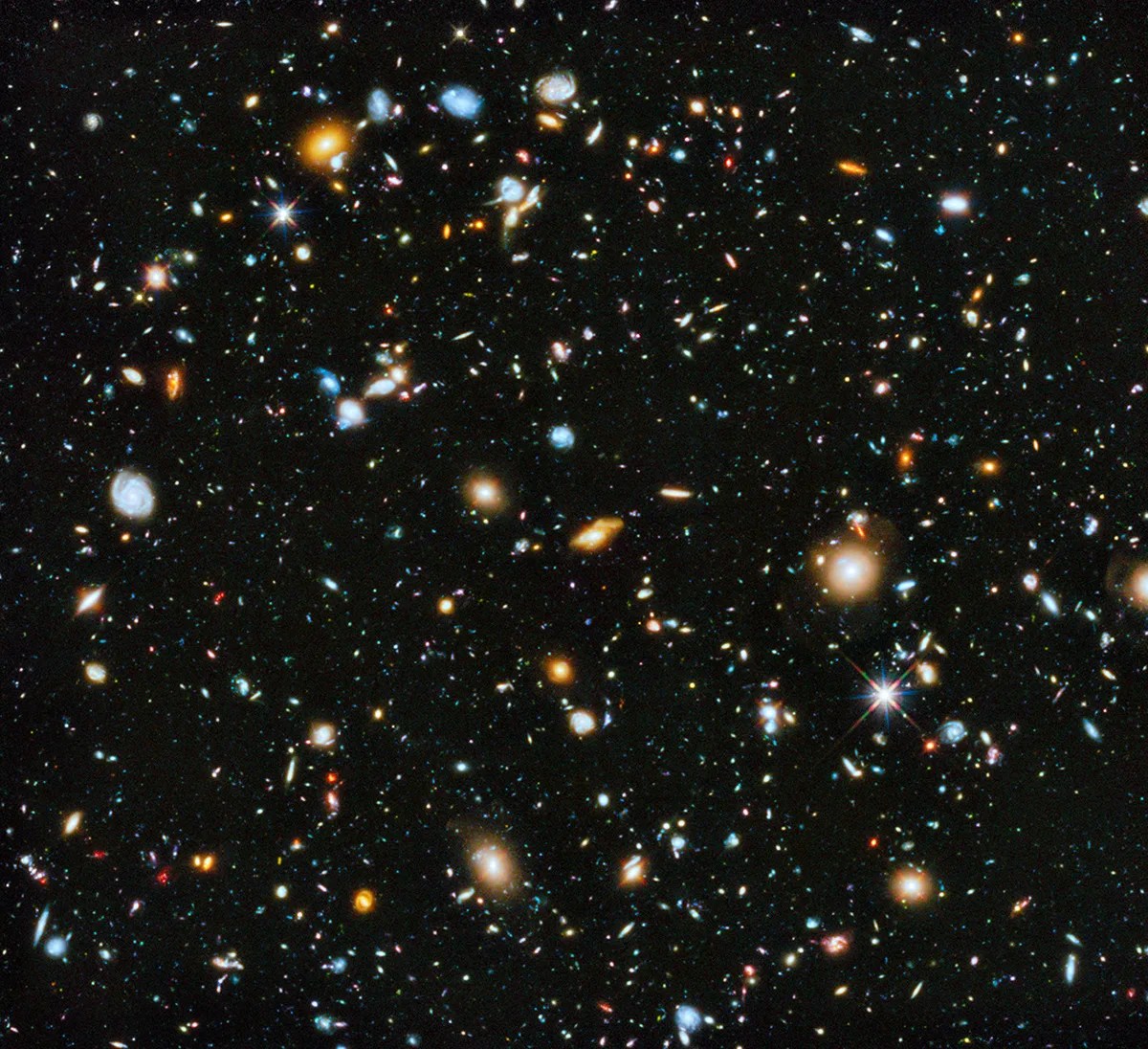
With this type of imagery, we can better understand how our universe changes over time by puzzling out how galaxies evolve. The farther back we look with Hubble, the closer we get to the the big bang, when the universe began – so the most distant galaxies observed by Hubble often appear to us as the “youngest” ones – giving us a sneak peek at the universe in its infancy. Because these galaxies emitted their light when they were young, we get to witness them in their early stages. These early galaxies often appear simpler and smaller than the grandiose spiral galaxies and merged galaxies we see closer to us in distance, and therefore in time. These young galaxies are actually old galaxies now as they have evolved over the time this light has taken to reach us.
Hubble’s farthest observation is of a galaxy named GN-z11, observed as it was 13.4 billion years in the past! This places it within just 400 million years of the big bang itself.
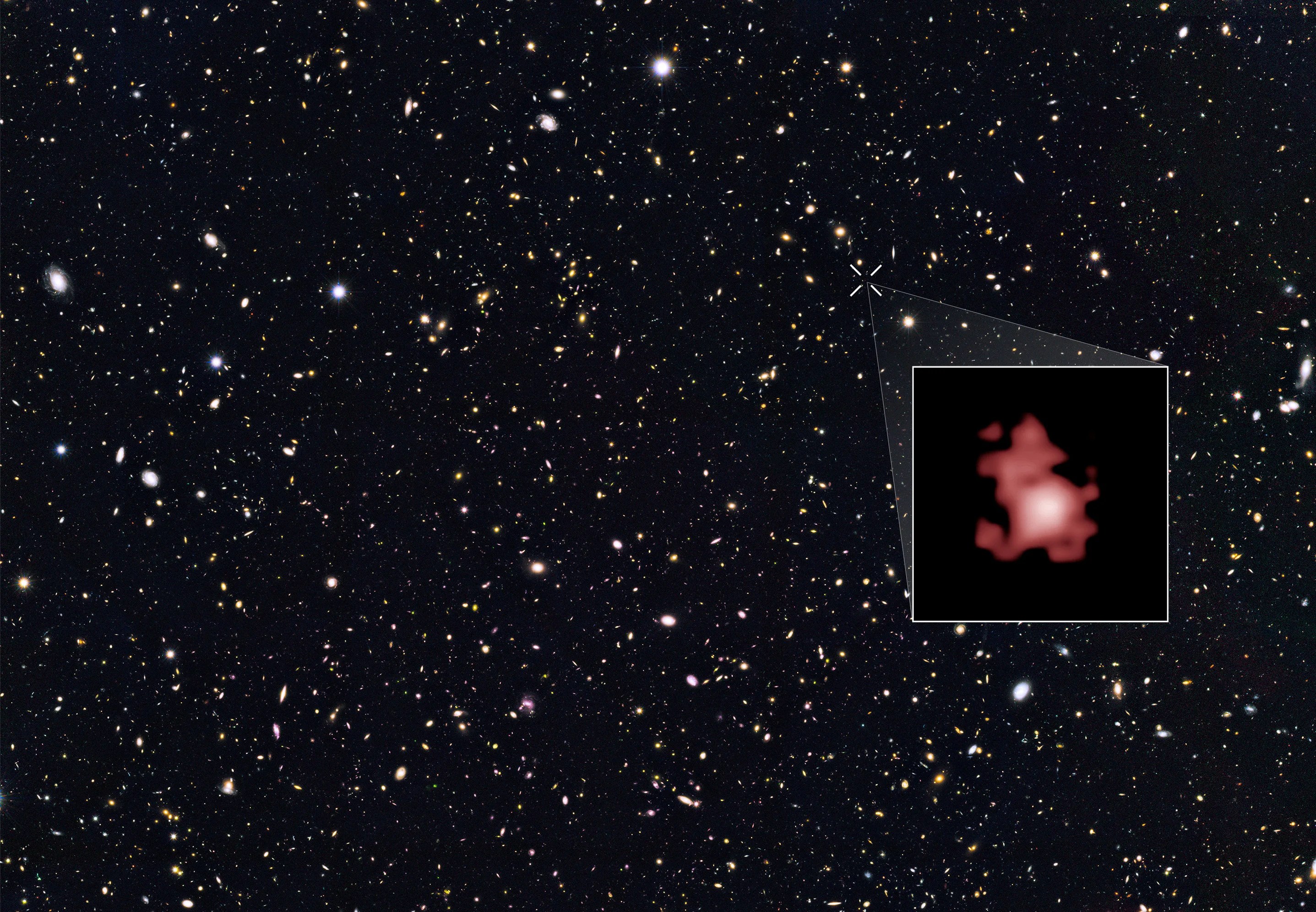
Watching Our Universe Over Time
Observations of the most distant objects, like GN-z11 and Earendel, give astronomers exciting insight into the environment of our early universe. The light we see literally traveled from all the way back then!
Our universe remains mysterious, mind-bendingly large, and ever-expanding, but by gathering light from near and far – from the recent past to the dawn of the universe itself – Hubble helps answer questions about where we are and how the universe works.
At its core, astronomy is really just archaeology. Cosmic objects give off light, letting us learn more about their lives. It can take a long, long time for light to reach Hubble – just one telescope orbiting just one planet in just one solar system in just one galaxy. Scientists use Hubble like the time machine that it is to piece together the history and mystery of the cosmos, giving us all a glimpse right up to the edge of the universe – and time itself.
Explore More Hubble
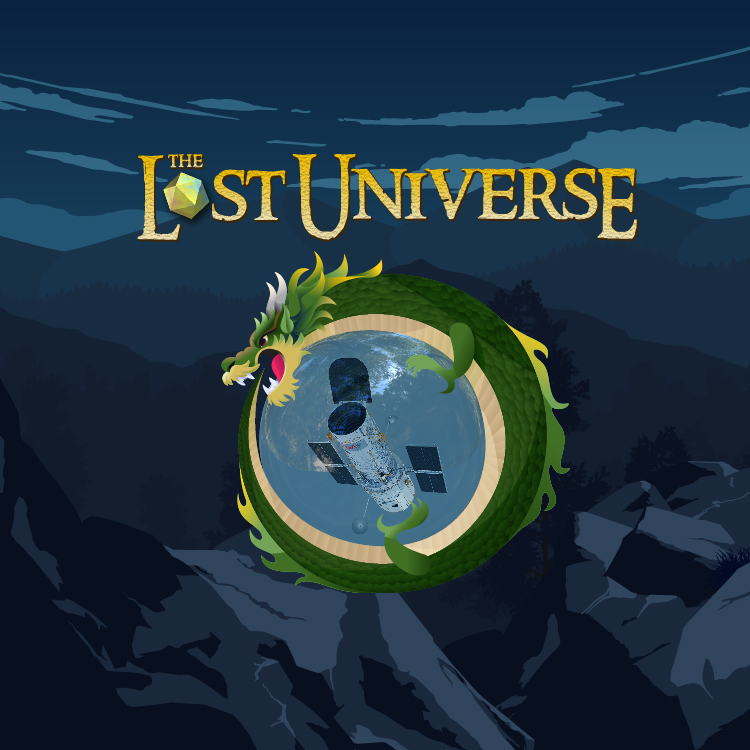
The Lost Universe
NASA's Hubble Space Telescope has vanished from Earth’s timeline. Only an ambitious crew of adventurers can uncover what was lost. Are you up to the challenge?
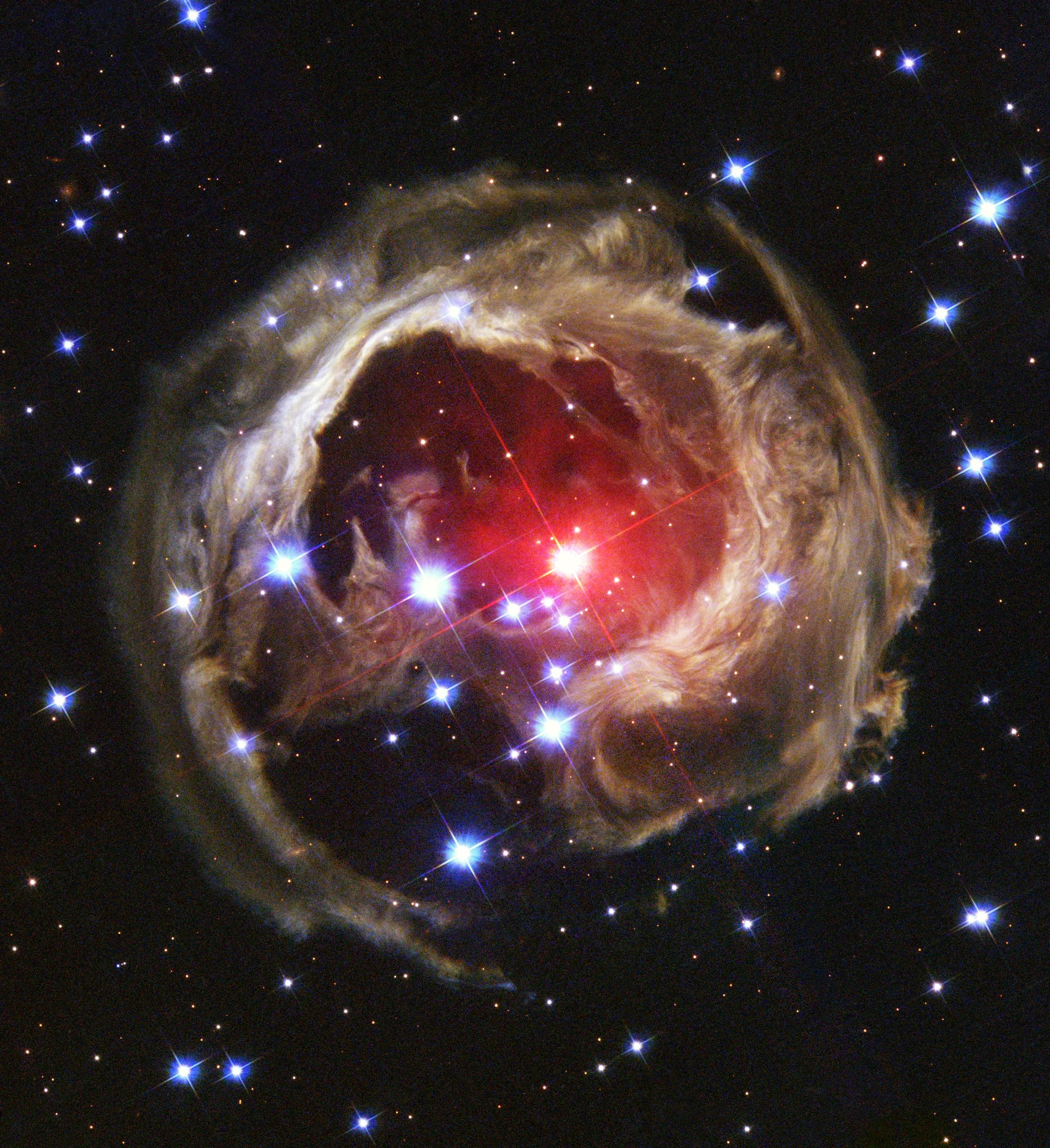
Hubble Science Highlights
Hubble has affected every area of astronomy. Its most notable scientific discoveries reflect the broad range of research and the breakthroughs it has achieved.
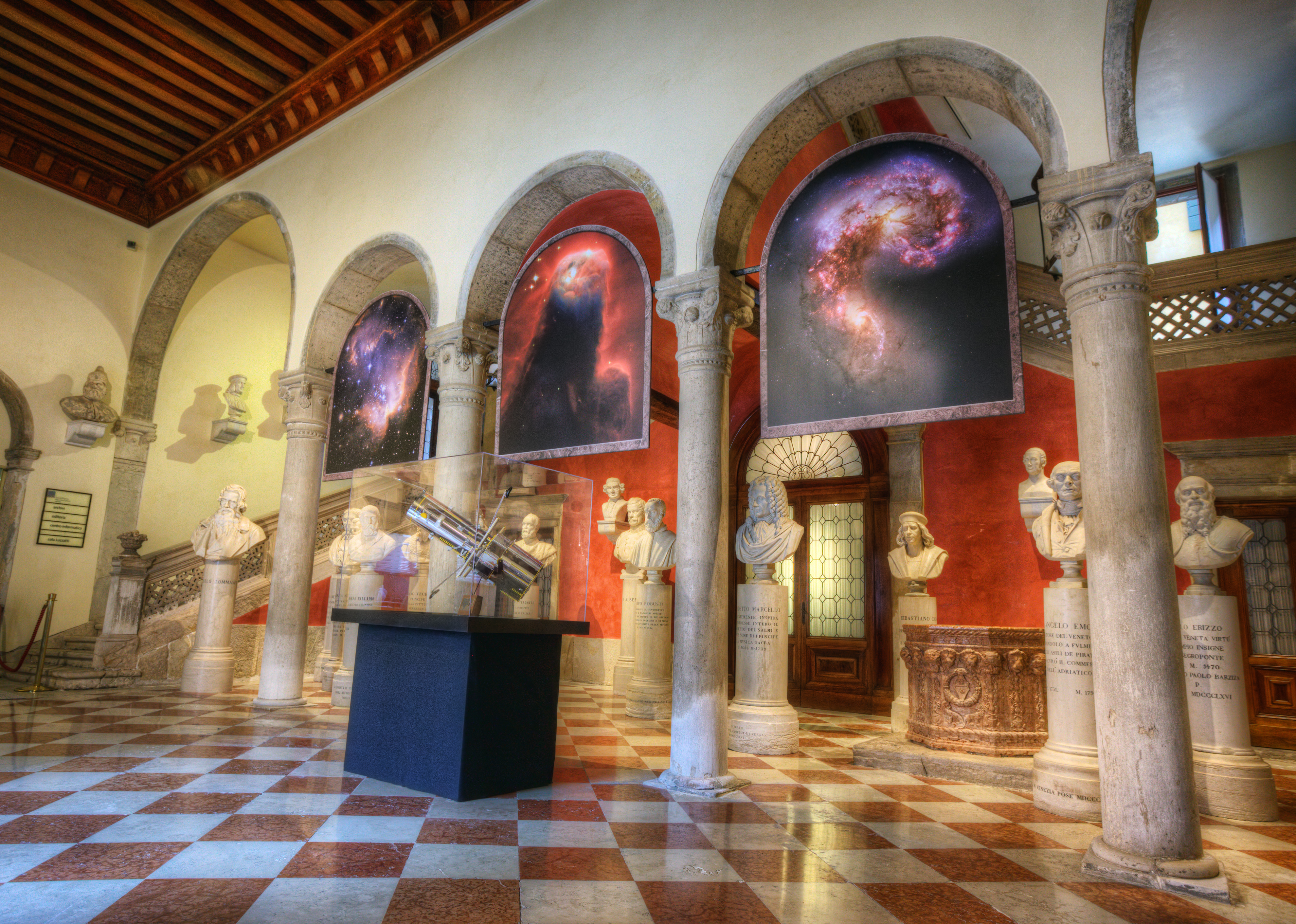
Hubble's Cultural Impact
Even if you don't know anything about the Hubble Space Telescope, its pictures have been a part of your life.
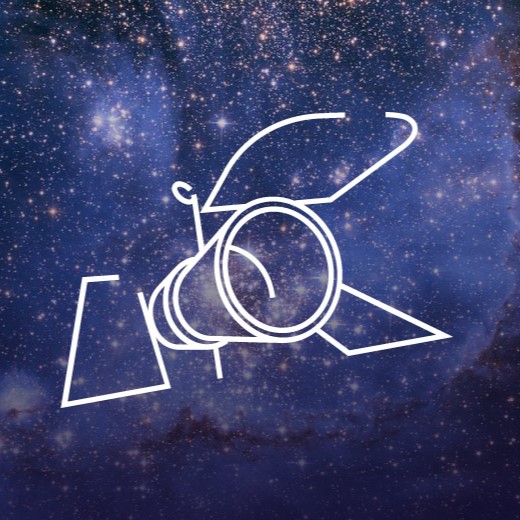
What is Hubble Observing?
See the area of sky Hubble is currently investigating or explore its upcoming and past targets.
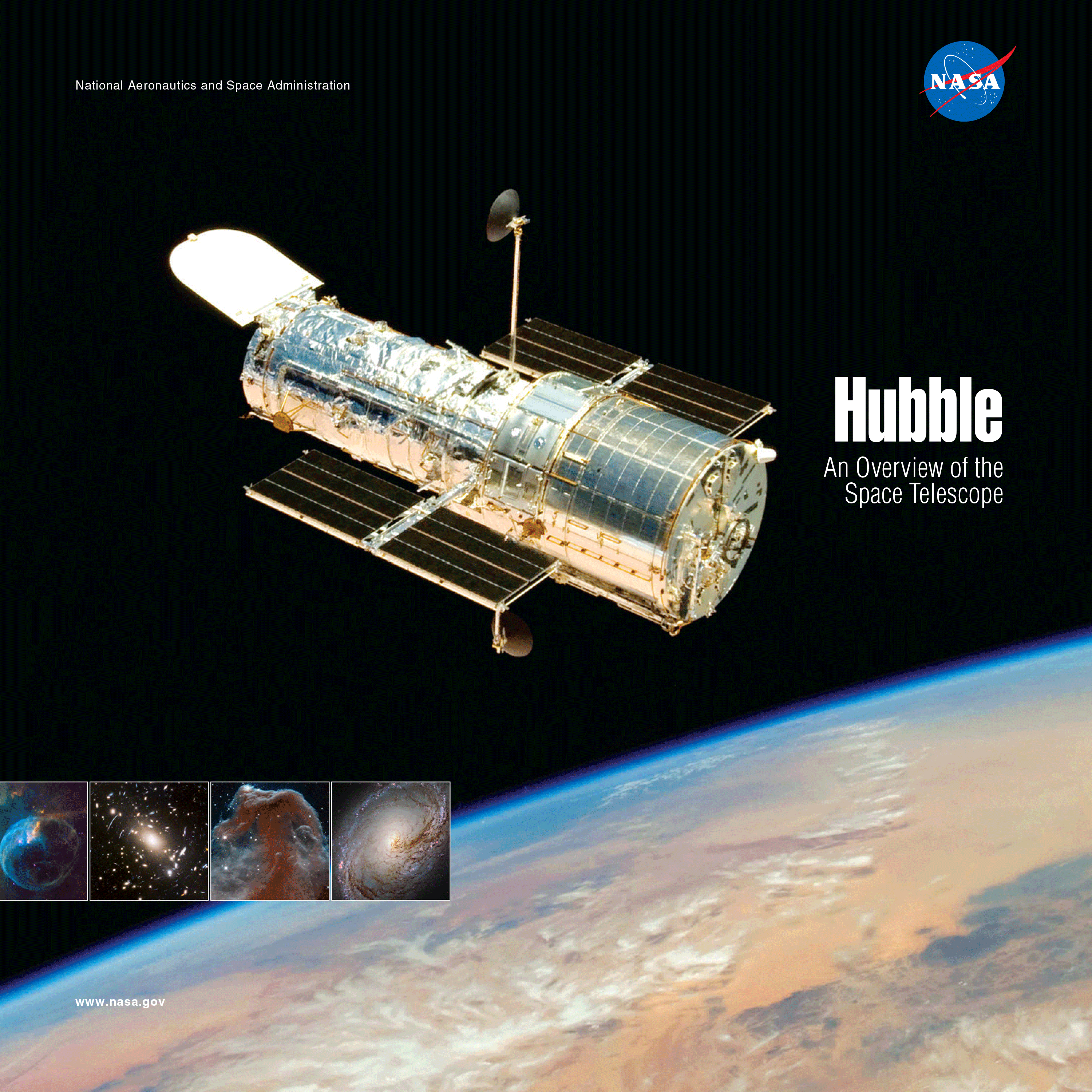
Hubble E-books
Investigate the mysteries of the universe with Hubble. Learn Hubble's history and dive deeper into its discoveries by downloading our e-books.
April 26, 2023
Is Time Travel Possible?
The laws of physics allow time travel. So why haven’t people become chronological hoppers?
By Sarah Scoles

yuanyuan yan/Getty Images
In the movies, time travelers typically step inside a machine and—poof—disappear. They then reappear instantaneously among cowboys, knights or dinosaurs. What these films show is basically time teleportation .
Scientists don’t think this conception is likely in the real world, but they also don’t relegate time travel to the crackpot realm. In fact, the laws of physics might allow chronological hopping, but the devil is in the details.
Time traveling to the near future is easy: you’re doing it right now at a rate of one second per second, and physicists say that rate can change. According to Einstein’s special theory of relativity, time’s flow depends on how fast you’re moving. The quicker you travel, the slower seconds pass. And according to Einstein’s general theory of relativity , gravity also affects clocks: the more forceful the gravity nearby, the slower time goes.
On supporting science journalism
If you're enjoying this article, consider supporting our award-winning journalism by subscribing . By purchasing a subscription you are helping to ensure the future of impactful stories about the discoveries and ideas shaping our world today.
“Near massive bodies—near the surface of neutron stars or even at the surface of the Earth, although it’s a tiny effect—time runs slower than it does far away,” says Dave Goldberg, a cosmologist at Drexel University.
If a person were to hang out near the edge of a black hole , where gravity is prodigious, Goldberg says, only a few hours might pass for them while 1,000 years went by for someone on Earth. If the person who was near the black hole returned to this planet, they would have effectively traveled to the future. “That is a real effect,” he says. “That is completely uncontroversial.”
Going backward in time gets thorny, though (thornier than getting ripped to shreds inside a black hole). Scientists have come up with a few ways it might be possible, and they have been aware of time travel paradoxes in general relativity for decades. Fabio Costa, a physicist at the Nordic Institute for Theoretical Physics, notes that an early solution with time travel began with a scenario written in the 1920s. That idea involved massive long cylinder that spun fast in the manner of straw rolled between your palms and that twisted spacetime along with it. The understanding that this object could act as a time machine allowing one to travel to the past only happened in the 1970s, a few decades after scientists had discovered a phenomenon called “closed timelike curves.”
“A closed timelike curve describes the trajectory of a hypothetical observer that, while always traveling forward in time from their own perspective, at some point finds themselves at the same place and time where they started, creating a loop,” Costa says. “This is possible in a region of spacetime that, warped by gravity, loops into itself.”
“Einstein read [about closed timelike curves] and was very disturbed by this idea,” he adds. The phenomenon nevertheless spurred later research.
Science began to take time travel seriously in the 1980s. In 1990, for instance, Russian physicist Igor Novikov and American physicist Kip Thorne collaborated on a research paper about closed time-like curves. “They started to study not only how one could try to build a time machine but also how it would work,” Costa says.
Just as importantly, though, they investigated the problems with time travel. What if, for instance, you tossed a billiard ball into a time machine, and it traveled to the past and then collided with its past self in a way that meant its present self could never enter the time machine? “That looks like a paradox,” Costa says.
Since the 1990s, he says, there’s been on-and-off interest in the topic yet no big breakthrough. The field isn’t very active today, in part because every proposed model of a time machine has problems. “It has some attractive features, possibly some potential, but then when one starts to sort of unravel the details, there ends up being some kind of a roadblock,” says Gaurav Khanna of the University of Rhode Island.
For instance, most time travel models require negative mass —and hence negative energy because, as Albert Einstein revealed when he discovered E = mc 2 , mass and energy are one and the same. In theory, at least, just as an electric charge can be positive or negative, so can mass—though no one’s ever found an example of negative mass. Why does time travel depend on such exotic matter? In many cases, it is needed to hold open a wormhole—a tunnel in spacetime predicted by general relativity that connects one point in the cosmos to another.
Without negative mass, gravity would cause this tunnel to collapse. “You can think of it as counteracting the positive mass or energy that wants to traverse the wormhole,” Goldberg says.
Khanna and Goldberg concur that it’s unlikely matter with negative mass even exists, although Khanna notes that some quantum phenomena show promise, for instance, for negative energy on very small scales. But that would be “nowhere close to the scale that would be needed” for a realistic time machine, he says.
These challenges explain why Khanna initially discouraged Caroline Mallary, then his graduate student at the University of Massachusetts Dartmouth, from doing a time travel project. Mallary and Khanna went forward anyway and came up with a theoretical time machine that didn’t require negative mass. In its simplistic form, Mallary’s idea involves two parallel cars, each made of regular matter. If you leave one parked and zoom the other with extreme acceleration, a closed timelike curve will form between them.
Easy, right? But while Mallary’s model gets rid of the need for negative matter, it adds another hurdle: it requires infinite density inside the cars for them to affect spacetime in a way that would be useful for time travel. Infinite density can be found inside a black hole, where gravity is so intense that it squishes matter into a mind-bogglingly small space called a singularity. In the model, each of the cars needs to contain such a singularity. “One of the reasons that there's not a lot of active research on this sort of thing is because of these constraints,” Mallary says.
Other researchers have created models of time travel that involve a wormhole, or a tunnel in spacetime from one point in the cosmos to another. “It's sort of a shortcut through the universe,” Goldberg says. Imagine accelerating one end of the wormhole to near the speed of light and then sending it back to where it came from. “Those two sides are no longer synced,” he says. “One is in the past; one is in the future.” Walk between them, and you’re time traveling.
You could accomplish something similar by moving one end of the wormhole near a big gravitational field—such as a black hole—while keeping the other end near a smaller gravitational force. In that way, time would slow down on the big gravity side, essentially allowing a particle or some other chunk of mass to reside in the past relative to the other side of the wormhole.
Making a wormhole requires pesky negative mass and energy, however. A wormhole created from normal mass would collapse because of gravity. “Most designs tend to have some similar sorts of issues,” Goldberg says. They’re theoretically possible, but there’s currently no feasible way to make them, kind of like a good-tasting pizza with no calories.
And maybe the problem is not just that we don’t know how to make time travel machines but also that it’s not possible to do so except on microscopic scales—a belief held by the late physicist Stephen Hawking. He proposed the chronology protection conjecture: The universe doesn’t allow time travel because it doesn’t allow alterations to the past. “It seems there is a chronology protection agency, which prevents the appearance of closed timelike curves and so makes the universe safe for historians,” Hawking wrote in a 1992 paper in Physical Review D .
Part of his reasoning involved the paradoxes time travel would create such as the aforementioned situation with a billiard ball and its more famous counterpart, the grandfather paradox : If you go back in time and kill your grandfather before he has children, you can’t be born, and therefore you can’t time travel, and therefore you couldn’t have killed your grandfather. And yet there you are.
Those complications are what interests Massachusetts Institute of Technology philosopher Agustin Rayo, however, because the paradoxes don’t just call causality and chronology into question. They also make free will seem suspect. If physics says you can go back in time, then why can’t you kill your grandfather? “What stops you?” he says. Are you not free?
Rayo suspects that time travel is consistent with free will, though. “What’s past is past,” he says. “So if, in fact, my grandfather survived long enough to have children, traveling back in time isn’t going to change that. Why will I fail if I try? I don’t know because I don’t have enough information about the past. What I do know is that I’ll fail somehow.”
If you went to kill your grandfather, in other words, you’d perhaps slip on a banana en route or miss the bus. “It's not like you would find some special force compelling you not to do it,” Costa says. “You would fail to do it for perfectly mundane reasons.”
In 2020 Costa worked with Germain Tobar, then his undergraduate student at the University of Queensland in Australia, on the math that would underlie a similar idea: that time travel is possible without paradoxes and with freedom of choice.
Goldberg agrees with them in a way. “I definitely fall into the category of [thinking that] if there is time travel, it will be constructed in such a way that it produces one self-consistent view of history,” he says. “Because that seems to be the way that all the rest of our physical laws are constructed.”
No one knows what the future of time travel to the past will hold. And so far, no time travelers have come to tell us about it.
A history of time travel: the how, the why and the when of turning back the clock
Pop on Aqua's 'Turn Back Time' and settle in

For most of human history, the world didn’t change very quickly. Until the 1700s, kids could largely expect their lives to be similar to their parents, and that their children would have an experience very similar to their own, too. There were obviously changes in how humans lived over longer stretches of time, but nothing that even different generations could easily observe.

My first introduction to science fiction was Valérian and Laureline. I was ten years old. Every Wednesday there was a magazine called Pilote in France, and there was two pages of Valerian every week. It was the first time I’d seen a girl and a guy in space, agents travelling in time and space. That was amazing.
The past is written. The present? We have to deal with it. But the future is a white page. So I don’t understand why people on this white page are putting all this darkness.
God! Let’s have some color! Let’s have some fun! Let’s at least imagine a better world. Maybe we won’t be able to do it, but we have to try.
The industrial revolution changed all of this. For the first time in human history, the pace of technological change was visible within a human lifespan.
It is not a coincidence that it was only after science and technological change became a normal part of the human experience, that time travel became something we dreamed of.
Time travel is actually somewhat unique in science fiction. Many core concepts have their origins earlier in history.
The historical roots of the concept of a 'robot' can be seen in Jewish folklore for example: Golems were anthropomorphic beings sculpted from clay. In Greek mythology, characters would travel to other worlds, and it's no coincidence that The Matrix features a character called Persephone. But time travel is different.
The first real work to envisage travelling in time was The Time Machine by HG Wells, which was published in 1895.
The book tells the story of a scientist who builds a machine that will take him to the year 802,701 - a world in which ape-like Morlocks are evolutionary descendants of humanity, and have regressed to a primitive lifestyle.
Get daily insight, inspiration and deals in your inbox
Get the hottest deals available in your inbox plus news, reviews, opinion, analysis and more from the TechRadar team.
The book was a product of its time - both in terms of the science played upon (Charles Darwin had only published Origin of the Species 35 years earlier), and the racist attitudes: it is speculated that the Morlocks were inspired by the Morlachs, a real ethnic group in the Balkans who were often characterised as “primitive”.
Real science
But of course, this was science fiction - what about science fact? The two have always been closely linked, and during the early days it was no different. In 1907, the physicist Hermann Minkowski first argued that Einstein’s Special Relativity could be expressed in geometric terms as a fourth dimension (to add to our known three) - which is exactly how Wells visualised time travel in his work of fiction.
The development of Special and then General Relativity was significant as it provided the theoretical backbone for how time travel could be conceived in scientific terms. In 1949 Kurt Gödel took Einstein’s work and came up with a solution which as a mathematical necessity included what he called “closed timelike curves” - the idea that if you travel far enough, time will loop back around (like how if you keep flying East, you’ll eventually end up back where you started).

In other words, using what became known as the Gödel Metric, it is theoretically possible to travel between any one point in time and space and any other.
There was just one problem: for Gödel’s theory to be right, the universe would have to be spinning - and scientists don’t believe that it is. So while the maths might make sense, Gödel’s universe does not appear to be the one we’re actually living in. Though he never gave up hope that he might be right: Apparently even on this deathbed, he would ask if anyone has found evidence of a spinning universe. And if he does ever turn out to be right, it means that time travel can happen, and is actually fairly straightforward (well, as far as physics goes anyway).
Since Gödel, scientists have continued to hypothesise about time travel, with perhaps the best known example being tachyons - or particles that move faster than the speed of light (therefore, effectively travelling in time). So far, despite one false alarm at CERN in 2011, there is no evidence that they actually exist.
Chancers and hoaxes
Of course, the lack of real science when it comes to time travel has not stopped some people from claiming to have done it. With the likes of Marty McFly and Doctor Who on the brain, chancers and hoaxers have realised that time travel is immediately a compelling prospect. Here’s a couple of amusing examples.

At the turn of the millennium, when the internet was still in its infancy, forums were captivated by the story of John Titor. Titor claimed he was from the year 2036, and had been sent back in time by the government to obtain an IBM 5100 computer. The thinking appeared to be that by obtaining the computer, the government could find a solution to the UNIX 2038 bug - in which clocks could be reset, Millennium Bug-style, leading to chaos everywhere.
Posting on the 'Time Travel Institute' forums, Titor went into details on how his time machine worked: It was powered by “two top-spin, dual positive singularities”, and used an X-ray venting system. He also gave a potted history of what humanity could expect: A new American civil war in 2004, and World War III in 2015. He also claimed the “many worlds” interpretation of quantum physics was true, hence why he wasn’t violating the so-called “grandfather paradox”.
Titor claimed he was from the year 2036, and had been sent back in time by the government to obtain an IBM 5100 computer.
Okay, so he probably wasn’t a real time traveller, but in the early days of the internet, when anonymity was more commonplace, he truly captured the imaginations of nerdy early adopters who perhaps, just a little bit, hoped that he might be the real thing.
More recently, in 2013, an Iranian scientist named Ali Razeghi claimed to have invented a time machine of sorts. It was supposedly capable of predicting the next 5-8 years for an individual, with up to 98% accuracy. According to The Telegraph , Razeghi said the invention fits into the size of a standard PC case and “It will not take you into the future, it will bring the future to you”. The idea is that the Iranian government could use it to predict future security threats and military confrontations. So perhaps it is time to check in and see if he managed to predict Donald Trump?
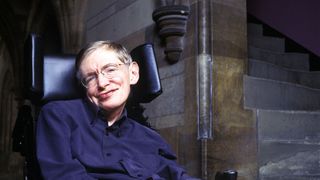
So is this the best we can do? Will we ever manage to crack time travel? Some scientists are still sceptical that it could ever be possible. This includes Stephen Hawking, who proposed the 'Chronology Protection Conjecture' – which is what it sounds like. Essentially, he argues that the laws of physics are as they are to specifically make time travel impossible – on all but “submicroscopic” scales. Essentially, this is to protect how causality works, as if we are suddenly allowed to travel back and kill our grandfathers, it would create massive time paradoxes.
Hawking revealed to Ars Technica in 2012 how he had held a party for time travellers, but only sent out invitations after the date it was held. So did the party support his argument that time travel is impossible? Or did he end up spending the evening in the company of John Titor and Doctor Who?
“I sat there a long time, but no one came”, he said, much to our disappointment.
Huge thanks to Stephen Jorgenson-Murray for walking us through some of the more brain-mangling science for this article.

To celebrate the release of Valerian and the City of a Thousand Planets , Luc Besson is today behind the lens at TechRadar. Here’s what we’ve got in store for you:
- Luc Besson presents TechRadar
- From Verne to Valerian: how France became the home of sci-fi
- Luc Besson talks streaming, viral videos and cinema tech
- Star spangled glamour: making space travel cooler than ever before
- A history of time travel: the how, the why and the when
- 20 best sci-fi films on Netflix and Amazon Prime
- Amazing future tech from sci-fi films that totally exist now
Valerian and the City of a Thousand Planets is released in UK cinemas August 2nd, and is out now in the US.
Best Buy's huge 3-day sale just went live - shop the 15 best tech deals from $59.99
eBay’s refurbished tech revolution – a quest to prevent e-waste and save you money
Paleblue Earth batteries eliminate the one big pain point of rechargeables
Most Popular
- 2 NYT Strands today — hints, answers and spangram for Thursday, April 25 (game #53)
- 3 Amazon has a ton of cheap tech gadgets on sale – I've found the 13 best ones
- 4 Meta’s massive OS announcement is more exciting than a Meta Quest 4 reveal, and VR will never be the same again
- 5 Fallout 4 current-gen update drops today with a performance and quality mode
- 2 Sony dropped OLED for its flagship 2024 TV – here's why
- 3 Sony’s wearable air conditioner is the first step towards a real Dune stillsuit
- 4 This Android phone for audiophiles offers a hi-res DAC, balanced output and 3.5mm jack – plus a cool cyberpunk look that puts Google and OnePlus to shame
- 5 Sony merging with Paramount Plus could be bad news for Netflix – here’s why

Where Does the Concept of Time Travel Come From?
Time; he's waiting in the wings.

The dream of traveling through time is both ancient and universal. But where did humanity's fascination with time travel begin, and why is the idea so appealing?
The concept of time travel — moving through time the way we move through three-dimensional space — may in fact be hardwired into our perception of time . Linguists have recognized that we are essentially incapable of talking about temporal matters without referencing spatial ones. "In language — any language — no two domains are more intimately linked than space and time," wrote Israeli linguist Guy Deutscher in his 2005 book "The Unfolding of Language." "Even if we are not always aware of it, we invariably speak of time in terms of space, and this reflects the fact that we think of time in terms of space."
Deutscher reminds us that when we plan to meet a friend "around" lunchtime, we are using a metaphor, since lunchtime doesn't have any physical sides. He similarly points out that time can not literally be "long" or "short" like a stick, nor "pass" like a train, or even go "forward" or "backward" any more than it goes sideways, diagonal or down.
Related: Why Does Time Fly When You're Having Fun?
Perhaps because of this connection between space and time, the possibility that time can be experienced in different ways and traveled through has surprisingly early roots. One of the first known examples of time travel appears in the Mahabharata, an ancient Sanskrit epic poem compiled around 400 B.C., Lisa Yaszek, a professor of science fiction studies at the Georgia Institute of Technology in Atlanta, told Live Science
In the Mahabharata is a story about King Kakudmi, who lived millions of years ago and sought a suitable husband for his beautiful and accomplished daughter, Revati. The two travel to the home of the creator god Brahma to ask for advice. But while in Brahma's plane of existence, they must wait as the god listens to a 20-minute song, after which Brahma explains that time moves differently in the heavens than on Earth. It turned out that "27 chatur-yugas" had passed, or more than 116 million years, according to an online summary , and so everyone Kakudmi and Revati had ever known, including family members and potential suitors, was dead. After this shock, the story closes on a somewhat happy ending in that Revati is betrothed to Balarama, twin brother of the deity Krishna.
Time is fleeting
To Yaszek, the tale provides an example of what we now call time dilation , in which different observers measure different lengths of time based on their relative frames of reference, a part of Einstein's theory of relativity.
Sign up for the Live Science daily newsletter now
Get the world’s most fascinating discoveries delivered straight to your inbox.
Such time-slip stories are widespread throughout the world, Yaszek said, citing a Middle Eastern tale from the first century BCE about a Jewish miracle worker who sleeps beneath a newly-planted carob tree and wakes up 70 years later to find it has now matured and borne fruit (carob trees are notorious for how long they take to produce their first harvest). Another instance can be found in an eighth-century Japanese fable about a fisherman named Urashima Tarō who travels to an undersea palace and falls in love with a princess. Tarō finds that, when he returns home, 100 years have passed, according to a translation of the tale published online by the University of South Florida .
In the early-modern era of the 1700 and 1800s, the sleep-story version of time travel grew more popular, Yaszek said. Examples include the classic tale of Rip Van Winkle, as well as books like Edward Belamy's utopian 1888 novel "Looking Backwards," in which a man wakes up in the year 2000, and the H.G. Wells 1899 novel "The Sleeper Awakes," about a man who slumbers for centuries and wakes to a completely transformed London.
Related: Science Fiction or Fact: Is Time Travel Possible ?
In other stories from this period, people also start to be able to move backward in time. In Mark Twain’s 1889 satire "A Connecticut Yankee in King Arthur's Court," a blow to the head propels an engineer back to the reign of the legendary British monarch. Objects that can send someone through time begin to appear as well, mainly clocks, such as in Edward Page Mitchell's 1881 story "The Clock that Went Backwards" or Lewis Carrol's 1889 children's fantasy "Sylvie and Bruno," where the characters possess a watch that is a type of time machine .
The explosion of such stories during this era might come from the fact that people were "beginning to standardize time, and orient themselves to clocks more frequently," Yaszek said.
Time after time
Wells provided one of the most enduring time-travel plots in his 1895 novella "The Time Machine," which included the innovation of a craft that can move forward and backward through long spans of time. "This is when we’re getting steam engines and trains and the first automobiles," Yaszek said. "I think it’s no surprise that Wells suddenly thinks: 'Hey, maybe we can use a vehicle to travel through time.'"
Because it is such a rich visual icon, many beloved time-travel stories written after this have included a striking time machine, Yaszek said, referencing The Doctor's blue police box — the TARDIS — in the long-running BBC series "Doctor Who," and "Back to the Future"'s silver luxury speedster, the DeLorean .
More recently, time travel has been used to examine our relationship with the past, Yaszek said, in particular in pieces written by women and people of color. Octavia Butler's 1979 novel "Kindred" about a modern woman who visits her pre-Civil-War ancestors is "a marvelous story that really asks us to rethink black and white relations through history," she said. And a contemporary web series called " Send Me " involves an African-American psychic who can guide people back to antebellum times and witness slavery.
"I'm really excited about stories like that," Yaszek said. "They help us re-see history from new perspectives."
Time travel has found a home in a wide variety of genres and media, including comedies such as "Groundhog Day" and "Bill and Ted's Excellent Adventure" as well as video games like Nintendo's "The Legend of Zelda: Majora's Mask" and the indie game "Braid."
Yaszek suggested that this malleability and ubiquity speaks to time travel tales' ability to offer an escape from our normal reality. "They let us imagine that we can break free from the grip of linear time," she said. "And somehow get a new perspective on the human experience, either our own or humanity as a whole, and I think that feels so exciting to us."
That modern people are often drawn to time-machine stories in particular might reflect the fact that we live in a technological world, she added. Yet time travel's appeal certainly has deeper roots, interwoven into the very fabric of our language and appearing in some of our earliest imaginings.
"I think it's a way to make sense of the otherwise intangible and inexplicable, because it's hard to grasp time," Yaszek said. "But this is one of the final frontiers, the frontier of time, of life and death. And we're all moving forward, we're all traveling through time."
- If There Were a Time Warp, How Would Physicists Find It?
- Can Animals Tell Time?
- Why Does Time Sometimes Fly When You're NOT Having Fun?
Originally published on Live Science .

Adam Mann is a freelance journalist with over a decade of experience, specializing in astronomy and physics stories. He has a bachelor's degree in astrophysics from UC Berkeley. His work has appeared in the New Yorker, New York Times, National Geographic, Wall Street Journal, Wired, Nature, Science, and many other places. He lives in Oakland, California, where he enjoys riding his bike.
Why do people feel like they're being watched, even when no one is there?
Why do babies rub their eyes when they're tired?
Space photo of the week: Little Dumbbell Nebula throws a wild party for Hubble telescope's 34th anniversary
Most Popular
- 2 James Webb telescope confirms there is something seriously wrong with our understanding of the universe
- 3 Giant, 82-foot lizard fish discovered on UK beach could be largest marine reptile ever found
- 4 Global 'time signals' subtly shifted as the total solar eclipse reshaped Earth's upper atmosphere, new data shows
- 5 'I nearly fell out of my chair': 1,800-year-old mini portrait of Alexander the Great found in a field in Denmark
- 2 New UTI vaccine wards off infection for years, early studies suggest
- 3 Tweak to Schrödinger's cat equation could unite Einstein's relativity and quantum mechanics, study hints
- 4 Why does striking flint against steel start a fire?
- 5 32 times lasers revealed hidden forts and settlements from centuries ago

- Table of Contents
- Random Entry
- Chronological
- Editorial Information
- About the SEP
- Editorial Board
- How to Cite the SEP
- Special Characters
- Advanced Tools
- Support the SEP
- PDFs for SEP Friends
- Make a Donation
- SEPIA for Libraries
- Entry Contents
Bibliography
Academic tools.
- Friends PDF Preview
- Author and Citation Info
- Back to Top
Time Travel
There is an extensive literature on time travel in both philosophy and physics. Part of the great interest of the topic stems from the fact that reasons have been given both for thinking that time travel is physically possible—and for thinking that it is logically impossible! This entry deals primarily with philosophical issues; issues related to the physics of time travel are covered in the separate entries on time travel and modern physics and time machines . We begin with the definitional question: what is time travel? We then turn to the major objection to the possibility of backwards time travel: the Grandfather paradox. Next, issues concerning causation are discussed—and then, issues in the metaphysics of time and change. We end with a discussion of the question why, if backwards time travel will ever occur, we have not been visited by time travellers from the future.
1.1 Time Discrepancy
1.2 changing the past, 2.1 can and cannot, 2.2 improbable coincidences, 2.3 inexplicable occurrences, 3.1 backwards causation, 3.2 causal loops, 4.1 time travel and time, 4.2 time travel and change, 5. where are the time travellers, other internet resources, related entries, 1. what is time travel.
There is a number of rather different scenarios which would seem, intuitively, to count as ‘time travel’—and a number of scenarios which, while sharing certain features with some of the time travel cases, seem nevertheless not to count as genuine time travel: [ 1 ]
Time travel Doctor . Doctor Who steps into a machine in 2024. Observers outside the machine see it disappear. Inside the machine, time seems to Doctor Who to pass for ten minutes. Observers in 1984 (or 3072) see the machine appear out of nowhere. Doctor Who steps out. [ 2 ] Leap . The time traveller takes hold of a special device (or steps into a machine) and suddenly disappears; she appears at an earlier (or later) time. Unlike in Doctor , the time traveller experiences no lapse of time between her departure and arrival: from her point of view, she instantaneously appears at the destination time. [ 3 ] Putnam . Oscar Smith steps into a machine in 2024. From his point of view, things proceed much as in Doctor : time seems to Oscar Smith to pass for a while; then he steps out in 1984. For observers outside the machine, things proceed differently. Observers of Oscar’s arrival in the past see a time machine suddenly appear out of nowhere and immediately divide into two copies of itself: Oscar Smith steps out of one; and (through the window) they see inside the other something that looks just like what they would see if a film of Oscar Smith were played backwards (his hair gets shorter; food comes out of his mouth and goes back into his lunch box in a pristine, uneaten state; etc.). Observers of Oscar’s departure from the future do not simply see his time machine disappear after he gets into it: they see it collide with the apparently backwards-running machine just described, in such a way that both are simultaneously annihilated. [ 4 ] Gödel . The time traveller steps into an ordinary rocket ship (not a special time machine) and flies off on a certain course. At no point does she disappear (as in Leap ) or ‘turn back in time’ (as in Putnam )—yet thanks to the overall structure of spacetime (as conceived in the General Theory of Relativity), the traveller arrives at a point in the past (or future) of her departure. (Compare the way in which someone can travel continuously westwards, and arrive to the east of her departure point, thanks to the overall curved structure of the surface of the earth.) [ 5 ] Einstein . The time traveller steps into an ordinary rocket ship and flies off at high speed on a round trip. When he returns to Earth, thanks to certain effects predicted by the Special Theory of Relativity, only a very small amount of time has elapsed for him—he has aged only a few months—while a great deal of time has passed on Earth: it is now hundreds of years in the future of his time of departure. [ 6 ] Not time travel Sleep . One is very tired, and falls into a deep sleep. When one awakes twelve hours later, it seems from one’s own point of view that hardly any time has passed. Coma . One is in a coma for a number of years and then awakes, at which point it seems from one’s own point of view that hardly any time has passed. Cryogenics . One is cryogenically frozen for hundreds of years. Upon being woken, it seems from one’s own point of view that hardly any time has passed. Virtual . One enters a highly realistic, interactive virtual reality simulator in which some past era has been recreated down to the finest detail. Crystal . One looks into a crystal ball and sees what happened at some past time, or will happen at some future time. (Imagine that the crystal ball really works—like a closed-circuit security monitor, except that the vision genuinely comes from some past or future time. Even so, the person looking at the crystal ball is not thereby a time traveller.) Waiting . One enters one’s closet and stays there for seven hours. When one emerges, one has ‘arrived’ seven hours in the future of one’s ‘departure’. Dateline . One departs at 8pm on Monday, flies for fourteen hours, and arrives at 10pm on Monday.
A satisfactory definition of time travel would, at least, need to classify the cases in the right way. There might be some surprises—perhaps, on the best definition of ‘time travel’, Cryogenics turns out to be time travel after all—but it should certainly be the case, for example, that Gödel counts as time travel and that Sleep and Waiting do not. [ 7 ]
In fact there is no entirely satisfactory definition of ‘time travel’ in the literature. The most popular definition is the one given by Lewis (1976, 145–6):
What is time travel? Inevitably, it involves a discrepancy between time and time. Any traveller departs and then arrives at his destination; the time elapsed from departure to arrival…is the duration of the journey. But if he is a time traveller, the separation in time between departure and arrival does not equal the duration of his journey.…How can it be that the same two events, his departure and his arrival, are separated by two unequal amounts of time?…I reply by distinguishing time itself, external time as I shall also call it, from the personal time of a particular time traveller: roughly, that which is measured by his wristwatch. His journey takes an hour of his personal time, let us say…But the arrival is more than an hour after the departure in external time, if he travels toward the future; or the arrival is before the departure in external time…if he travels toward the past.
This correctly excludes Waiting —where the length of the ‘journey’ precisely matches the separation between ‘arrival’ and ‘departure’—and Crystal , where there is no journey at all—and it includes Doctor . It has trouble with Gödel , however—because when the overall structure of spacetime is as twisted as it is in the sort of case Gödel imagined, the notion of external time (“time itself”) loses its grip.
Another definition of time travel that one sometimes encounters in the literature (Arntzenius, 2006, 602) (Smeenk and Wüthrich, 2011, 5, 26) equates time travel with the existence of CTC’s: closed timelike curves. A curve in this context is a line in spacetime; it is timelike if it could represent the career of a material object; and it is closed if it returns to its starting point (i.e. in spacetime—not merely in space). This now includes Gödel —but it excludes Einstein .
The lack of an adequate definition of ‘time travel’ does not matter for our purposes here. [ 8 ] It suffices that we have clear cases of (what would count as) time travel—and that these cases give rise to all the problems that we shall wish to discuss.
Some authors (in philosophy, physics and science fiction) consider ‘time travel’ scenarios in which there are two temporal dimensions (e.g. Meiland (1974)), and others consider scenarios in which there are multiple ‘parallel’ universes—each one with its own four-dimensional spacetime (e.g. Deutsch and Lockwood (1994)). There is a question whether travelling to another version of 2001 (i.e. not the very same version one experienced in the past)—a version at a different point on the second time dimension, or in a different parallel universe—is really time travel, or whether it is more akin to Virtual . In any case, this kind of scenario does not give rise to many of the problems thrown up by the idea of travelling to the very same past one experienced in one’s younger days. It is these problems that form the primary focus of the present entry, and so we shall not have much to say about other kinds of ‘time travel’ scenario in what follows.
One objection to the possibility of time travel flows directly from attempts to define it in anything like Lewis’s way. The worry is that because time travel involves “a discrepancy between time and time”, time travel scenarios are simply incoherent. The time traveller traverses thirty years in one year; she is 51 years old 21 years after her birth; she dies at the age of 100, 200 years before her birth; and so on. The objection is that these are straightforward contradictions: the basic description of what time travel involves is inconsistent; therefore time travel is logically impossible. [ 9 ]
There must be something wrong with this objection, because it would show Einstein to be logically impossible—whereas this sort of future-directed time travel has actually been observed (albeit on a much smaller scale—but that does not affect the present point) (Hafele and Keating, 1972b,a). The most common response to the objection is that there is no contradiction because the interval of time traversed by the time traveller and the duration of her journey are measured with respect to different frames of reference: there is thus no reason why they should coincide. A similar point applies to the discrepancy between the time elapsed since the time traveller’s birth and her age upon arrival. There is no more of a contradiction here than in the fact that Melbourne is both 800 kilometres away from Sydney—along the main highway—and 1200 kilometres away—along the coast road. [ 10 ]
Before leaving the question ‘What is time travel?’ we should note the crucial distinction between changing the past and participating in (aka affecting or influencing) the past. [ 11 ] In the popular imagination, backwards time travel would allow one to change the past: to right the wrongs of history, to prevent one’s younger self doing things one later regretted, and so on. In a model with a single past, however, this idea is incoherent: the very description of the case involves a contradiction (e.g. the time traveller burns all her diaries at midnight on her fortieth birthday in 1976, and does not burn all her diaries at midnight on her fortieth birthday in 1976). It is not as if there are two versions of the past: the original one, without the time traveller present, and then a second version, with the time traveller playing a role. There is just one past—and two perspectives on it: the perspective of the younger self, and the perspective of the older time travelling self. If these perspectives are inconsistent (e.g. an event occurs in one but not the other) then the time travel scenario is incoherent.
This means that time travellers can do less than we might have hoped: they cannot right the wrongs of history; they cannot even stir a speck of dust on a certain day in the past if, on that day, the speck was in fact unmoved. But this does not mean that time travellers must be entirely powerless in the past: while they cannot do anything that did not actually happen, they can (in principle) do anything that did happen. Time travellers cannot change the past: they cannot make it different from the way it was—but they can participate in it: they can be amongst the people who did make the past the way it was. [ 12 ]
What about models involving two temporal dimensions, or parallel universes—do they allow for coherent scenarios in which the past is changed? [ 13 ] There is certainly no contradiction in saying that the time traveller burns all her diaries at midnight on her fortieth birthday in 1976 in universe 1 (or at hypertime A ), and does not burn all her diaries at midnight on her fortieth birthday in 1976 in universe 2 (or at hypertime B ). The question is whether this kind of story involves changing the past in the sense originally envisaged: righting the wrongs of history, preventing subsequently regretted actions, and so on. Goddu (2003) and van Inwagen (2010) argue that it does (in the context of particular hypertime models), while Smith (1997, 365–6; 2015) argues that it does not: that it involves avoiding the past—leaving it untouched while travelling to a different version of the past in which things proceed differently.
2. The Grandfather Paradox
The most important objection to the logical possibility of backwards time travel is the so-called Grandfather paradox. This paradox has actually convinced many people that backwards time travel is impossible:
The dead giveaway that true time-travel is flatly impossible arises from the well-known “paradoxes” it entails. The classic example is “What if you go back into the past and kill your grandfather when he was still a little boy?”…So complex and hopeless are the paradoxes…that the easiest way out of the irrational chaos that results is to suppose that true time-travel is, and forever will be, impossible. (Asimov 1995 [2003, 276–7]) travel into one’s past…would seem to give rise to all sorts of logical problems, if you were able to change history. For example, what would happen if you killed your parents before you were born. It might be that one could avoid such paradoxes by some modification of the concept of free will. But this will not be necessary if what I call the chronology protection conjecture is correct: The laws of physics prevent closed timelike curves from appearing . (Hawking, 1992, 604) [ 14 ]
The paradox comes in different forms. Here’s one version:
If time travel was logically possible then the time traveller could return to the past and in a suicidal rage destroy his time machine before it was completed and murder his younger self. But if this was so a necessary condition for the time trip to have occurred at all is removed, and we should then conclude that the time trip did not occur. Hence if the time trip did occur, then it did not occur. Hence it did not occur, and it is necessary that it did not occur. To reply, as it is standardly done, that our time traveller cannot change the past in this way, is a petitio principii . Why is it that the time traveller is constrained in this way? What mysterious force stills his sudden suicidal rage? (Smith, 1985, 58)
The idea is that backwards time travel is impossible because if it occurred, time travellers would attempt to do things such as kill their younger selves (or their grandfathers etc.). We know that doing these things—indeed, changing the past in any way—is impossible. But were there time travel, there would then be nothing left to stop these things happening. If we let things get to the stage where the time traveller is facing Grandfather with a loaded weapon, then there is nothing left to prevent the impossible from occurring. So we must draw the line earlier: it must be impossible for someone to get into this situation at all; that is, backwards time travel must be impossible.
In order to defend the possibility of time travel in the face of this argument we need to show that time travel is not a sure route to doing the impossible. So, given that a time traveller has gone to the past and is facing Grandfather, what could stop her killing Grandfather? Some science fiction authors resort to the idea of chaperones or time guardians who prevent time travellers from changing the past—or to mysterious forces of logic. But it is hard to take these ideas seriously—and more importantly, it is hard to make them work in detail when we remember that changing the past is impossible. (The chaperone is acting to ensure that the past remains as it was—but the only reason it ever was that way is because of his very actions.) [ 15 ] Fortunately there is a better response—also to be found in the science fiction literature, and brought to the attention of philosophers by Lewis (1976). What would stop the time traveller doing the impossible? She would fail “for some commonplace reason”, as Lewis (1976, 150) puts it. Her gun might jam, a noise might distract her, she might slip on a banana peel, etc. Nothing more than such ordinary occurrences is required to stop the time traveller killing Grandfather. Hence backwards time travel does not entail the occurrence of impossible events—and so the above objection is defused.
A problem remains. Suppose Tim, a time-traveller, is facing his grandfather with a loaded gun. Can Tim kill Grandfather? On the one hand, yes he can. He is an excellent shot; there is no chaperone to stop him; the laws of logic will not magically stay his hand; he hates Grandfather and will not hesitate to pull the trigger; etc. On the other hand, no he can’t. To kill Grandfather would be to change the past, and no-one can do that (not to mention the fact that if Grandfather died, then Tim would not have been born). So we have a contradiction: Tim can kill Grandfather and Tim cannot kill Grandfather. Time travel thus leads to a contradiction: so it is impossible.
Note the difference between this version of the Grandfather paradox and the version considered above. In the earlier version, the contradiction happens if Tim kills Grandfather. The solution was to say that Tim can go into the past without killing Grandfather—hence time travel does not entail a contradiction. In the new version, the contradiction happens as soon as Tim gets to the past. Of course Tim does not kill Grandfather—but we still have a contradiction anyway: for he both can do it, and cannot do it. As Lewis puts it:
Could a time traveler change the past? It seems not: the events of a past moment could no more change than numbers could. Yet it seems that he would be as able as anyone to do things that would change the past if he did them. If a time traveler visiting the past both could and couldn’t do something that would change it, then there cannot possibly be such a time traveler. (Lewis, 1976, 149)
Lewis’s own solution to this problem has been widely accepted. [ 16 ] It turns on the idea that to say that something can happen is to say that its occurrence is compossible with certain facts, where context determines (more or less) which facts are the relevant ones. Tim’s killing Grandfather in 1921 is compossible with the facts about his weapon, training, state of mind, and so on. It is not compossible with further facts, such as the fact that Grandfather did not die in 1921. Thus ‘Tim can kill Grandfather’ is true in one sense (relative to one set of facts) and false in another sense (relative to another set of facts)—but there is no single sense in which it is both true and false. So there is no contradiction here—merely an equivocation.
Another response is that of Vihvelin (1996), who argues that there is no contradiction here because ‘Tim can kill Grandfather’ is simply false (i.e. contra Lewis, there is no legitimate sense in which it is true). According to Vihvelin, for ‘Tim can kill Grandfather’ to be true, there must be at least some occasions on which ‘If Tim had tried to kill Grandfather, he would or at least might have succeeded’ is true—but, Vihvelin argues, at any world remotely like ours, the latter counterfactual is always false. [ 17 ]
Return to the original version of the Grandfather paradox and Lewis’s ‘commonplace reasons’ response to it. This response engenders a new objection—due to Horwich (1987)—not to the possibility but to the probability of backwards time travel.
Think about correlated events in general. Whenever we see two things frequently occurring together, this is because one of them causes the other, or some third thing causes both. Horwich calls this the Principle of V-Correlation:
if events of type A and B are associated with one another, then either there is always a chain of events between them…or else we find an earlier event of type C that links up with A and B by two such chains of events. What we do not see is…an inverse fork—in which A and B are connected only with a characteristic subsequent event, but no preceding one. (Horwich, 1987, 97–8)
For example, suppose that two students turn up to class wearing the same outfits. That could just be a coincidence (i.e. there is no common cause, and no direct causal link between the two events). If it happens every week for the whole semester, it is possible that it is a coincidence, but this is extremely unlikely . Normally, we see this sort of extensive correlation only if either there is a common cause (e.g. both students have product endorsement deals with the same clothing company, or both slavishly copy the same influencer) or a direct causal link (e.g. one student is copying the other).
Now consider the time traveller setting off to kill her younger self. As discussed, no contradiction need ensue—this is prevented not by chaperones or mysterious forces, but by a run of ordinary occurrences in which the trigger falls off the time traveller’s gun, a gust of wind pushes her bullet off course, she slips on a banana peel, and so on. But now consider this run of ordinary occurrences. Whenever the time traveller contemplates auto-infanticide, someone nearby will drop a banana peel ready for her to slip on, or a bird will begin to fly so that it will be in the path of the time traveller’s bullet by the time she fires, and so on. In general, there will be a correlation between auto-infanticide attempts and foiling occurrences such as the presence of banana peels—and this correlation will be of the type that does not involve a direct causal connection between the correlated events or a common cause of both. But extensive correlations of this sort are, as we saw, extremely rare—so backwards time travel will happen about as often as you will see two people wear the same outfits to class every day of semester, without there being any causal connection between what one wears and what the other wears.
We can set out Horwich’s argument this way:
- If time travel were ever to occur, we should see extensive uncaused correlations.
- It is extremely unlikely that we should ever see extensive uncaused correlations.
- Therefore time travel is extremely unlikely to occur.
The conclusion is not that time travel is impossible, but that we should treat it the way we treat the possibility of, say, tossing a fair coin and getting heads one thousand times in a row. As Price (1996, 278 n.7) puts it—in the context of endorsing Horwich’s conclusion: “the hypothesis of time travel can be made to imply propositions of arbitrarily low probability. This is not a classical reductio, but it is as close as science ever gets.”
Smith (1997) attacks both premisses of Horwich’s argument. Against the first premise, he argues that backwards time travel, in itself, does not entail extensive uncaused correlations. Rather, when we look more closely, we see that time travel scenarios involving extensive uncaused correlations always build in prior coincidences which are themselves highly unlikely. Against the second premise, he argues that, from the fact that we have never seen extensive uncaused correlations, it does not follow that we never shall. This is not inductive scepticism: let us assume (contra the inductive sceptic) that in the absence of any specific reason for thinking things should be different in the future, we are entitled to assume they will continue being the same; still we cannot dismiss a specific reason for thinking the future will be a certain way simply on the basis that things have never been that way in the past. You might reassure an anxious friend that the sun will certainly rise tomorrow because it always has in the past—but you cannot similarly refute an astronomer who claims to have discovered a specific reason for thinking that the earth will stop rotating overnight.
Sider (2002, 119–20) endorses Smith’s second objection. Dowe (2003) criticises Smith’s first objection, but agrees with the second, concluding overall that time travel has not been shown to be improbable. Ismael (2003) reaches a similar conclusion. Goddu (2007) criticises Smith’s first objection to Horwich. Further contributions to the debate include Arntzenius (2006), Smeenk and Wüthrich (2011, §2.2) and Elliott (2018). For other arguments to the same conclusion as Horwich’s—that time travel is improbable—see Ney (2000) and Effingham (2020).
Return again to the original version of the Grandfather paradox and Lewis’s ‘commonplace reasons’ response to it. This response engenders a further objection. The autoinfanticidal time traveller is attempting to do something impossible (render herself permanently dead from an age younger than her age at the time of the attempts). Suppose we accept that she will not succeed and that what will stop her is a succession of commonplace occurrences. The previous objection was that such a succession is improbable . The new objection is that the exclusion of the time traveler from successfully committing auto-infanticide is mysteriously inexplicable . The worry is as follows. Each particular event that foils the time traveller is explicable in a perfectly ordinary way; but the inevitable combination of these events amounts to a ring-fencing of the forbidden zone of autoinfanticide—and this ring-fencing is mystifying. It’s like a grand conspiracy to stop the time traveler from doing what she wants to do—and yet there are no conspirators: no time lords, no magical forces of logic. This is profoundly perplexing. Riggs (1997, 52) writes: “Lewis’s account may do for a once only attempt, but is untenable as a general explanation of Tim’s continual lack of success if he keeps on trying.” Ismael (2003, 308) writes: “Considered individually, there will be nothing anomalous in the explanations…It is almost irresistible to suppose, however, that there is something anomalous in the cases considered collectively, i.e., in our unfailing lack of success.” See also Gorovitz (1964, 366–7), Horwich (1987, 119–21) and Carroll (2010, 86).
There have been two different kinds of defense of time travel against the objection that it involves mysteriously inexplicable occurrences. Baron and Colyvan (2016, 70) agree with the objectors that a purely causal explanation of failure—e.g. Tim fails to kill Grandfather because first he slips on a banana peel, then his gun jams, and so on—is insufficient. However they argue that, in addition, Lewis offers a non-causal—a logical —explanation of failure: “What explains Tim’s failure to kill his grandfather, then, is something about logic; specifically: Tim fails to kill his grandfather because the law of non-contradiction holds.” Smith (2017) argues that the appearance of inexplicability is illusory. There are no scenarios satisfying the description ‘a time traveller commits autoinfanticide’ (or changes the past in any other way) because the description is self-contradictory (e.g. it involves the time traveller permanently dying at 20 and also being alive at 40). So whatever happens it will not be ‘that’. There is literally no way for the time traveller not to fail. Hence there is no need for—or even possibility of—a substantive explanation of why failure invariably occurs, and such failure is not perplexing.
3. Causation
Backwards time travel scenarios give rise to interesting issues concerning causation. In this section we examine two such issues.
Earlier we distinguished changing the past and affecting the past, and argued that while the former is impossible, backwards time travel need involve only the latter. Affecting the past would be an example of backwards causation (i.e. causation where the effect precedes its cause)—and it has been argued that this too is impossible, or at least problematic. [ 18 ] The classic argument against backwards causation is the bilking argument . [ 19 ] Faced with the claim that some event A causes an earlier event B , the proponent of the bilking objection recommends an attempt to decorrelate A and B —that is, to bring about A in cases in which B has not occurred, and to prevent A in cases in which B has occurred. If the attempt is successful, then B often occurs despite the subsequent nonoccurrence of A , and A often occurs without B occurring, and so A cannot be the cause of B . If, on the other hand, the attempt is unsuccessful—if, that is, A cannot be prevented when B has occurred, nor brought about when B has not occurred—then, it is argued, it must be B that is the cause of A , rather than vice versa.
The bilking procedure requires repeated manipulation of event A . Thus, it cannot get under way in cases in which A is either unrepeatable or unmanipulable. Furthermore, the procedure requires us to know whether or not B has occurred, prior to manipulating A —and thus, it cannot get under way in cases in which it cannot be known whether or not B has occurred until after the occurrence or nonoccurrence of A (Dummett, 1964). These three loopholes allow room for many claims of backwards causation that cannot be touched by the bilking argument, because the bilking procedure cannot be performed at all. But what about those cases in which it can be performed? If the procedure succeeds—that is, A and B are decorrelated—then the claim that A causes B is refuted, or at least weakened (depending upon the details of the case). But if the bilking attempt fails, it does not follow that it must be B that is the cause of A , rather than vice versa. Depending upon the situation, that B causes A might become a viable alternative to the hypothesis that A causes B —but there is no reason to think that this alternative must always be the superior one. For example, suppose that I see a photo of you in a paper dated well before your birth, accompanied by a report of your arrival from the future. I now try to bilk your upcoming time trip—but I slip on a banana peel while rushing to push you away from your time machine, my time travel horror stories only inspire you further, and so on. Or again, suppose that I know that you were not in Sydney yesterday. I now try to get you to go there in your time machine—but first I am struck by lightning, then I fall down a manhole, and so on. What does all this prove? Surely not that your arrival in the past causes your departure from the future. Depending upon the details of the case, it seems that we might well be entitled to describe it as involving backwards time travel and backwards causation. At least, if we are not so entitled, this must be because of other facts about the case: it would not follow simply from the repeated coincidental failures of my bilking attempts.
Backwards time travel would apparently allow for the possibility of causal loops, in which things come from nowhere. The things in question might be objects—imagine a time traveller who steals a time machine from the local museum in order to make his time trip and then donates the time machine to the same museum at the end of the trip (i.e. in the past). In this case the machine itself is never built by anyone—it simply exists. The things in question might be information—imagine a time traveller who explains the theory behind time travel to her younger self: theory that she herself knows only because it was explained to her in her youth by her time travelling older self. The things in question might be actions. Imagine a time traveller who visits his younger self. When he encounters his younger self, he suddenly has a vivid memory of being punched on the nose by a strange visitor. He realises that this is that very encounter—and resignedly proceeds to punch his younger self. Why did he do it? Because he knew that it would happen and so felt that he had to do it—but he only knew it would happen because he in fact did it. [ 20 ]
One might think that causal loops are impossible—and hence that insofar as backwards time travel entails such loops, it too is impossible. [ 21 ] There are two issues to consider here. First, does backwards time travel entail causal loops? Lewis (1976, 148) raises the question whether there must be causal loops whenever there is backwards causation; in response to the question, he says simply “I am not sure.” Mellor (1998, 131) appears to claim a positive answer to the question. [ 22 ] Hanley (2004, 130) defends a negative answer by telling a time travel story in which there is backwards time travel and backwards causation, but no causal loops. [ 23 ] Monton (2009) criticises Hanley’s counterexample, but also defends a negative answer via different counterexamples. Effingham (2020) too argues for a negative answer.
Second, are causal loops impossible, or in some other way objectionable? One objection is that causal loops are inexplicable . There have been two main kinds of response to this objection. One is to agree but deny that this is a problem. Lewis (1976, 149) accepts that a loop (as a whole) would be inexplicable—but thinks that this inexplicability (like that of the Big Bang or the decay of a tritium atom) is merely strange, not impossible. In a similar vein, Meyer (2012, 263) argues that if someone asked for an explanation of a loop (as a whole), “the blame would fall on the person asking the question, not on our inability to answer it.” The second kind of response (Hanley, 2004, §5) is to deny that (all) causal loops are inexplicable. A second objection to causal loops, due to Mellor (1998, ch.12), is that in such loops the chances of events would fail to be related to their frequencies in accordance with the law of large numbers. Berkovitz (2001) and Dowe (2001) both argue that Mellor’s objection fails to establish the impossibility of causal loops. [ 24 ] Effingham (2020) considers—and rebuts—some additional objections to the possibility of causal loops.
4. Time and Change
Gödel (1949a [1990a])—in which Gödel presents models of Einstein’s General Theory of Relativity in which there exist CTC’s—can well be regarded as initiating the modern academic literature on time travel, in both philosophy and physics. In a companion paper, Gödel discusses the significance of his results for more general issues in the philosophy of time (Gödel 1949b [1990b]). For the succeeding half century, the time travel literature focussed predominantly on objections to the possibility (or probability) of time travel. More recently, however, there has been renewed interest in the connections between time travel and more general issues in the metaphysics of time and change. We examine some of these in the present section. [ 25 ]
The first thing that we need to do is set up the various metaphysical positions whose relationships with time travel will then be discussed. Consider two metaphysical questions:
- Are the past, present and future equally real?
- Is there an objective flow or passage of time, and an objective now?
We can label some views on the first question as follows. Eternalism is the view that past and future times, objects and events are just as real as the present time and present events and objects. Nowism is the view that only the present time and present events and objects exist. Now-and-then-ism is the view that the past and present exist but the future does not. We can also label some views on the second question. The A-theory answers in the affirmative: the flow of time and division of events into past (before now), present (now) and future (after now) are objective features of reality (as opposed to mere features of our experience). Furthermore, they are linked: the objective flow of time arises from the movement, through time, of the objective now (from the past towards the future). The B-theory answers in the negative: while we certainly experience now as special, and time as flowing, the B-theory denies that what is going on here is that we are detecting objective features of reality in a way that corresponds transparently to how those features are in themselves. The flow of time and the now are not objective features of reality; they are merely features of our experience. By combining answers to our first and second questions we arrive at positions on the metaphysics of time such as: [ 26 ]
- the block universe view: eternalism + B-theory
- the moving spotlight view: eternalism + A-theory
- the presentist view: nowism + A-theory
- the growing block view: now-and-then-ism + A-theory.
So much for positions on time itself. Now for some views on temporal objects: objects that exist in (and, in general, change over) time. Three-dimensionalism is the view that persons, tables and other temporal objects are three-dimensional entities. On this view, what you see in the mirror is a whole person. [ 27 ] Tomorrow, when you look again, you will see the whole person again. On this view, persons and other temporal objects are wholly present at every time at which they exist. Four-dimensionalism is the view that persons, tables and other temporal objects are four-dimensional entities, extending through three dimensions of space and one dimension of time. On this view, what you see in the mirror is not a whole person: it is just a three-dimensional temporal part of a person. Tomorrow, when you look again, you will see a different such temporal part. Say that an object persists through time if it is around at some time and still around at a later time. Three- and four-dimensionalists agree that (some) objects persist, but they differ over how objects persist. According to three-dimensionalists, objects persist by enduring : an object persists from t 1 to t 2 by being wholly present at t 1 and t 2 and every instant in between. According to four-dimensionalists, objects persist by perduring : an object persists from t 1 to t 2 by having temporal parts at t 1 and t 2 and every instant in between. Perduring can be usefully compared with being extended in space: a road extends from Melbourne to Sydney not by being wholly located at every point in between, but by having a spatial part at every point in between.
It is natural to combine three-dimensionalism with presentism and four-dimensionalism with the block universe view—but other combinations of views are certainly possible.
Gödel (1949b [1990b]) argues from the possibility of time travel (more precisely, from the existence of solutions to the field equations of General Relativity in which there exist CTC’s) to the B-theory: that is, to the conclusion that there is no objective flow or passage of time and no objective now. Gödel begins by reviewing an argument from Special Relativity to the B-theory: because the notion of simultaneity becomes a relative one in Special Relativity, there is no room for the idea of an objective succession of “nows”. He then notes that this argument is disrupted in the context of General Relativity, because in models of the latter theory to date, the presence of matter does allow recovery of an objectively distinguished series of “nows”. Gödel then proposes a new model (Gödel 1949a [1990a]) in which no such recovery is possible. (This is the model that contains CTC’s.) Finally, he addresses the issue of how one can infer anything about the nonexistence of an objective flow of time in our universe from the existence of a merely possible universe in which there is no objectively distinguished series of “nows”. His main response is that while it would not be straightforwardly contradictory to suppose that the existence of an objective flow of time depends on the particular, contingent arrangement and motion of matter in the world, this would nevertheless be unsatisfactory. Responses to Gödel have been of two main kinds. Some have objected to the claim that there is no objective flow of time in his model universe (e.g. Savitt (2005); see also Savitt (1994)). Others have objected to the attempt to transfer conclusions about that model universe to our own universe (e.g. Earman (1995, 197–200); for a partial response to Earman see Belot (2005, §3.4)). [ 28 ]
Earlier we posed two questions:
Gödel’s argument is related to the second question. Let’s turn now to the first question. Godfrey-Smith (1980, 72) writes “The metaphysical picture which underlies time travel talk is that of the block universe [i.e. eternalism, in the terminology of the present entry], in which the world is conceived as extended in time as it is in space.” In his report on the Analysis problem to which Godfrey-Smith’s paper is a response, Harrison (1980, 67) replies that he would like an argument in support of this assertion. Here is an argument: [ 29 ]
A fundamental requirement for the possibility of time travel is the existence of the destination of the journey. That is, a journey into the past or the future would have to presuppose that the past or future were somehow real. (Grey, 1999, 56)
Dowe (2000, 442–5) responds that the destination does not have to exist at the time of departure: it only has to exist at the time of arrival—and this is quite compatible with non-eternalist views. And Keller and Nelson (2001, 338) argue that time travel is compatible with presentism:
There is four-dimensional [i.e. eternalist, in the terminology of the present entry] time-travel if the appropriate sorts of events occur at the appropriate sorts of times; events like people hopping into time-machines and disappearing, people reappearing with the right sorts of memories, and so on. But the presentist can have just the same patterns of events happening at just the same times. Or at least, it can be the case on the presentist model that the right sorts of events will happen, or did happen, or are happening, at the rights sorts of times. If it suffices for four-dimensionalist time-travel that Jennifer disappears in 2054 and appears in 1985 with the right sorts of memories, then why shouldn’t it suffice for presentist time-travel that Jennifer will disappear in 2054, and that she did appear in 1985 with the right sorts of memories?
Sider (2005) responds that there is still a problem reconciling presentism with time travel conceived in Lewis’s way: that conception of time travel requires that personal time is similar to external time—but presentists have trouble allowing this. Further contributions to the debate whether presentism—and other versions of the A-theory—are compatible with time travel include Monton (2003), Daniels (2012), Hall (2014) and Wasserman (2018) on the side of compatibility, and Miller (2005), Slater (2005), Miller (2008), Hales (2010) and Markosian (2020) on the side of incompatibility.
Leibniz’s Law says that if x = y (i.e. x and y are identical—one and the same entity) then x and y have exactly the same properties. There is a superficial conflict between this principle of logic and the fact that things change. If Bill is at one time thin and at another time not so—and yet it is the very same person both times—it looks as though the very same entity (Bill) both possesses and fails to possess the property of being thin. Three-dimensionalists and four-dimensionalists respond to this problem in different ways. According to the four-dimensionalist, what is thin is not Bill (who is a four-dimensional entity) but certain temporal parts of Bill; and what is not thin are other temporal parts of Bill. So there is no single entity that both possesses and fails to possess the property of being thin. Three-dimensionalists have several options. One is to deny that there are such properties as ‘thin’ (simpliciter): there are only temporally relativised properties such as ‘thin at time t ’. In that case, while Bill at t 1 and Bill at t 2 are the very same entity—Bill is wholly present at each time—there is no single property that this one entity both possesses and fails to possess: Bill possesses the property ‘thin at t 1 ’ and lacks the property ‘thin at t 2 ’. [ 30 ]
Now consider the case of a time traveller Ben who encounters his younger self at time t . Suppose that the younger self is thin and the older self not so. The four-dimensionalist can accommodate this scenario easily. Just as before, what we have are two different three-dimensional parts of the same four-dimensional entity, one of which possesses the property ‘thin’ and the other of which does not. The three-dimensionalist, however, faces a problem. Even if we relativise properties to times, we still get the contradiction that Ben possesses the property ‘thin at t ’ and also lacks that very same property. [ 31 ] There are several possible options for the three-dimensionalist here. One is to relativise properties not to external times but to personal times (Horwich, 1975, 434–5); another is to relativise properties to spatial locations as well as to times (or simply to spacetime points). Sider (2001, 101–6) criticises both options (and others besides), concluding that time travel is incompatible with three-dimensionalism. Markosian (2004) responds to Sider’s argument; [ 32 ] Miller (2006) also responds to Sider and argues for the compatibility of time travel and endurantism; Gilmore (2007) seeks to weaken the case against endurantism by constructing analogous arguments against perdurantism. Simon (2005) finds problems with Sider’s arguments, but presents different arguments for the same conclusion; Effingham and Robson (2007) and Benovsky (2011) also offer new arguments for this conclusion. For further discussion see Wasserman (2018) and Effingham (2020). [ 33 ]
We have seen arguments to the conclusions that time travel is impossible, improbable and inexplicable. Here’s an argument to the conclusion that backwards time travel simply will not occur. If backwards time travel is ever going to occur, we would already have seen the time travellers—but we have seen none such. [ 34 ] The argument is a weak one. [ 35 ] For a start, it is perhaps conceivable that time travellers have already visited the Earth [ 36 ] —but even granting that they have not, this is still compatible with the future actuality of backwards time travel. First, it may be that time travel is very expensive, difficult or dangerous—or for some other reason quite rare—and that by the time it is available, our present period of history is insufficiently high on the list of interesting destinations. Second, it may be—and indeed existing proposals in the physics literature have this feature—that backwards time travel works by creating a CTC that lies entirely in the future: in this case, backwards time travel becomes possible after the creation of the CTC, but travel to a time earlier than the time at which the CTC is created is not possible. [ 37 ]
- Adams, Robert Merrihew, 1997, “Thisness and time travel”, Philosophia , 25: 407–15.
- Arntzenius, Frank, 2006, “Time travel: Double your fun”, Philosophy Compass , 1: 599–616. doi:10.1111/j.1747-9991.2006.00045.x
- Asimov, Isaac, 1995 [2003], Gold: The Final Science Fiction Collection , New York: Harper Collins.
- Baron, Sam and Colyvan, Mark, 2016, “Time enough for explanation”, Journal of Philosophy , 113: 61–88.
- Belot, Gordon, 2005, “Dust, time and symmetry”, British Journal for the Philosophy of Science , 56: 255–91.
- Benovsky, Jiri, 2011, “Endurance and time travel”, Kriterion , 24: 65–72.
- Berkovitz, Joseph, 2001, “On chance in causal loops”, Mind , 110: 1–23.
- Black, Max, 1956, “Why cannot an effect precede its cause?”, Analysis , 16: 49–58.
- Brier, Bob, 1973, “Magicians, alarm clocks, and backward causation”, Southern Journal of Philosophy , 11: 359–64.
- Carlson, Erik, 2005, “A new time travel paradox resolved”, Philosophia , 33: 263–73.
- Carroll, John W., 2010, “Context, conditionals, fatalism, time travel, and freedom”, in Time and Identity , Joseph Keim Campbell, Michael O’Rourke, and Harry S. Silverstein, eds., Cambridge MA: MIT Press, 79–93.
- Craig, William L., 1997, “Adams on actualism and presentism”, Philosophia , 25: 401–5.
- Daniels, Paul R., 2012, “Back to the present: Defending presentist time travel”, Disputatio , 4: 469–84.
- Deutsch, David and Lockwood, Michael, 1994, “The quantum physics of time travel”, Scientific American , 270(3): 50–6.
- Dowe, Phil, 2000, “The case for time travel”, Philosophy , 75: 441–51.
- –––, 2001, “Causal loops and the independence of causal facts”, Philosophy of Science , 68: S89–S97.
- –––, 2003, “The coincidences of time travel”, Philosophy of Science , 70: 574–89.
- Dummett, Michael, 1964, “Bringing about the past”, Philosophical Review , 73: 338–59.
- Dwyer, Larry, 1977, “How to affect, but not change, the past”, Southern Journal of Philosophy , 15: 383–5.
- Earman, John, 1995, Bangs, Crunches, Whimpers, and Shrieks: Singularities and Acausalities in Relativistic Spacetimes , New York: Oxford University Press.
- Effingham, Nikk, 2020, Time Travel: Probability and Impossibility , Oxford: Oxford University Press.
- Effingham, Nikk and Robson, Jon, 2007, “A mereological challenge to endurantism”, Australasian Journal of Philosophy , 85: 633–40.
- Ehring, Douglas, 1997, “Personal identity and time travel”, Philosophical Studies , 52: 427–33.
- Elliott, Katrina, 2019, “How to Know That Time Travel Is Unlikely Without Knowing Why”, Pacific Philosophical Quarterly , 100: 90–113.
- Fulmer, Gilbert, 1980, “Understanding time travel”, Southwestern Journal of Philosophy , 11: 151–6.
- Gilmore, Cody, 2007, “Time travel, coinciding objects, and persistence”, in Oxford Studies in Metaphysics , Dean W. Zimmerman, ed., Oxford: Clarendon Press, vol. 3, 177–98.
- Goddu, G.C., 2003, “Time travel and changing the past (or how to kill yourself and live to tell the tale)”, Ratio , 16: 16–32.
- –––, 2007, “Banana peels and time travel”, Dialectica , 61: 559–72.
- Gödel, Kurt, 1949a [1990a], “An example of a new type of cosmological solutions of Einstein’s field equations of gravitation”, in Kurt Gödel: Collected Works (Volume II), Solomon Feferman, et al. (eds.), New York: Oxford University Press, 190–8; originally published in Reviews of Modern Physics , 21 (1949): 447–450.
- –––, 1949b [1990b], “A remark about the relationship between relativity theory and idealistic philosophy”, in Kurt Gödel: Collected Works (Volume II), Solomon Feferman, et al. (eds.), New York: Oxford University Press, 202–7; originally published in P. Schilpp (ed.), Albert Einstein: Philosopher-Scientist , La Salle: Open Court, 1949, 555–562.
- Godfrey-Smith, William, 1980, “Travelling in time”, Analysis , 40: 72–3.
- Gorovitz, Samuel, 1964, “Leaving the past alone”, Philosophical Review , 73: 360–71.
- Grey, William, 1999, “Troubles with time travel”, Philosophy , 74: 55–70.
- Hafele, J. C. and Keating, Richard E., 1972a, “Around-the-world atomic clocks: Observed relativistic time gains”, Science , 177: 168–70.
- –––, 1972b, “Around-the-world atomic clocks: Predicted relativistic time gains”, Science , 177: 166–8.
- Hales, Steven D., 2010, “No time travel for presentists”, Logos & Episteme , 1: 353–60.
- Hall, Thomas, 2014, “In Defense of the Compossibility of Presentism and Time Travel”, Logos & Episteme , 2: 141–59.
- Hanley, Richard, 2004, “No end in sight: Causal loops in philosophy, physics and fiction”, Synthese , 141: 123–52.
- Harrison, Jonathan, 1980, “Report on analysis ‘problem’ no. 18”, Analysis , 40: 65–9.
- Hawking, S.W., 1992, “Chronology protection conjecture”, Physical Review D , 46: 603–11.
- Holt, Dennis Charles, 1981, “Time travel: The time discrepancy paradox”, Philosophical Investigations , 4: 1–16.
- Horacek, David, 2005, “Time travel in indeterministic worlds”, Monist (Special Issue on Time Travel), 88: 423–36.
- Horwich, Paul, 1975, “On some alleged paradoxes of time travel”, Journal of Philosophy , 72: 432–44.
- –––, 1987, Asymmetries in Time: Problems in the Philosophy of Science , Cambridge MA: MIT Press.
- Ismael, J., 2003, “Closed causal loops and the bilking argument”, Synthese , 136: 305–20.
- Keller, Simon and Nelson, Michael, 2001, “Presentists should believe in time-travel”, Australasian Journal of Philosophy , 79: 333–45.
- Kiourti, Ira, 2008, “Killing baby Suzy”, Philosophical Studies , 139: 343–52.
- Le Poidevin, Robin, 2003, Travels in Four Dimensions: The Enigmas of Space and Time , Oxford: Oxford University Press.
- –––, 2005, “The Cheshire Cat problem and other spatial obstacles to backwards time travel”, Monist (Special Issue on Time Travel), 88: 336–52.
- Lewis, David, 1976, “The paradoxes of time travel”, American Philosophical Quarterly , 13: 145–52.
- Loss, Roberto, 2015, “How to Change the Past in One-Dimensional Time”, Pacific Philosophical Quarterly , 96: 1–11.
- Luminet, Jean-Pierre, 2011, “Time, topology, and the twin paradox”, in The Oxford Handbook of Philosophy of Time , Craig Callender (ed.), Oxford: Oxford University Press. doi:10.1093/oxfordhb/9780199298204.003.0018
- Markosian, Ned, 2004, “Two arguments from Sider’s Four-Dimensionalism ”, Philosophy and Phenomenological Research , 68: 665–73.
- Markosian, Ned, 2020, “The Dynamic Theory of Time and Time Travel to the Past”, Disputatio , 12: 137–65.
- Maudlin, Tim, 2012, Philosophy of Physics: Space and Time , Princeton: Princeton University Press.
- Meiland, Jack W., 1974, “A two-dimensional passage model of time for time travel”, Philosophical Studies , 26: 153–73.
- Mellor, D.H., 1998, Real Time II , London: Routledge.
- Meyer, Ulrich, 2012, “Explaining causal loops”, Analysis , 72: 259–64.
- Miller, Kristie, 2005, “Time travel and the open future”, Disputatio , 1: 223–32.
- –––, 2006, “Travelling in time: How to wholly exist in two places at the same time”, Canadian Journal of Philosophy , 36: 309–34.
- –––, 2008, “Backwards causation, time, and the open future”, Metaphysica , 9: 173–91.
- Monton, Bradley, 2003, “Presentists can believe in closed timelike curves”, Analysis , 63: 199–202.
- –––, 2009, “Time travel without causal loops”, Philosophical Quarterly , 59: 54–67.
- Nerlich, Graham, 1981, “Can time be finite?”, Pacific Philosophical Quarterly , 62: 227–39.
- Ney, S.E., 2000, “Are grandfathers an endangered species?”, Journal of Philosophical Research , 25: 311–21.
- Price, Huw, 1996, Time’s Arrow & Archimedes’ Point: New Directions for the Physics of Time , New York: Oxford University Press.
- Putnam, Hilary, 1975, “It ain’t necessarily so”, in Mathematics, Matter and Method , Cambridge: Cambridge University Press, vol. 1 of Philosophical Papers , 237–49.
- Reinganum, Marc R., 1986, “Is time travel impossible? A financial proof”, Journal of Portfolio Management , 13: 10–2.
- Riggs, Peter J., 1991, “A critique of Mellor’s argument against ‘backwards’ causation”, British Journal for the Philosophy of Science , 42: 75–86.
- –––, 1997, “The principal paradox of time travel”, Ratio , 10: 48–64.
- Savitt, Steven, 1994, “The replacement of time”, Australasian Journal of Philosophy , 74: 463–73.
- –––, 2005, “Time travel and becoming”, Monist (Special Issue on Time Travel), 88: 413–22.
- Sider, Theodore, 2001, Four-Dimensionalism: An Ontology of Persistence and Time , Oxford: Clarendon Press.
- –––, 2002, “Time travel, coincidences and counterfactuals”, Philosophical Studies , 110: 115–38.
- –––, 2004, “Replies to Gallois, Hirsch and Markosian”, Philosophy and Phenomenological Research , 68: 674–87.
- –––, 2005, “Traveling in A- and B- time”, Monist (Special Issue on Time Travel), 88: 329–35.
- Simon, Jonathan, 2005, “Is time travel a problem for the three-dimensionalist?”, Monist (Special Issue on Time Travel), 88: 353–61.
- Slater, Matthew H., 2005, “The necessity of time travel (on pain of indeterminacy)”, Monist (Special Issue on Time Travel), 88: 362–9.
- Smart, J.J.C., 1963, “Is time travel possible?”, Journal of Philosophy , 60: 237–41.
- Smeenk, Chris and Wüthrich, Christian, 2011, “Time travel and time machines”, in The Oxford Handbook of Philosophy of Time , Craig Callender (ed.), Oxford: Oxford University Press, online ed. doi:10.1093/oxfordhb/9780199298204.003.0021
- Smith, Joseph Wayne, 1985, “Time travel and backward causation”, Cogito , 3: 57–67.
- Smith, Nicholas J.J., 1997, “Bananas enough for time travel?”, British Journal for the Philosophy of Science , 48: 363–89.
- –––, 1998, “The problems of backward time travel”, Endeavour , 22(4): 156–8.
- –––, 2004, “Review of Robin Le Poidevin Travels in Four Dimensions: The Enigmas of Space and Time ”, Australasian Journal of Philosophy , 82: 527–30.
- –––, 2005, “Why would time travellers try to kill their younger selves?”, Monist (Special Issue on Time Travel), 88: 388–95.
- –––, 2011, “Inconsistency in the A-theory”, Philosophical Studies , 156: 231–47.
- –––, 2015, “Why time travellers (still) cannot change the past”, Revista Portuguesa de Filosofia , 71: 677–94.
- –––, 2017, “I’d do anything to change the past (but I can’t do ‘that’)”, American Philosophical Quarterly , 54: 153–68.
- van Inwagen, Peter, 2010, “Changing the past”, in Oxford Studies in Metaphysics (Volume 5), Dean W. Zimmerman (ed.), Oxford: Oxford University Press, 3–28.
- Vihvelin, Kadri, 1996, “What time travelers cannot do”, Philosophical Studies , 81: 315–30.
- Vranas, Peter B.M., 2005, “Do cry over spilt milk: Possibly you can change the past”, Monist (Special Issue on Time Travel), 88: 370–87.
- –––, 2009, “Can I kill my younger self? Time travel and the retrosuicide paradox”, Pacific Philosophical Quarterly , 90: 520–34.
- –––, 2010, “What time travelers may be able to do”, Philosophical Studies , 150: 115–21.
- Wasserman, Ryan, 2018, Paradoxes of Time Travel , Oxford: Oxford University Press.
- Williams, Donald C., 1951, “The myth of passage”, Journal of Philosophy , 48: 457–72.
- Wright, John, 2006, “Personal identity, fission and time travel”, Philosophia , 34: 129–42.
- Yourgrau, Palle, 1999, Gödel Meets Einstein: Time Travel in the Gödel Universe , Chicago: Open Court.
How to cite this entry . Preview the PDF version of this entry at the Friends of the SEP Society . Look up topics and thinkers related to this entry at the Internet Philosophy Ontology Project (InPhO). Enhanced bibliography for this entry at PhilPapers , with links to its database.
- Time Travel , entry by Joel Hunter (Truckee Meadows Community College) in the Internet Encyclopedia of Philosophy .
causation: backward | free will: divine foreknowledge and | identity: over time | location and mereology | temporal parts | time | time machines | time travel: and modern physics
Copyright © 2024 by Nicholas J.J. Smith < nicholas . smith @ sydney . edu . au >
- Accessibility
Support SEP
Mirror sites.
View this site from another server:
- Info about mirror sites
The Stanford Encyclopedia of Philosophy is copyright © 2024 by The Metaphysics Research Lab , Department of Philosophy, Stanford University
Library of Congress Catalog Data: ISSN 1095-5054
Screen Rant
Back to the future's time travel explained: how it works & is it accurate.
Back To The Future is one of cinema's most iconic time travel stories, but how does the process work, what are the rules, and is it accurate?
How does time travel work in iconic 1980s classic Back To The Future , and does the concept bear any relation whatsoever to real science? Released in 1985, Back To The Future wasn't Hollywood's first dalliance with traveling through time, and certainly hasn't been the last. More than three decades later, however, it's still the movie everyone inevitably comes back to when discussing matters of a temporal nature. Back To The Future is also regularly dubbed "the perfect film," and it's not hard to see why. With vibrant characters, fascinating settings and one of the leanest big screen plots you'll find, Marty McFly 's story is somehow both quintessentially 1980s, and utterly timeless.
Fun and adventure might be Back To The Future 's mission statement, but the franchise makes no concessions with its sci-fi elements. Robert Zemeckis and Bob Gale developed a tightly woven set of rules for traveling through time, and despite Michael J. Fox's constant meddling, the timeline shenanigans hold up, generally honoring the script's own logic. Back To The Future might be a light-hearted 1980s romp, but to paraphrase Doc Brown, the film's time travel is some serious sh...
Related: Why Back to the Future Recast Elisabeth Shue As Marty's Girlfriend
Throughout Back To The Future and its two worthy sequels, Doc Brown and Marty McFly learn the mechanics of time travel on the job and, more pertinently, find out the consequences of disrupting the past. The audience, meanwhile, discover how Back To The Future 's time-bending gimmick compares to other works of fiction. Here's the full breakdown of Back To The Future 's time travel rules, which perhaps aren't as unrealistic as you might assume ( DeLorean not withstanding).
How Time Travel Works In Back To The Future, Explained
In Back To The Future 's opening act, Doc Brown helpfully explains the requirements for mankind to breach the time barrier - his miraculous new scientific breakthrough. Inside the DeLorean are a set of time circuits and three readouts displaying the current date, the intended destination, and the most recent trip made (a helpful plot device for later). The most important device, however, is Doc Brown's flux capacitor invention, powered by 1.21 gigawatts of electricity. Brown begins Back To The Future by powering the DeLorean with plutonium, but he later turns to alternative sources - a lightning strike, trash in a fusion reactor, and steam, all of which are more environmentally-friendly and less likely to upset Libyan terrorists. Taking the DeLorean to the magic speed of 88mph completes the cocktail of ingredients needed for time travel in Back To The Future 's world.
Side effects of traversing the time-space continuum include the famous fiery tire tracks, and the car turning ice-cold for a brief time. Doc Brown also suggests the DeLorean's steel casing is vital for dispersing the flux capacitor's energy. Were a lesser substitute used, the flux particles might not wrap around the entire vehicle effectively enough to send it through the time barrier.
In Back To The Future 's rule book, there's no difference between venturing into the past and rocketing ahead into the future. Both require the same process, and all Marty needs to do is alter the date on the time circuits. As Doc Brown's initial experiment with Einstein the dog proves, trips in both directions are instantaneous - the mutt is sent one minute into the future with a digital clock, and when he materializes 60 seconds later, the readout is exactly a minute slower than it should be. Furthermore, the traveler never moves in space. When the DeLorean hops through the years, it lands in exactly the same physical location from which it departed.
Related: Why Back To The Future Was Almost Called Space Man From Pluto
Broadly speaking, there are three interpretations of time travel 's effects in fiction. The "what happened, happened" hypothesis posits that altering history is impossible, and any attempt to do so might even cause whatever the traveler is trying to avoid. Examples of this can be found in Lost and Terminator , where John Connor sends his best friend back in time to impregnate his mother. The second variant is the "multiple timelines" idea. Visiting the past and changing history creates a breakaway reality, separate from the original, where any alterations play out. Thanks to Avengers: Endgame , we know the MCU utilizes this format. The last model, and the one Back To The Future subscribes to, is the single, changeable timeline. There are no multiple branch realities, and changing the past has a corresponding effect on the present day.
This is perfectly demonstrated by Back To The Future 's "Twin Pines Mall" sign. As you've no doubt noticed already, the sign alters to "Lone Pine Mall" after Marty visits 1955 and knocks over a tree in Doc Brown's DeLorean. If "what happened, happened" were true, then the sign would've read "Lone Pine" from the start. In the MCU, meanwhile, two signs would exist in different timelines - the original "Twin Pines" and the new "Lone Pine". The shifting sign proves the malleable nature of Marty 's world in Back To The Future , but Robert Zemeckis doesn't go so far as to employ the Butterfly Effect. According to the Butterfly Effect theory, even the slightest change to the past would lead to an unrecognizable future via chain reaction. Back To The Future 's time travel rules are far more localized and specific - i.e. knocking down the tree changes the mall sign, but everything else remains the the same.
How Scientifically Accurate Back To The Future's Time Travel Is
Sorry to be the bearer of bad news but time travel is, at the time of writing, not possible. Fortunately, that hasn't deterred more scientifically-minded folk from pondering the possible and plausible of crossing the quantum wake. One hurdle Back To The Future (among many other time travel tales) must overcome is the laws of physics. If a person were to travel faster than the speed of light, they could theoretically move into the future, but the principle doesn't work in reverse, which would rule out traveling into the past entirely. As New Scientist duly points out, wormholes could provide the answer. According to Kip Thorne (physicist, smarter than us), if one side of a wormhole travels at light speed and the other side remains fixed, time begins to dilate, creating a "past" and "future" on either side of the tunnel. Though Thorne's theory is hotly debated, it lends a certain amount of credibility to the DeLorean 's two-way time travel in Back To The Future .
Before etching Robert Zemeckis' name on that Nobel prize, it's worth considering that scientists generally believe the "multiple realities" version of time travel is the most theoretically sound - that when someone changes the past, they're creating an alternate timeline. String Theory has also been used to corroborate the idea of parallel realities, albeit not due to interference from time-meddlers. In Back To The Future , Marty and Doc Brown seem to be going over the same single timeline, erasing and amending history as they see fit (the Lone Pine, Biff's sports almanac, Marty disappearing). This would mean Back To The Future 's time travel perhaps isn't as realistic as it could be - amazing for a film in which every McFly male looks like Michael J. Fox.
Related: Back To The Future: How Old Doc Brown Is In Each Movie
More recently, Germain Tobar of the University of Queensland poured cold water on Back To The Future 's time travel, coming out in support of the "what happened, happened" theory. In layman's terms, Tobar purports that if an attempt to change history were made, the universe would " recalibrate " around the event. To return to Back To The Future 's "Twin Pines Mall" example, Marty would knock down the tree in 1955, and old man Peabody would plant another, hence the sign remains the same, and altering the past is a futile endeavor. Again, the (theoretical) science contradicts Back To The Future ... but does it actually matter?
Although various figures from the scientific community have offered their thoughts on the mechanics of time travel in a real-world scenario, their explanations are deeply speculative, and only cover specific elements of the overall concept (how to reach the past, changing history). As much as scientists might disagree with him, Robert Zemeckis' interpretation of time travel is just as valid as anyone else's until that first trip is made. Any time travel story requires its own fictional set of laws and limitations - something science cannot yet offer. For movies, the priority shouldn't be adhering to reality, but keeping consistent to whatever rules are established, and Back To The Future is, more or less, a success in this regard.
More: Back To The Future: All Three Movies, Ranked Worst To Best
National Geographic content straight to your inbox—sign up for our popular newsletters here
Time travel for travelers? It’s tricky.
Scientific theories suggest it’s possible to travel through time. But the reality isn’t so clear.

Time travel has fascinated scientists and writers for at least 125 years. The concept feels especially intriguing now, when physical travel is limited. Here, a photo illustration of Tokyo’s Robot Restaurant captures the idea of speeding through time.
I’m stuck at home, you’re stuck at home, we’re all stuck at home. Jetting off to some fun-filled destination like we used to might not be in the cards for a little while yet. But what about travelling through time? And not just the boring way, where we wait for the future to arrive one second at a time. What if you could zip through time at will, travelling forward to the future or backward to the past as easily as pushing buttons on the dashboard of a souped-up DeLorean, just like in the movie Back to the Future ?
Time travel has been a fantasy for at least 125 years. H.G. Wells penned his groundbreaking novel, The Time Machine , in 1895, and it’s something that physicists and philosophers have been writing serious papers about for almost a century.
What really kick-started scientific investigations into time travel was the notion, dating to the closing years of the 19th century, that time could be envisioned as a dimension, just like space. We can move easily enough through space, so why not time?

At the end of the 19th century, scientists thought of time as a dimension like space, where travelers can go anywhere they want. This photo illustration of Tokyu Plaza in Tokyo’s Omotesando Harajuku evokes the feeling of visiting endless destinations.
“In space, you can go wherever you want, so maybe in time you can similarly go anywhere you want,” says Nikk Effingham, a philosopher at the University of Birmingham in the United Kingdom . “From there, it’s a short step to time machines.”
( Why are people obsessed with time travel? Best-selling author James Gleick has some ideas .)
Dueling theories
Wells was a novelist, not a physicist, but physics would soon catch up. In 1905, Albert Einstein published the first part of his relativity theory, known as special relativity . In it, space and time are malleable; measurements of both space and time depend on the relative speed of the person doing the measuring.
A few years later, the German mathematician Hermann Minkowski showed that, in Einstein’s theory, space and time could be thought of as two aspects of a single four-dimensional entity known as space-time . Then, in 1915, Einstein came up with the second part of his theory, known as general relativity . General relativity renders gravity in a new light: Instead of thinking of it as a force, general relativity describes gravity as a bending or warping of space-time.
But special relativity is enough to get us started in terms of moving through time. The theory “establishes that time is much more similar to space than we had previously thought,” says Clifford Johnson, a physicist at the University of Southern California. “So maybe everything we can do with space, we can do with time.”
Well, almost everything. Special relativity doesn’t give us a way of going back in time, but it does give us a way of going forward— and at a rate that you can actually control. In fact, thanks to special relativity, you can end up with two twins having different ages, the famous “twin paradox.”
Suppose you head off to the Alpha Centauri star system in your spaceship at a really high speed (something close to the speed of light), while your twin remains on Earth. When you come back home, you’ll find you’re now much younger than your twin. It’s counterintuitive, to say the least, but the physics, after more than a century, is rock solid.
“It is absolutely provable in special relativity that the astronaut who makes the journey, if they travel at very nearly the speed of light, will be much younger than their twin when they come back,” says Janna Levin, a physicist at Barnard College in New York . Interestingly, time appears to pass just as it always does for both twins; it’s only when they’re reunited that the difference reveals itself.
Maybe you were both in your 20s when the voyage began. When you come back, you look just a few years older than when you left, while your twin is perhaps now a grandparent. “My experience of the passage of time is utterly normal for me. My clocks tick at the normal rate, I age normally, movies run at the right pace,” says Levin. “I’m no further into my future than normal. But I’ve travelled into my twin’s future.”
( To study aging, scientist are looking to outer space .)
With general relativity, things really start to get interesting. In this theory, a massive object warps or distorts space and time. Perhaps you’ve seen diagrams or videos comparing this to the way a ball distorts a rubber sheet . One result is that, just as travelling at a high speed affects the rate at which time passes, simply being near a really heavy object—like a black hole —will affect one’s experience of time. (This trick was central to the plot of the 2014 film, Interstellar , in which Matthew McConaughey’s character spends time in the vicinity of a massive black hole. When he returns home, he finds that his young daughter is now elderly.)

To get around the “grandfather paradox,” some scientists theorize there could be multiple timelines. In these images of Nakagin Capsule Tower in Tokyo, Japan, time seems to pass at different rates.
But black holes are just the beginning. Physicists have also speculated about the implications of a much more exotic structure known as a wormhole . Wormholes, if they exist, could connect one location in space-time with another. An astronaut who enters a wormhole in the Andromeda Galaxy in the year 3000 might find herself emerging from the other end in our own galaxy, in the year 2000. But there’s a catch: While we have overwhelming evidence that black holes exist in nature—astronomers even photographed one last year—wormholes are far more speculative.
“You can imagine building a bridge from one region of space-time to another region of space-time,” explains Levin, “but it would require kinds of mass and energy that we don’t really know exist in reality, things like negative energy.” She says it’s “mathematically conceivable” that structures such as wormholes could exist, but they may not be part of physical reality.
There’s also the troubling question of what happens to our notions of cause and effect if backward time travel were possible. The most famous of these conundrums is the so-called “ grandfather paradox .” Suppose you travel back in time to when your grandfather was a young man. You kill him (perhaps by accident), which means your parent won’t be born, which means you won’t be born. Therefore, you won’t be able to travel through time and kill your grandfather.
Multiple timelines?
Over the years, physicists and philosophers have pondered various resolutions to the grandfather paradox. One possibility is that the paradox simply proves that no such journeys are possible; the laws of physics, somehow, must prevent backward time travel. This was the view of the late physicist Stephen Hawking , who called this rule the “ chronology protection conjecture .” (Mind you, he never specified the actual physics behind such a rule.)
But there are also other, more intriguing, solutions. Maybe backward time travel is possible, and yet time travelers can’t change the past, no matter how hard they try. Effingham, whose book Time Travel: Probability and Impossibility was published earlier this year, puts it this way: “You might shoot the wrong person, or you might change your mind. Or, you might shoot the person you think is your grandfather, but it turns out your grandmother had an affair with the milkman, and that’s who your grandfather was all along; you just didn’t know it.”
Which also means the much-discussed fantasy of killing Hitler before the outbreak of World War II is a non-starter. “It’s impossible because it didn’t happen,” says Fabio Costa, a theoretical physicist at the University of Queensland in Australia . “It’s not even a question. We know how history developed. There is no re-do.”
In fact, suggests Effingham, if you can’t change the past, then a time traveler probably can’t do anything . Your mere existence at a time in which you never existed would be a contradiction. “The universe doesn’t care whether the thing you’ve changed is that you’ve killed Hitler, or that you moved an atom from position A to position B,” Effingham says.
But all is not lost. The scenarios Effingham and Costa are imagining involve a single universe with a single “timeline.” But some physicists speculate that our universe is just one among many . If that’s the case, then perhaps time travelers who visit the past can do as they please, which would shed new light on the grandfather paradox.
( The Big Bang could have led to the creation of multiple universes, scientists say .)
“Maybe, for whatever reason, you decide to go back and commit this crime [of killing your grandfather], and so the world ‘branches off’ into two different realities,” says Levin. As a result, “even though you seem to be altering your past, you’re not really altering it; you’re creating a new history.” (This idea of multiple timelines lies at the heart of the Back to the Future movie trilogy. In contrast, in the movie 12 Monkeys , Bruce Willis’s character makes multiple journeys through time, but everything plays out along a single timeline.)
More work to be done
What everyone seems to agree on is that no one is building a time-travelling DeLorean or engineering a custom-built wormhole anytime soon. Instead, physicists are focusing on completing the work that Einstein began a century ago.
After more than 100 years, no one has figured out how to reconcile general relativity with the other great pillar of 20th century physics: quantum mechanics . Some physicists believe that a long-sought unified theory known as quantum gravity will yield new insight into the nature of time. At the very least, says Levin, it seems likely “that we need to go beyond just general relativity to understand time.”
Meanwhile, it’s no surprise that, like H.G. Wells, we continue to daydream about having the freedom to move through time just as we move through space. “Time is embedded in everything we do,” says Johnson. “It looms large in how we perceive the world. So being able to mess with time—I’m not surprised we’re obsessed with that, and fantasize about it.”
Related Topics
You may also like.

Why it's high time for slow travel in Gstaad, Switzerland

Scared to scuba? Here are 5 reasons it’s finally time to learn.
Free bonus issue.

Step inside the factory where the NFL’s footballs are made

Volcanoes blow smoke rings. Here's how they do it.

The true history of Einstein's role in developing the atomic bomb

The monarch butterfly’s spots may be its superpower
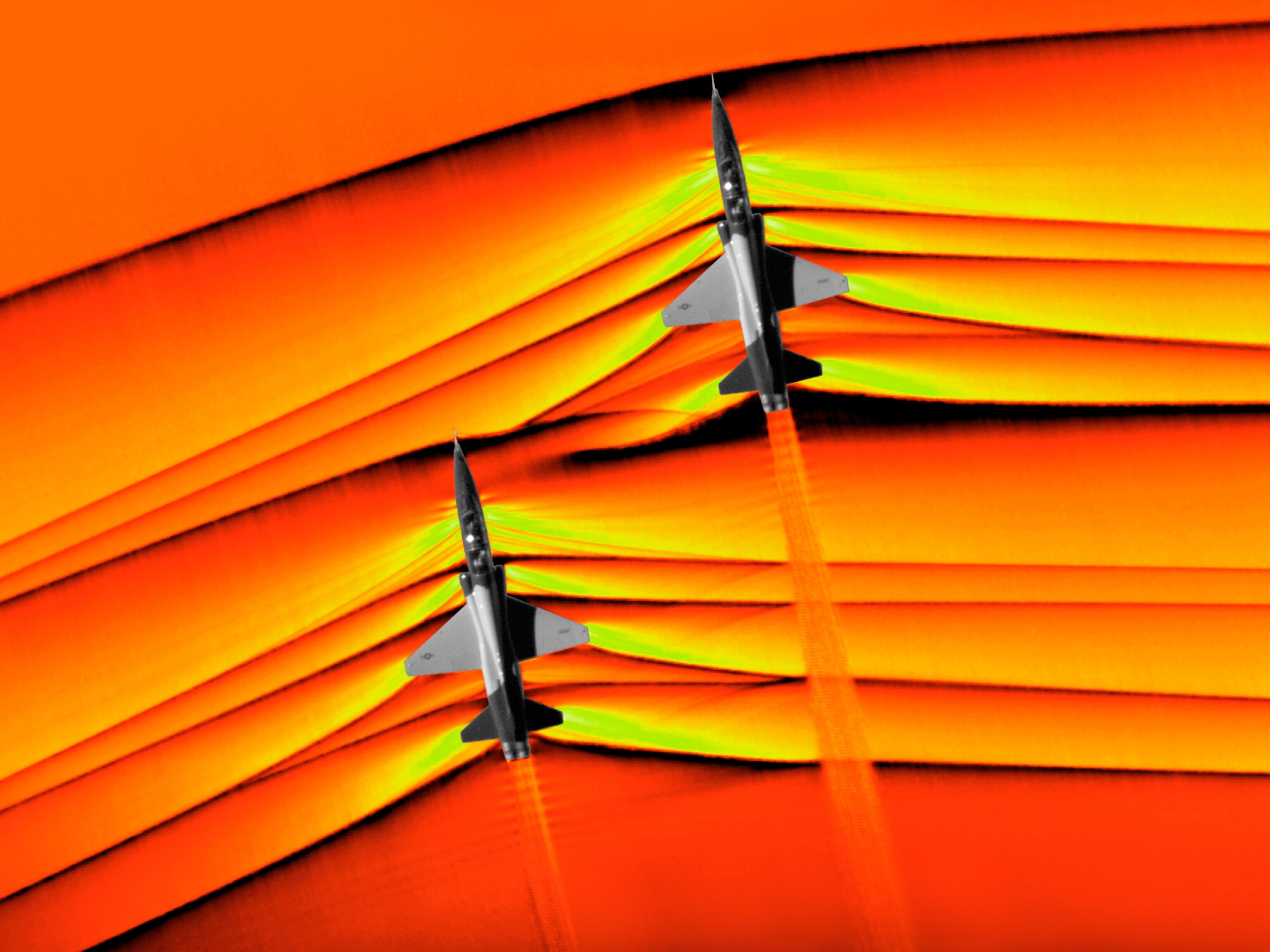
What is a sonic boom—and is it dangerous?
- Environment
- Perpetual Planet
History & Culture
- History & Culture
- Mind, Body, Wonder
- Paid Content
- Terms of Use
- Privacy Policy
- Your US State Privacy Rights
- Children's Online Privacy Policy
- Interest-Based Ads
- About Nielsen Measurement
- Do Not Sell or Share My Personal Information
- Nat Geo Home
- Attend a Live Event
- Book a Trip
- Inspire Your Kids
- Shop Nat Geo
- Visit the D.C. Museum
- Learn About Our Impact
- Support Our Mission
- Advertise With Us
- Customer Service
- Renew Subscription
- Manage Your Subscription
- Work at Nat Geo
- Sign Up for Our Newsletters
- Contribute to Protect the Planet
Copyright © 1996-2015 National Geographic Society Copyright © 2015-2024 National Geographic Partners, LLC. All rights reserved
- Reading Lists
- New Nonfiction
- Awards/Festivals
- Daily Thrill
- Noir/Hardboiled
- Espionage/Thriller
- Legal/Procedural
- Literary Hub

The Four Types of Time Travel (And What They Say About Ourselves and the World Around Us)
A science fiction author breaks down the building blocks of time travel, from seeing into the future to traveling into the past..
Time travel is a genre unto itself, one that spans sci-fi, mystery, fantasy, history and more. But there are distinct categories of time travel narratives, each with its own set of rules—and each with a different baked-in outlook.
Getting to a taxonomy of time travel stories, the first question is—who or what is actually time-traveling? Because while the first stories we think of involve spaceships and Deloreans, the oldest time travel stories are stories about…
1. SEEING THE FUTURE
In these stories, it is actually INFORMATION that travels through time. And this might be the most scientifically plausible form of time travel, one that is already happening all the time on the quantum level.
Visions of the future have shown up in literature and mythology for millennia, it’s just that we used to call them prophecy. But the fundamental storytelling device has changed little, even as it evolved with the times, manifesting in various communication technologies. Characters connect to the future through newspapers (the film It Happened Tomorrow , which inspired the show Early Edition ), letters ( The Lake House ), radio ( Frequency), photography ( Time Lapse ) and now, the Internet (my own recent novel The Future Is Yours , the reason I’m interested in sorting all this out.)
All these stories of peering forward in time differentiate into two categories on the basis of one crucial question: If you see the future, can you change it?
1A: Stories of Inevitable Foresight
These are stories where the future can be seen—but ultimately, what you see can’t be stopped.
The archetype for this form is one of the oldest works of dramatic literature in the Western canon—Sophocles’ play Oedipus Rex , where the titular king is warned by the seer Tiresias that he will murder his father and wed his mother… and despite his best efforts to the contrary, he ends up inadvertently doing just that (and then gouges his eyes out for good measure).
Stories of inevitable prediction speak to one of our deepest fears: that we have no free will, no agency, no power to control our fate. A glimpse of the future, foreknowledge of what’s to come, only ends up causing the events we aim to prevent.
Sound depressing? Maybe that’s why it’s a theme that spoke to sci-fi author Philip K. Dick, author of Minority Report— which is, for all its superficial differences, a story very similar to Oedipus Rex. It features a trio of precogs who dream of future-murders, and a cop assigned to prevent such killings—until he finds himself accused of one himself.
Dick was a pessimist about the prospect of free will, and in his story (spoiler alert!) his character ends up going through with the predicted murder. But perhaps unsurprisingly, when Steven Spielberg got hold of the same material, the outcome changed, and Tom Cruise’s version of the character was able to alter his destiny. How? Sheer force of movie-star charisma mostly. Which brings us to—
1B: Stories of Preventable Foresight
Other stories of seeing the future treat altering the timeline as quite evitable. In fact, the very act of viewing what’s ahead empowers the individual to change things, and prevent the foreseen events from coming to pass. That’s how Early Edition worked, with Kyla Chandler given the thankless daily task of averting tragedies only he could foresee.
But the prototype for this story form can be traced at least to 1843, in A Christmas Carol . Yes, even Dickens wrote some timey-wimey shenanigans; what else are the Ghosts of Christmas Past and Yet To Come? And when Scrooge beholds the pitiful sight of Tiny Tim dead, and his own neglected grave, he is promised a chance to rewrite the narrative if he can merely change his ways.
Which means that Dickens was much more of an optimist than Sophocles or Philip K. Dick. Being able to see the future and change it, whether through an epiphany or a magical newspaper, is the sort of world most of us want to believe in… whether that’s the way things actually work or not.
But in other types of stories, it’s not only information that travels through time. Many stories concern people getting to do so too—and the way authors treat those journeys says just as much about who they are and how they view the world.
2. TRAVELING TO THE FUTURE
One of the clearest progenitors of the time travel narrative, H.G. Wells’ The Time Machine , is about a man zipping off into the distant future. But the world he encounters—one full of peaceful Eloi and belligerent Morlocks—is so disconnected from our own, it’s hard to know why it’s not simply a story about aliens on another planet.
This points to a problem with time-travel forward. The future feels so unknowable, it often ends up being less interesting than we’d expect. That’s why some “travel into the future” stories make our present the future of the characters—like Time After Time , which features Jack the Ripper fleeing 1890’s London and winding up (via a time-machine that belongs to H.G. Wells) in 1970’s San Francisco (it’s as ridiculous as it sounds, and well worth a watch). But this plot device is really no different from the fish-out-of-water Rip Van Winkle premise, dressed up with technology.
Perhaps this is why “travel into the future” has perhaps been used most effectively as a last-minute twist ending, as in the original Planet of the Apes .
In other words—time-travel into the future is just not that special… maybe because we’re doing it all the time, at a consistent rate of 60 minutes per hour. And given that our own lifetimes have witnessed such seismic changes in technology and society, do we really need to imagine a cosmic leap forward to see things that will blow our minds?
That’s why the most interesting physical-time-travel stories have focused on…
3. TRAVELING TO THE PAST
Some of these stories are just touristy jaunts that don’t bother with the ramifications of intervening in history (like A Connecticut Yankee in King Arthur’s Court ). Which is fine and well, but more interesting are stories that grapple with the question: Can we alter the past? And by implication… can we alter our own present? Which breaks the category down into two distinct groups…
3A: Changing History
Perhaps the most intuitive mode of time travel is where characters travel to the past, and in doing so, alter the present they left behind. Back to the Future is probably the most popular of all. It’s fun to meet your teenage parents, but if you mess things up, you risk erasing yourself from existence. So then you have to… fight off your mom’s sexual advances and help your dad save her from getting raped? (Yeah, I didn’t really get how messed-up that was as a kid either…) Fix the past, fix the present, life goes on.
Of course, beyond just keeping your parents married and yourself in the family portrait, what people dream of is using time travel to fix history, the easiest go-to being the plot to kill baby Hitler. But in the massive time travel canon, it’s almost exclusively villains who try to rewrite the past. Very few stories feature heroes changing history for the better. Butterfly effects are almost always negative, and even the most well-intentioned time travel plans (like saving Kennedy from assassination in Stephen King’s 11/22/63 ) result in horrible misfortune for the world (catastrophic earthquakes in that case, for, ya know, reasons ).
All of which points to the fact that on some profound level, as much as our minds love playing with the possibilities of altering the timeline, we are deeply attached to the one we have, and innately suspicious of any effort to correct it. Which is why we have…
3B: Immutable Timelines
Stories where characters find themselves fundamentally incapable of altering history, regardless of their level of intervention. 12 Monkeys ( and the French film it’s based on, La Jetee ) tells the story of a time traveler seeking to prevent an apocalyptic manmade plague. He ultimately fails and realizes, too late, that as a child he witnessed the death of himself, as an older time traveler. The ending is incredibly satisfying—despite the fact that it’s profoundly fatalistic, suggestive of a world in which not even high-tech time-bending can save the human race from killing itself.
A less fatalistic example of this approach to time-rules is found in Avengers:Endgame , in which the characters travel to various moments throughout Marvel history to steal Infinity Stones (think Oceans 11 with a lot of fan-service). Smart Hulk (yes, seriously) gives the stipulation that history will “heal” itself of their interventions, preserving the timeline. On its face, this sounds like a lame gimme of a screenwriting rule — but turns out, it’s actually reasonably well-supported by recent experiments on quantum time travel. Science and sci-fi both point to the same idea: we can’t change the past.
4. TIME LOOPS
Which brings us to the final category—the pinnacle of unalterability—stories where a character is stuck reliving the same day again and again. The prototype here is the 1993 comedy Groundhog Day. The formula it set out brilliantly has been replicated in other genres, including but not limited to YA melodrama ( Before I Fall ), slasher-horror ( Happy Death Day ), sci-fi action with aliens ( Edge of Tomorrow), sci-fi action without aliens ( Source Code, ARQ) , episodic existential-dramedy ( Russian Doll ) and then circling all the way back to comedy again in last year’s Palm Springs.
These films don’t merely share a high-concept, they all have essentially the same theme: life doesn’t change until you change. Which would seem to make them remarkably unoriginal, if not for the surprising fact that they’re ALL good. (Seriously, I’ll go to bat for Before I Fall). No doubt there are some bad time-loop movies that I missed, but the fact that one hyper-specific premise has resulted in so many excellent movies points to the fact that there is a deep, resonant truth to the notion of being trapped in time.
Of course, this is only a partial taxonomy of time travel, but even this incomplete catalogue points to a few key takeaways. Most time travel stories are cautionary tales. Attempting to meddle with history is punished; defying prophecy is futile; the best we can do is pull a Marty McFly and close the Pandora’s box we opened in the first place. These stories, for all their far-flung leaps through space and time, are ultimately about how, if we want to change our lived reality, we need to start with ourselves.
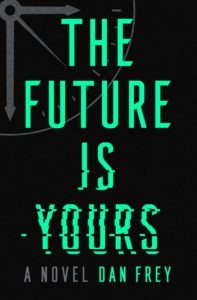
- Share on Facebook (Opens in new window)
- Click to share on Twitter (Opens in new window)
- Click to share on Google+ (Opens in new window)
- Click to share on LinkedIn (Opens in new window)
- Click to share on Reddit (Opens in new window)
- Click to share on Tumblr (Opens in new window)
- Click to share on Pinterest (Opens in new window)
- Click to share on Pocket (Opens in new window)
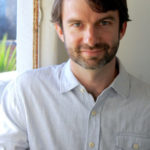
Previous Article
Next article, get the crime reads brief, get our “here’s to crime” tote.

Popular Posts

CrimeReads on Twitter
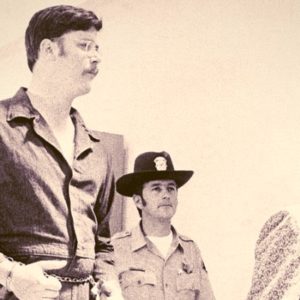
How the Great Depression and WWII Gave Birth to the Modern Serial Killer
Advertisers: Contact Us
Privacy Policy
- RSS - Posts
Support CrimeReads - Become a Member
CrimeReads needs your help. The mystery world is vast, and we need your support to cover it the way it deserves. With your contribution, you'll gain access to exclusive newsletters, editors' recommendations, early book giveaways, and our new "Well, Here's to Crime" tote bag.
Become a member for as low as $5/month


- [ November 30, 2022 ] The Night Sky This Month: December 2022 Night Sky
- [ November 22, 2022 ] James Webb Telescope Turns Its Attention To The Kuiper Belt News & Events
- [ November 1, 2022 ] The Night Sky This Month: November 2022 Night Sky
- [ October 4, 2022 ] Are Wormholes Fact or Fiction? General Astronomy
- [ October 1, 2022 ] The Night Sky This Month: October 2022 Night Sky
5 Bizarre Paradoxes Of Time Travel Explained
December 20, 2014 James Miller Astronomy Lists , Time Travel 58

There is nothing in Einstein’s theories of relativity to rule out time travel , although the very notion of traveling to the past violates one of the most fundamental premises of physics, that of causality. With the laws of cause and effect out the window, there naturally arises a number of inconsistencies associated with time travel, and listed here are some of those paradoxes which have given both scientists and time travel movie buffs alike more than a few sleepless nights over the years.
Types of Temporal Paradoxes
The time travel paradoxes that follow fall into two broad categories:
1) Closed Causal Loops , such as the Predestination Paradox and the Bootstrap Paradox, which involve a self-existing time loop in which cause and effect run in a repeating circle, but is also internally consistent with the timeline’s history.
2) Consistency Paradoxes , such as the Grandfather Paradox and other similar variants such as The Hitler paradox, and Polchinski’s Paradox, which generate a number of timeline inconsistencies related to the possibility of altering the past.
1: Predestination Paradox
A Predestination Paradox occurs when the actions of a person traveling back in time become part of past events, and may ultimately cause the event he is trying to prevent to take place. The result is a ‘temporal causality loop’ in which Event 1 in the past influences Event 2 in the future (time travel to the past) which then causes Event 1 to occur.
This circular loop of events ensures that history is not altered by the time traveler, and that any attempts to stop something from happening in the past will simply lead to the cause itself, instead of stopping it. Predestination paradoxes suggest that things are always destined to turn out the same way and that whatever has happened must happen.
Sound complicated? Imagine that your lover dies in a hit-and-run car accident, and you travel back in time to save her from her fate, only to find that on your way to the accident you are the one who accidentally runs her over. Your attempt to change the past has therefore resulted in a predestination paradox. One way of dealing with this type of paradox is to assume that the version of events you have experienced are already built into a self-consistent version of reality, and that by trying to alter the past you will only end up fulfilling your role in creating an event in history, not altering it.
– Cinema Treatment
In The Time Machine (2002) movie, for instance, Dr. Alexander Hartdegen witnesses his fiancee being killed by a mugger, leading him to build a time machine to travel back in time to save her from her fate. His subsequent attempts to save her fail, though, leading him to conclude that “I could come back a thousand times… and see her die a thousand ways.” After then traveling centuries into the future to see if a solution has been found to the temporal problem, Hartdegen is told by the Über-Morlock:
“You built your time machine because of Emma’s death. If she had lived, it would never have existed, so how could you use your machine to go back and save her? You are the inescapable result of your tragedy, just as I am the inescapable result of you .”
- Movies : Examples of predestination paradoxes in the movies include 12 Monkeys (1995), TimeCrimes (2007), The Time Traveler’s Wife (2009), and Predestination (2014).
- Books : An example of a predestination paradox in a book is Phoebe Fortune and the Pre-destination Paradox by M.S. Crook.
2: Bootstrap Paradox
A Bootstrap Paradox is a type of paradox in which an object, person, or piece of information sent back in time results in an infinite loop where the object has no discernible origin, and exists without ever being created. It is also known as an Ontological Paradox, as ontology is a branch of philosophy concerned with the nature of being or existence.
– Information : George Lucas traveling back in time and giving himself the scripts for the Star War movies which he then goes on to direct and gain great fame for would create a bootstrap paradox involving information, as the scripts have no true point of creation or origin.
– Person : A bootstrap paradox involving a person could be, say, a 20-year-old male time traveler who goes back 21 years, meets a woman, has an affair, and returns home three months later without knowing the woman was pregnant. Her child grows up to be the 20-year-old time traveler, who travels back 21 years through time, meets a woman, and so on. American science fiction writer Robert Heinlein wrote a strange short story involving a sexual paradox in his 1959 classic “All You Zombies.”
These ontological paradoxes imply that the future, present, and past are not defined, thus giving scientists an obvious problem on how to then pinpoint the “origin” of anything, a word customarily referring to the past, but now rendered meaningless. Further questions arise as to how the object/data was created, and by whom. Nevertheless, Einstein’s field equations allow for the possibility of closed time loops, with Kip Thorne the first theoretical physicist to recognize traversable wormholes and backward time travel as being theoretically possible under certain conditions.
- Movies : Examples of bootstrap paradoxes in the movies include Somewhere in Time (1980), Bill and Ted’s Excellent Adventure (1989), the Terminator movies, and Time Lapse (2014). The Netflix series Dark (2017-19) also features a book called ‘A Journey Through Time’ which presents another classic example of a bootstrap paradox.
- Books : Examples of bootstrap paradoxes in books include Michael Moorcock’s ‘Behold The Man’, Tim Powers’ The Anubis Gates, and Heinlein’s “By His Bootstraps”
3: Grandfather Paradox
The Grandfather Paradox concerns ‘self-inconsistent solutions’ to a timeline’s history caused by traveling back in time. For example, if you traveled to the past and killed your grandfather, you would never have been born and would not have been able to travel to the past – a paradox.
Let’s say you did decide to kill your grandfather because he created a dynasty that ruined the world. You figure if you knock him off before he meets your grandmother then the whole family line (including you) will vanish and the world will be a better place. According to theoretical physicists, the situation could play out as follows:
– Timeline protection hypothesis: You pop back in time, walk up to him, and point a revolver at his head. You pull the trigger but the gun fails to fire. Click! Click! Click! The bullets in the chamber have dents in the firing caps. You point the gun elsewhere and pull the trigger. Bang! Point it at your grandfather.. Click! Click! Click! So you try another method to kill him, but that only leads to scars that in later life he attributed to the world’s worst mugger. You can do many things as long as they’re not fatal until you are chased off by a policeman.
– Multiple universes hypothesis: You pop back in time, walk up to him, and point a revolver at his head. You pull the trigger and Boom! The deed is done. You return to the “present,” but you never existed here. Everything about you has been erased, including your family, friends, home, possessions, bank account, and history. You’ve entered a timeline where you never existed. Scientists entertain the possibility that you have now created an alternate timeline or entered a parallel universe.
- Movies : Example of the Grandfather Paradox in movies include Back to the Future (1985), Back to the Future Part II (1989), and Back to the Future Part III (1990).
- Books : Example of the Grandfather Paradox in books include Dr. Quantum in the Grandfather Paradox by Fred Alan Wolf , The Grandfather Paradox by Steven Burgauer, and Future Times Three (1944) by René Barjavel, the very first treatment of a grandfather paradox in a novel.
4: Let’s Kill Hitler Paradox
Similar to the Grandfather Paradox which paradoxically prevents your own birth, the Killing Hitler paradox erases your own reason for going back in time to kill him. Furthermore, while killing Grandpa might have a limited “butterfly effect,” killing Hitler would have far-reaching consequences for everyone in the world, even if only for the fact you studied him in school.
The paradox itself arises from the idea that if you were successful, then there would be no reason to time travel in the first place. If you killed Hitler then none of his actions would trickle down through history and cause you to want to make the attempt.
- Movies/Shows : By far the best treatment for this notion occurred in a Twilight Zone episode called Cradle of Darkness which sums up the difficulties involved in trying to change history, with another being an episode of Dr Who called ‘Let’s Kill Hitler’.
- Books : Examples of the Let’s Kill Hitler Paradox in books include How to Kill Hitler: A Guide For Time Travelers by Andrew Stanek, and the graphic novel I Killed Adolf Hitler by Jason.
5: Polchinski’s Paradox
American theoretical physicist Joseph Polchinski proposed a time paradox scenario in which a billiard ball enters a wormhole, and emerges out the other end in the past just in time to collide with its younger version and stop it from going into the wormhole in the first place.
Polchinski’s paradox is taken seriously by physicists, as there is nothing in Einstein’s General Relativity to rule out the possibility of time travel, closed time-like curves (CTCs), or tunnels through space-time. Furthermore, it has the advantage of being based upon the laws of motion, without having to refer to the indeterministic concept of free will, and so presents a better research method for scientists to think about the paradox. When Joseph Polchinski proposed the paradox, he had Novikov’s Self-Consistency Principle in mind, which basically states that while time travel is possible, time paradoxes are forbidden.
However, a number of solutions have been formulated to avoid the inconsistencies Polchinski suggested, which essentially involves the billiard ball delivering a blow that changes its younger version’s course, but not enough to stop it from entering the wormhole. This solution is related to the ‘timeline-protection hypothesis’ which states that a probability distortion would occur in order to prevent a paradox from happening. This also helps explain why if you tried to time travel and murder your grandfather, something will always happen to make that impossible, thus preserving a consistent version of history.
- Books: Paradoxes of Time Travel by Ryan Wasserman is a wide-ranging exploration of time and time travel, including Polchinski’s Paradox.
Are Self-Fulfilling Prophecies Paradoxes?
A self-fulfilling prophecy is only a causality loop when the prophecy is truly known to happen and events in the future cause effects in the past, otherwise the phenomenon is not so much a paradox as a case of cause and effect. Say, for instance, an authority figure states that something is inevitable, proper, and true, convincing everyone through persuasive style. People, completely convinced through rhetoric, begin to behave as if the prediction were already true, and consequently bring it about through their actions. This might be seen best by an example where someone convincingly states:
“High-speed Magnetic Levitation Trains will dominate as the best form of transportation from the 21st Century onward.”
Jet travel, relying on diminishing fuel supplies, will be reserved for ocean crossing, and local flights will be a thing of the past. People now start planning on building networks of high-speed trains that run on electricity. Infrastructure gears up to supply the needed parts and the prediction becomes true not because it was truly inevitable (though it is a smart idea), but because people behaved as if it were true.
It even works on a smaller scale – the scale of individuals. The basic methodology for all those “self-help” books out in the world is that if you modify your thinking that you are successful (money, career, dating, etc.), then with the strengthening of that belief you start to behave like a successful person. People begin to notice and start to treat you like a successful person; it is a reinforcement/feedback loop and you actually become successful by behaving as if you were.
Are Time Paradoxes Inevitable?
The Butterfly Effect is a reference to Chaos Theory where seemingly trivial changes can have huge cascade reactions over long periods of time. Consequently, the Timeline corruption hypothesis states that time paradoxes are an unavoidable consequence of time travel, and even insignificant changes may be enough to alter history completely.
In one story, a paleontologist, with the help of a time travel device, travels back to the Jurassic Period to get photographs of Stegosaurus, Brachiosaurus, Ceratosaurus, and Allosaurus amongst other dinosaurs. He knows he can’t take samples so he just takes magnificent pictures from the fixed platform that is positioned precisely to not change anything about the environment. His assistant is about to pick a long blade of grass, but he stops him and explains how nothing must change because of their presence. They finish what they are doing and return to the present, but everything is gone. They reappear in a wild world with no humans and no signs that they ever existed. They fall to the floor of their platform, the only man-made thing in the whole world, and lament “Why? We didn’t change anything!” And there on the heel of the scientist’s shoe is a crushed butterfly.
The Butterfly Effect is also a movie, starring Ashton Kutcher as Evan Treborn and Amy Smart as Kayleigh Miller, where a troubled man has had blackouts during his youth, later explained by him traveling back into his own past and taking charge of his younger body briefly. The movie explores the issue of changing the timeline and how unintended consequences can propagate.
Scientists eager to avoid the paradoxes presented by time travel have come up with a number of ingenious ways in which to present a more consistent version of reality, some of which have been touched upon here, including:
- The Solution: time travel is impossible because of the very paradox it creates.
- Self-healing hypothesis: successfully altering events in the past will set off another set of events which will cause the present to remain the same.
- The Multiverse or “many-worlds” hypothesis: an alternate parallel universe or timeline is created each time an event is altered in the past.
- Erased timeline hypothesis : a person traveling to the past would exist in the new timeline, but have their own timeline erased.
Related Posts
© Copyright 2023 Astronomy Trek

Be back soon!
This website is under maintenance. Check back tomorrow!
*If you’re the owner of this website and have questions, reach out to Bluehost. We’re happy to help.
Snowflake Time Travel & Fail-safe ¶
Snowflake provides powerful CDP features for ensuring the maintenance and availability of your historical data (i.e. data that has been changed or deleted):
Querying, cloning, and restoring historical data in tables, schemas, and databases for up to 90 days through Snowflake Time Travel. Disaster recovery of historical data (by Snowflake) through Snowflake Fail-safe.
These features are included standard for all accounts, i.e. no additional licensing is required; however, standard Time Travel is 1 day. Extended Time Travel (up to 90 days) requires Snowflake Enterprise Edition. In addition, both Time Travel and Fail-safe require additional data storage, which has associated fees.
Next Topics:
- Understanding & Using Time Travel
- Understanding and viewing Fail-safe
- Storage Costs for Time Travel and Fail-safe
Time Travel snowflake: The Ultimate Guide to Understand, Use & Get Started 101
By: Harsh Varshney Published: January 13, 2022
Related Articles
To empower your business decisions with data, you need Real-Time High-Quality data from all of your data sources in a central repository. Traditional On-Premise Data Warehouse solutions have limited Scalability and Performance , and they require constant maintenance. Snowflake is a more Cost-Effective and Instantly Scalable solution with industry-leading Query Performance. It’s a one-stop-shop for Cloud Data Warehousing and Analytics, with full SQL support for Data Analysis and Transformations. One of the highlighting features of Snowflake is Snowflake Time Travel.
Table of Contents
Snowflake Time Travel allows you to access Historical Data (that is, data that has been updated or removed) at any point in time. It is an effective tool for doing the following tasks:
- Restoring Data-Related Objects (Tables, Schemas, and Databases) that may have been removed by accident or on purpose.
- Duplicating and Backing up Data from previous periods of time.
- Analyzing Data Manipulation and Consumption over a set period of time.
In this article, you will learn everything about Snowflake Time Travel along with the process which you might want to carry out while using it with simple SQL code to make the process run smoothly.
What is Snowflake?
Snowflake is the world’s first Cloud Data Warehouse solution, built on the customer’s preferred Cloud Provider’s infrastructure (AWS, Azure, or GCP) . Snowflake (SnowSQL) adheres to the ANSI Standard and includes typical Analytics and Windowing Capabilities. There are some differences in Snowflake’s syntax, but there are also some parallels.
Snowflake’s integrated development environment (IDE) is totally Web-based . Visit XXXXXXXX.us-east-1.snowflakecomputing.com. You’ll be sent to the primary Online GUI , which works as an IDE, where you can begin interacting with your Data Assets after logging in. Each query tab in the Snowflake interface is referred to as a “ Worksheet ” for simplicity. These “ Worksheets ,” like the tab history function, are automatically saved and can be viewed at any time.
Key Features of Snowflake
- Query Optimization: By using Clustering and Partitioning, Snowflake may optimize a query on its own. With Snowflake, Query Optimization isn’t something to be concerned about.
- Secure Data Sharing: Data can be exchanged securely from one account to another using Snowflake Database Tables, Views, and UDFs.
- Support for File Formats: JSON, Avro, ORC, Parquet, and XML are all Semi-Structured data formats that Snowflake can import. It has a VARIANT column type that lets you store Semi-Structured data.
- Caching: Snowflake has a caching strategy that allows the results of the same query to be quickly returned from the cache when the query is repeated. Snowflake uses permanent (during the session) query results to avoid regenerating the report when nothing has changed.
- SQL and Standard Support: Snowflake offers both standard and extended SQL support, as well as Advanced SQL features such as Merge, Lateral View, Statistical Functions, and many others.
- Fault Resistant: Snowflake provides exceptional fault-tolerant capabilities to recover the Snowflake object in the event of a failure (tables, views, database, schema, and so on).
To get further information check out the official website here .
What is Snowflake Time Travel Feature?
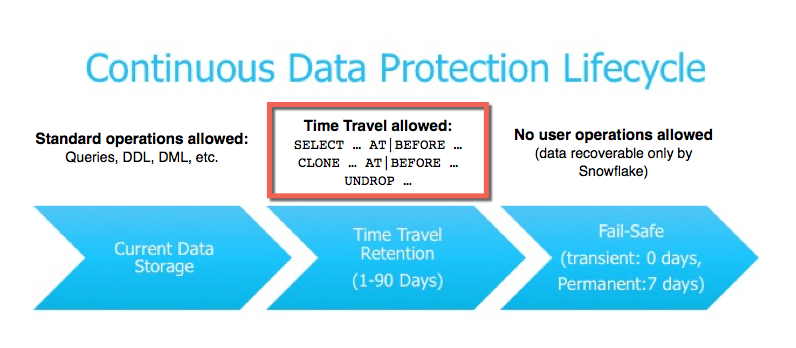
Snowflake Time Travel is an interesting tool that allows you to access data from any point in the past. For example, if you have an Employee table, and you inadvertently delete it, you can utilize Time Travel to go back 5 minutes and retrieve the data. Snowflake Time Travel allows you to Access Historical Data (that is, data that has been updated or removed) at any point in time. It is an effective tool for doing the following tasks:
- Query Data that has been changed or deleted in the past.
- Make clones of complete Tables, Schemas, and Databases at or before certain dates.
- Tables, Schemas, and Databases that have been deleted should be restored.
As the ability of businesses to collect data explodes, data teams have a crucial role to play in fueling data-driven decisions. Yet, they struggle to consolidate the data scattered across sources into their warehouse to build a single source of truth. Broken pipelines, data quality issues, bugs and errors, and lack of control and visibility over the data flow make data integration a nightmare.
1000+ data teams rely on Hevo’s Data Pipeline Platform to integrate data from over 150+ sources in a matter of minutes. Billions of data events from sources as varied as SaaS apps, Databases, File Storage and Streaming sources can be replicated in near real-time with Hevo’s fault-tolerant architecture. What’s more – Hevo puts complete control in the hands of data teams with intuitive dashboards for pipeline monitoring, auto-schema management, custom ingestion/loading schedules.
All of this combined with transparent pricing and 24×7 support makes us the most loved data pipeline software on review sites.
Take our 14-day free trial to experience a better way to manage data pipelines.
How to Enable & Disable Snowflake Time Travel Feature?
1) enable snowflake time travel.
To enable Snowflake Time Travel, no chores are necessary. It is turned on by default, with a one-day retention period . However, if you want to configure Longer Data Retention Periods of up to 90 days for Databases, Schemas, and Tables, you’ll need to upgrade to Snowflake Enterprise Edition. Please keep in mind that lengthier Data Retention necessitates more storage, which will be reflected in your monthly Storage Fees. See Storage Costs for Time Travel and Fail-safe for further information on storage fees.
For Snowflake Time Travel, the example below builds a table with 90 days of retention.
To shorten the retention term for a certain table, the below query can be used.
2) Disable Snowflake Time Travel
Snowflake Time Travel cannot be turned off for an account, but it can be turned off for individual Databases, Schemas, and Tables by setting the object’s DATA_RETENTION_TIME_IN_DAYS to 0.
Users with the ACCOUNTADMIN role can also set DATA_RETENTION_TIME_IN_DAYS to 0 at the account level, which means that by default, all Databases (and, by extension, all Schemas and Tables) created in the account have no retention period. However, this default can be overridden at any time for any Database, Schema, or Table.
3) What are Data Retention Periods?
Data Retention Time is an important part of Snowflake Time Travel. Snowflake preserves the state of the data before the update when data in a table is modified, such as deletion of data or removing an object containing data. The Data Retention Period sets the number of days that this historical data will be stored, allowing Time Travel operations ( SELECT, CREATE… CLONE, UNDROP ) to be performed on it.
All Snowflake Accounts have a standard retention duration of one day (24 hours) , which is automatically enabled:
- At the account and object level in Snowflake Standard Edition , the Retention Period can be adjusted to 0 (or unset to the default of 1 day) (i.e. Databases, Schemas, and Tables).
- The Retention Period can be set to 0 for temporary Databases, Schemas, and Tables (or unset back to the default of 1 day ). The same can be said of Temporary Tables.
- The Retention Time for permanent Databases, Schemas, and Tables can be configured to any number between 0 and 90 days .
4) What are Snowflake Time Travel SQL Extensions?
The following SQL extensions have been added to facilitate Snowflake Time Travel:
- OFFSET (time difference in seconds from the present time)
- STATEMENT (identifier for statement, e.g. query ID)
- For Tables, Schemas, and Databases, use the UNDROP command.

How Many Days Does Snowflake Time Travel Work?
How to specify a custom data retention period for snowflake time travel .
The maximum Retention Time in Standard Edition is set to 1 day by default (i.e. one 24 hour period). The default for your account in Snowflake Enterprise Edition (and higher) can be set to any value up to 90 days :
- The account default can be modified using the DATA_RETENTION_TIME IN_DAYS argument in the command when creating a Table, Schema, or Database.
- If a Database or Schema has a Retention Period , that duration is inherited by default for all objects created in the Database/Schema.
The Data Retention Time can be set in the way it has been set in the example below.
Using manual scripts and custom code to move data into the warehouse is cumbersome. Frequent breakages, pipeline errors and lack of data flow monitoring makes scaling such a system a nightmare. Hevo’s reliable data pipeline platform enables you to set up zero-code and zero-maintenance data pipelines that just work.
- Reliability at Scale : With Hevo, you get a world-class fault-tolerant architecture that scales with zero data loss and low latency.
- Monitoring and Observability : Monitor pipeline health with intuitive dashboards that reveal every stat of pipeline and data flow. Bring real-time visibility into your ELT with Alerts and Activity Logs
- Stay in Total Control : When automation isn’t enough, Hevo offers flexibility – data ingestion modes, ingestion, and load frequency, JSON parsing, destination workbench, custom schema management, and much more – for you to have total control.
- Auto-Schema Management : Correcting improper schema after the data is loaded into your warehouse is challenging. Hevo automatically maps source schema with destination warehouse so that you don’t face the pain of schema errors.
- 24×7 Customer Support : With Hevo you get more than just a platform, you get a partner for your pipelines. Discover peace with round the clock “Live Chat” within the platform. What’s more, you get 24×7 support even during the 14-day full-feature free trial.
- Transparent Pricing : Say goodbye to complex and hidden pricing models. Hevo’s Transparent Pricing brings complete visibility to your ELT spend. Choose a plan based on your business needs. Stay in control with spend alerts and configurable credit limits for unforeseen spikes in data flow.
How to Modify Data Retention Period for Snowflake Objects?
When you alter a Table’s Data Retention Period, the new Retention Period affects all active data as well as any data in Time Travel. Whether you lengthen or shorten the period has an impact:
1) Increasing Retention
This causes the data in Snowflake Time Travel to be saved for a longer amount of time.
For example, if you increase the retention time from 10 to 20 days on a Table, data that would have been destroyed after 10 days is now kept for an additional 10 days before being moved to Fail-Safe. This does not apply to data that is more than 10 days old and has previously been put to Fail-Safe mode .
2) Decreasing Retention
- Temporal Travel reduces the quantity of time data stored.
- The new Shorter Retention Period applies to active data updated after the Retention Period was trimmed.
- If the data is still inside the new Shorter Period , it will stay in Time Travel.
- If the data is not inside the new Timeframe, it is placed in Fail-Safe Mode.
For example, If you have a table with a 10-day Retention Term and reduce it to one day, data from days 2 through 10 will be moved to Fail-Safe, leaving just data from day 1 accessible through Time Travel.
However, since the data is moved from Snowflake Time Travel to Fail-Safe via a background operation, the change is not immediately obvious. Snowflake ensures that the data will be migrated, but does not say when the process will be completed; the data is still accessible using Time Travel until the background operation is completed.
Use the appropriate ALTER <object> Command to adjust an object’s Retention duration. For example, the below command is used to adjust the Retention duration for a table:
How to Query Snowflake Time Travel Data?
When you make any DML actions on a table, Snowflake saves prior versions of the Table data for a set amount of time. Using the AT | BEFORE Clause, you can Query previous versions of the data.
This Clause allows you to query data at or immediately before a certain point in the Table’s history throughout the Retention Period . The supplied point can be either a time-based (e.g., a Timestamp or a Time Offset from the present) or a Statement ID (e.g. SELECT or INSERT ).
- The query below selects Historical Data from a Table as of the Date and Time indicated by the Timestamp:
- The following Query pulls Data from a Table that was last updated 5 minutes ago:
- The following Query collects Historical Data from a Table up to the specified statement’s Modifications, but not including them:
How to Clone Historical Data in Snowflake?
The AT | BEFORE Clause, in addition to queries, can be combined with the CLONE keyword in the Construct command for a Table, Schema, or Database to create a logical duplicate of the object at a specific point in its history.
Consider the following scenario:
- The CREATE TABLE command below generates a Clone of a Table as of the Date and Time indicated by the Timestamp:
- The following CREATE SCHEMA command produces a Clone of a Schema and all of its Objects as they were an hour ago:
- The CREATE DATABASE command produces a Clone of a Database and all of its Objects as they were before the specified statement was completed:
Using UNDROP Command with Snowflake Time Travel: How to Restore Objects?
The following commands can be used to restore a dropped object that has not been purged from the system (i.e. the item is still visible in the SHOW object type> HISTORY output):
- UNDROP DATABASE
- UNDROP TABLE
- UNDROP SCHEMA
UNDROP returns the object to its previous state before the DROP command is issued.
A Database can be dropped using the UNDROP command. For example,
Similarly, you can UNDROP Tables and Schemas .
Snowflake Fail-Safe vs Snowflake Time Travel: What is the Difference?
In the event of a System Failure or other Catastrophic Events , such as a Hardware Failure or a Security Incident, Fail-Safe ensures that Historical Data is preserved . While Snowflake Time Travel allows you to Access Historical Data (that is, data that has been updated or removed) at any point in time.
Fail-Safe mode allows Snowflake to recover Historical Data for a (non-configurable) 7-day period . This time begins as soon as the Snowflake Time Travel Retention Period expires.
This article has exposed you to the various Snowflake Time Travel to help you improve your overall decision-making and experience when trying to make the most out of your data. In case you want to export data from a source of your choice into your desired Database/destination like Snowflake , then Hevo is the right choice for you!
However, as a Developer, extracting complex data from a diverse set of data sources like Databases, CRMs, Project management Tools, Streaming Services, and Marketing Platforms to your Database can seem to be quite challenging. If you are from non-technical background or are new in the game of data warehouse and analytics, Hevo can help!
Hevo will automate your data transfer process, hence allowing you to focus on other aspects of your business like Analytics, Customer Management, etc. Hevo provides a wide range of sources – 150+ Data Sources (including 40+ Free Sources) – that connect with over 15+ Destinations. It will provide you with a seamless experience and make your work life much easier.
Want to take Hevo for a spin? Sign Up for a 14-day free trial and experience the feature-rich Hevo suite first hand.
You can also have a look at our unbeatable pricing that will help you choose the right plan for your business needs!
Harsh comes with experience in performing research analysis who has a passion for data, software architecture, and writing technical content. He has written more than 100 articles on data integration and infrastructure.
No-code Data Pipeline for Snowflake
- Snowflake Commands
Hevo - No Code Data Pipeline

Continue Reading
Suraj Kumar Joshi
Athena vs Redshift Serverless: The Ultimate Guide on Data Query Service
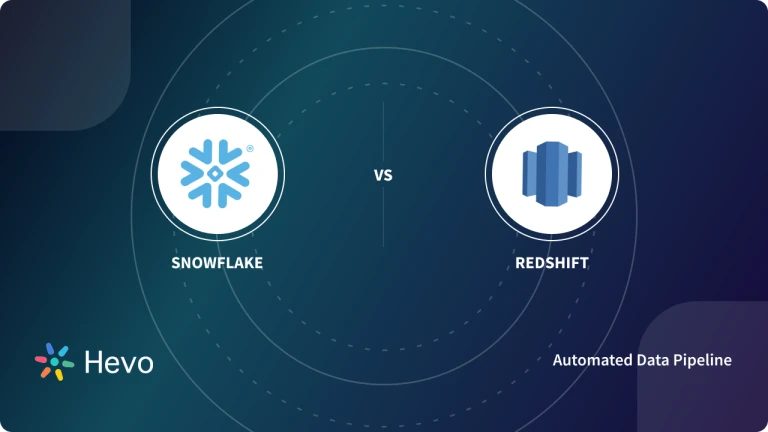
Sarthak Bhardwaj
Snowflake vs Redshift: 6 Critical Differences

Veeresh Biradar
Redshift vs BigQuery: 7 Critical Differences
Leave a reply cancel reply.
Your email address will not be published. Required fields are marked *
Save my name, email, and website in this browser for the next time I comment.
I want to read this e-book
The 32 Best TV Shows About Time Travel
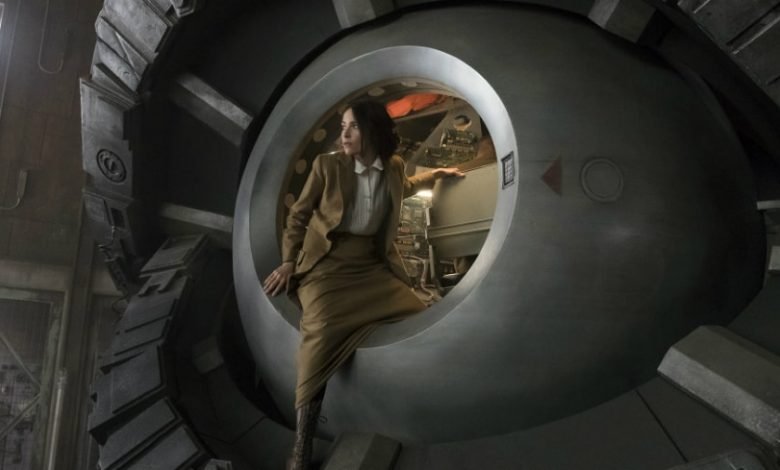
Time traveling is a popular topic when it comes to all types of entertainment from books to films. But in recent years time travel has also become a popular theme in TV.
So let’s take a look at this list of the best time traveling TV shows and find out how each of them handles time travel and all the history that comes with it.

Doctor Who, BBC One (1963 – 1989, 2005 – present)
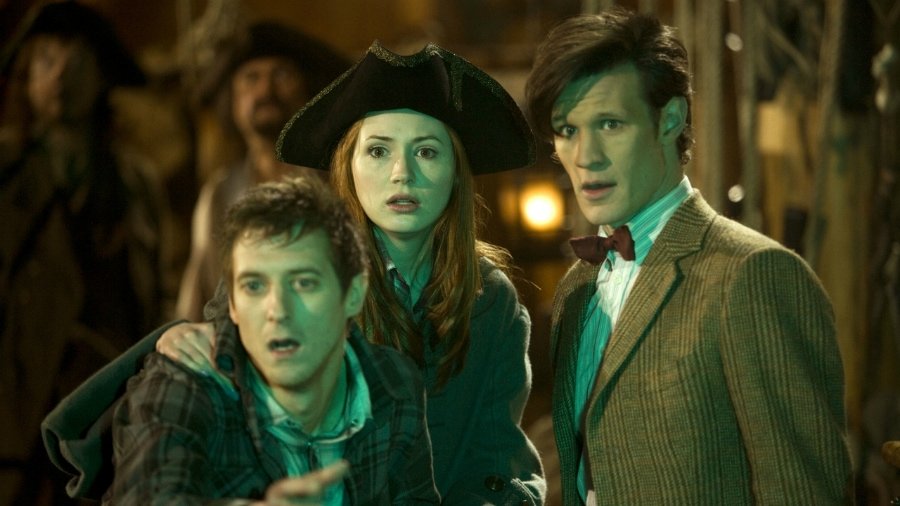
When it comes to time traveling and TV, probably the most notable name in this niche is Doctor Who because this time travel series has been around for 39 seasons and is still going strong.
Hailing from British television channel BBC One, Doctor Who tells the tale of the Time Lord aka The Doctor, and his companions as they travel to different times and try to prevent evil forces from changing history and hurting innocent lives.
Once the Time Lord gets hurt beyond healing, he can transform into a new body and continue saving the world. Hence why at this point 13 (soon to be 14) different actors have played The Doctor.
Doctor Who is not only a huge part of the fabric of British popular culture but by now this time travel show has found its way into the hearts of many people all over the world.
It has inspired many spin-offs in the form of TV shows, comic books, movies, novels, you name it. But more than that, by now it has become an industry standard both when it comes to science-fiction television series and shows about time travel.
No wonder that Doctor Who continues to be successful after countless actor changes and plot twists.
Where to watch Doctor Who:
Timeless, nbc (2016 – 2018).
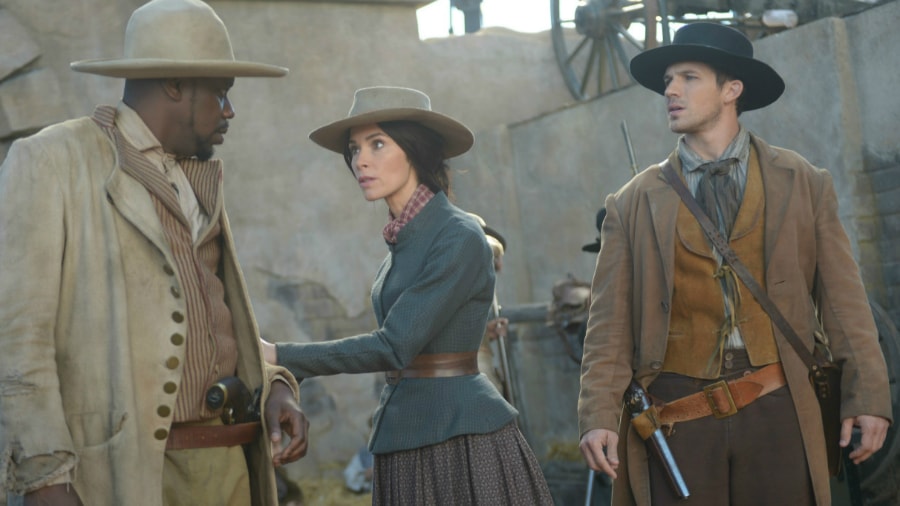
Another time travel TV series that has already become a cult classic and is adored by fans all over the world is NBC’s Timeless . And despite the turmoil that this show has gone through, it still is time traveling at its best.
Starring Malcolm Barrett, Matt Lanter, and Abigail Spencer as Rufus, Wyatt, and Lucy, Timeless details the trio traveling to different times in an effort to stop their adversaries from rewriting history.
But as it later turns out, the conspiracy goes deeper than them just changing history. Since the people who our trio is chasing are traveling through time to take down a dangerous and all-powerful organization. The same one that helped build the time machine that Rufus, Wyatt, and Lucy are using.
And although Timeless went on for just two seasons (and a two-hour wrap-up movie), you should still check out the show because it’s not only entertaining but will make you think and want to know more about the events that each episode is exploring.
Where to watch Timeless:
Dc’s legends of tomorrow, the cw (2016 – present).
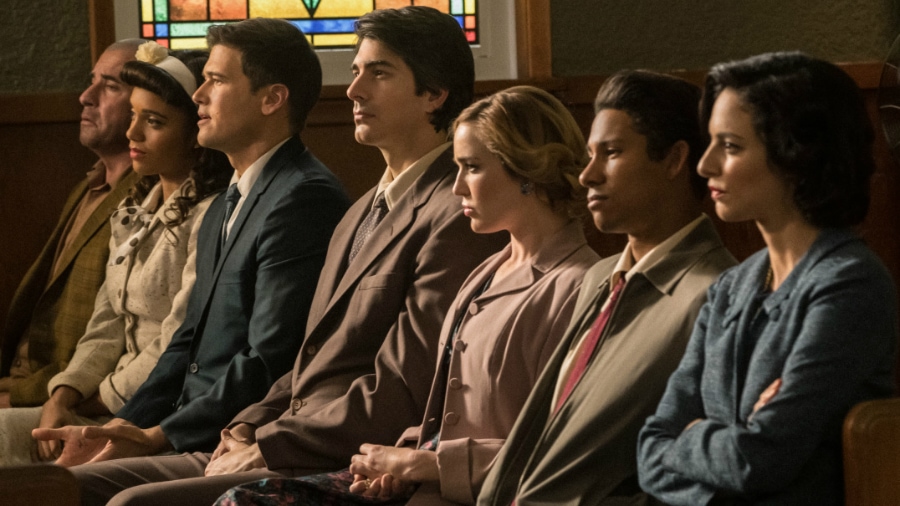
If you are a fan of superhero TV shows, then you will probably have heard about DC’s Legends of Tomorrow . It is a show that is a huge part of The CW’s Arrowverse. And has crossed over with shows like Arrow , The Flash , and Supergirl multiple times now.
And even if you don’t like the rest of the superhero series but do enjoy a good old time travel TV show, then I suggest you still give Legends of Tomorrow a watch.
The plot of this show is based around a team of superheroes that are traveling through time in their time machine christened the Waverider to prevent different catastrophes from happening. Both ones made by others and those created by the team’s previous adventures.
At the forefront, there are well-known DC heroes like Rip Hunter, Firestorm, The Atom, Kid Flash, Steel, and Vixen. Joined by some original characters like Caity Lotz’s White Canary among others.
One of the defining characteristics of Legends of Tomorrow is how fun it is. Because adjectives like unapologetic, witty, and entertaining are frequently used to describe this time travel series.
However, more than that, it adds an interesting layer to the whole Arrowverse universe. And above all, it is just a hoot to watch.
Where to watch Legends of Tomorrow:
12 monkeys, syfy (2015 – 2018).

Then there also is SyFy’s 12 Monkeys , which is a little darker take on time traveling. One that comes with mystery, drama, and apocalyptic stakes. But that doesn’t lessen how good this time travel TV series is.
Split between two timelines, 12 Monkeys centers on Aaron Stanford’s James Cole, who is tasked to travel back in time and stop the distribution of a virus that has the ability to end the human race as we know it.
In Cole’s real timeline, the year is 2043 and people are struggling to survive because of the terrible mutations caused by the virus. So Cole travels back to 2015 to find virologist Cassie Railly, played by Amanda Schull, that can help him stop the release of the virus and the organization that is behind it called The Army of the 12 Monkeys.
If you think about it, the post-apocalyptic setting and time travel really do go hand in hand. Because if you can go back in time to stop history from being changed, why not go back to change it if it prevents something terrible from happening?
And that is what this show explores. Beautifully combining elements of mystery, drama, and science fiction, to form a great TV show.
Where to watch 12 Monkeys:
Outlander, starz (2014 – present).

Want another show that mixes time travel with historical events and does it flawlessly? Then you should put Outlander on your must-watch TV show list!
The show starts in the 1940s when a combat nurse Claire Randall visits Inverness, Scotland as part of her second honeymoon with her husband Frank. Claire accidentally happens upon the standing stones at Craigh na Dun which transport her back in time to 1743.
To return to her own time she first has to survive 18th-century Scotland. And she does so by joining a group of rebel Highlanders from Clan MacKenzie and marrying one of the Highlanders, Jamie Fraser. But eventually, she falls in love with her new husband and aids the clan in evading British redcoats that are pursuing them.
Over the five seasons of Outlander that are currently out (with the sixth coming soon), we see Claire jump back and forth between the 20th and 18th centuries and her two families as she faces two pregnancies, wars, and much more. But eventually, Claire finds her way back to Jamie.
Where to watch Outlander:
Travelers, showcase (2016 – 2018).

Then we have Travelers , a joint venture between Netflix and Canada’s Showcase that will tick all of your time travel TV show boxes.
Set in a post-apocalyptic world , this show depicts the adventures of travelers – operatives who go back in time to prevent the collapse of society.
These travelers are transferred into the bodies of our current-day humans, who otherwise would die, to blend in with twenty-first-century people. And with the help of their artificial intelligence boss from the future, travelers carry out missions in order to stop many catastrophic events from happening.
Travelers is a great mix of sci-fi and drama, featuring a great cast and spine-tingling storylines. So if you love all that and love a good time-travel series, then look no further than Travelers .
Where to watch Travelers:
Dark, netflix (2017 – 2020).
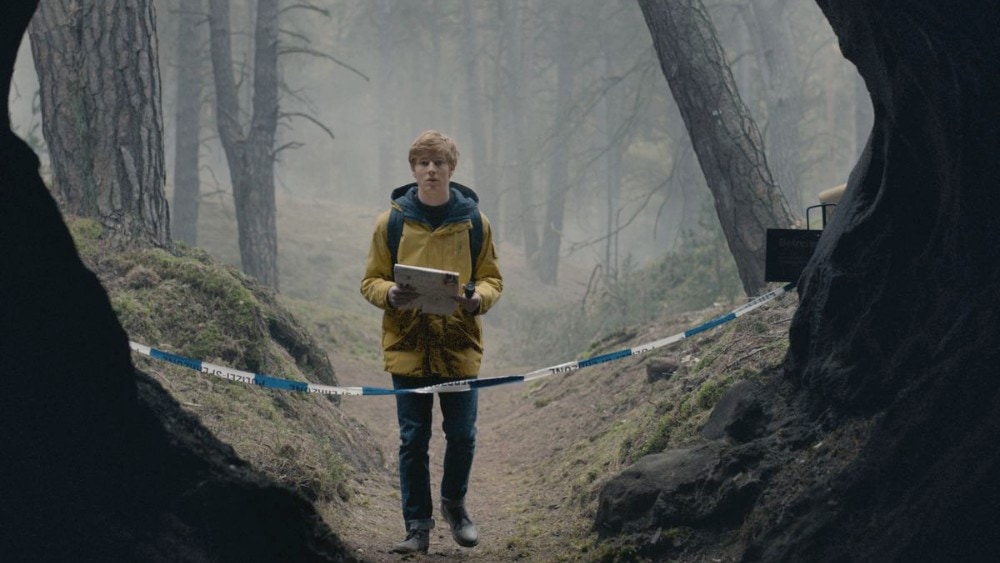
Netflix’s first German original series was the science fiction series Dark , which mixes in some mystery drama with sci-fi: time travel, the apocalypse, wormholes, and parallel worlds.
Dark takes place in Winden, a fictional German town, and begins in 2019 after children begin to disappear from the town. As the show progresses, however, timelines jump drastically between as early as 1921 to as late as 2053.
As four families in Winden investigate the disappearances to reunite with their lost loved ones, they discover a wormhole beneath the local powerplant that allows them to travel between timelines, thus uncovering a generations-long conspiracy involving the town and their families.
Where to watch Dark:
The umbrella academy, netflix (2019 – present).

Netflix brings another to the list with The Umbrella Academy .
On October 1, 1989, 43 infants were suddenly born from unsuspecting women despite them not even being pregnant the day before.
7 of them were raised together as the Hargreeve siblings and trained in their respective abilities until their relationship became strained as teenagers and they drifted apart.
Now, as adults, they’re brought back together by the death of their adoptive father – and the threat of the end of the world, of course.
They’re forced to travel back in time but end up in different times and places, and must find each other again to stop the nuclear apocalypse.
Where to watch The Umbrella Academy:
Seven days, upn (1998 – 2001).
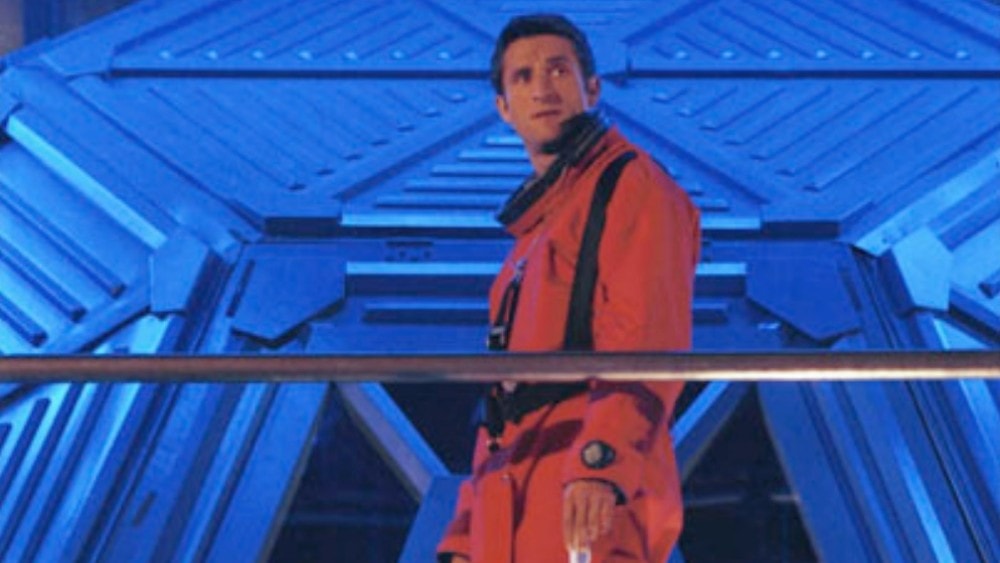
We know that the National Security Agency has its share of secrets, but what if one of those secrets was a time-traveling machine?
In UPN’s Seven Days , the plot centers on one such device made from alien technology found at Roswell.
The Chronosphere, as it’s called, can only be used in times when national security is at risk – the limited capacity of the device allows for just one human to go back in time by seven days in order to avert disasters.
Thus, when the White House is attacked, the NSA employs former Navy SEAL and CIA operative Frank Parker to go back and prevent it from happening.
Where to watch Seven Days:
Loki, disney+ (2021 – present).
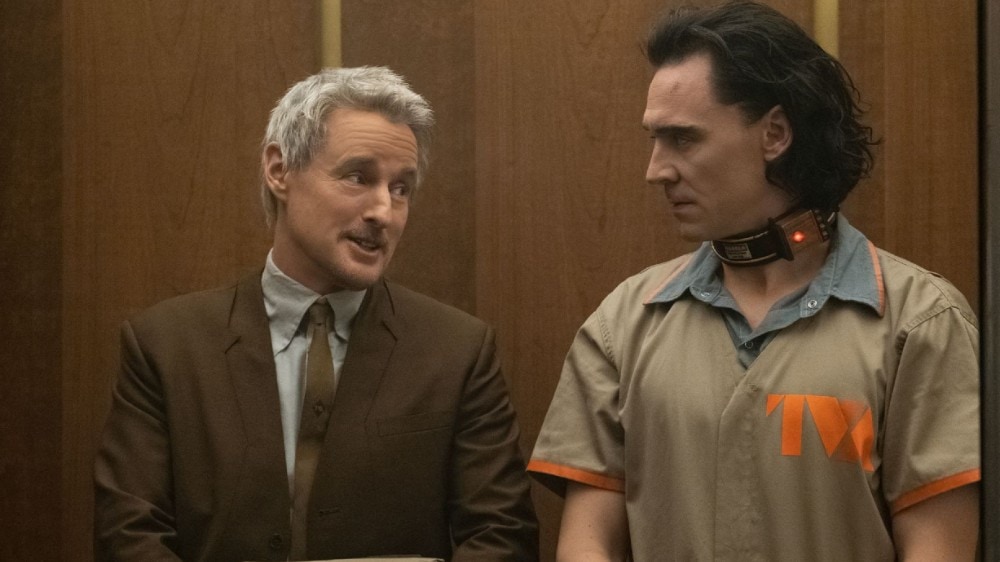
Yes, the Marvel Cinematic Universe is one of the greatest gifts to the cinema of our time. Now, the MCU has expanded even further into the television medium and we’ve got a few series to accompany it!
One of those is Loki , which of course, centers on the God of Thunder’s mischievous adopted brother.
After the events in Avengers: Endgame , particularly his stealing of the Tesseract, Loki inadvertently creates another timeline that began in 2012, making him a “time variant” version of himself.
When confronted by the authorities, Loki is given two choices: face punishment and cease to exist, or travel through time to fix his own mess and the threat that has emerged.
Where to watch Loki:
Making history, fox (2017).
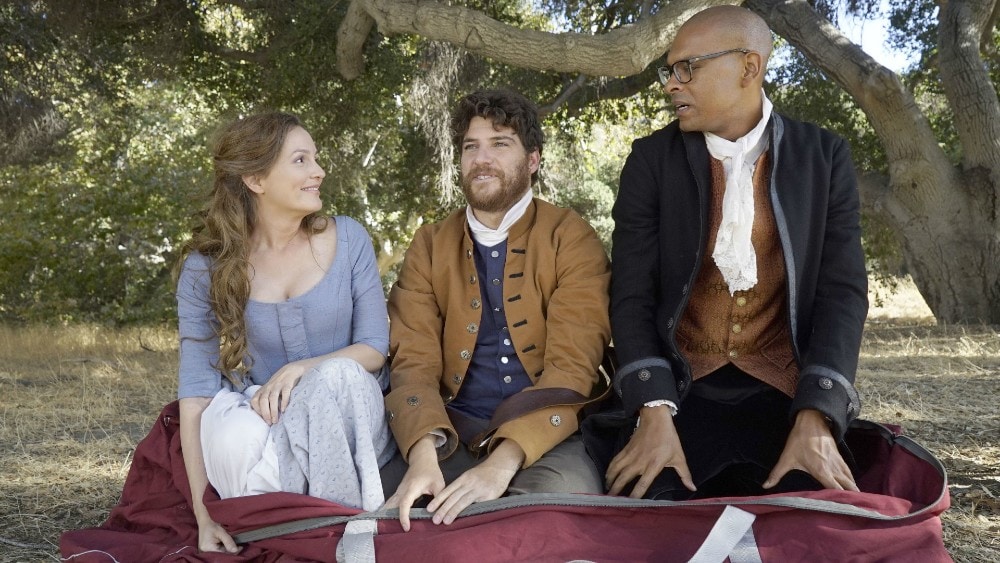
The thing about traveling back in time is, you have to be very careful that your actions in the past won’t affect the future (which is essentially your actual present).
Most of the time, that’s something you wouldn’t know until you go back to your time. In Making History , however, Dan Chambers travels back in time to right before the American Revolution and sets off a series of events that seriously mess up the future.
Being able to constantly travel between time periods, Dan recruits the help of history professor Chis Parrish to travel with him and ensure that the American Revolution still takes place.
Where to watch Making History:
Quantum leap, nbc (1989 – 1993).
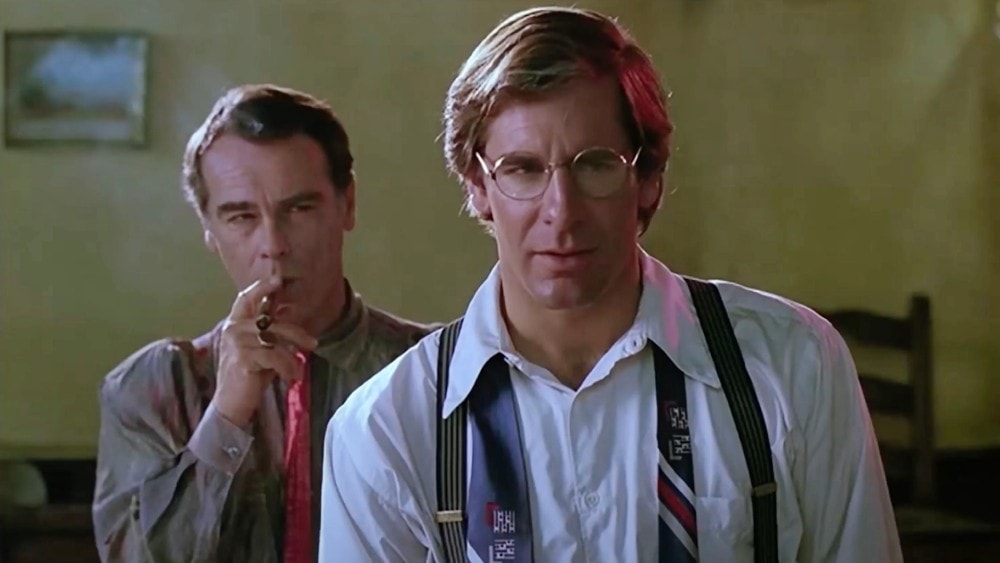
The title of NBC’s sci-fi comedy-drama Quantum Leap is also the name of the time travel machine that accidentally sends its creator, physicist Dr. Sam Beckett, back into the past.
Now, he’s stuck – and not as himself, either!
Sam discovers that he jumped into the body of a stranger and because he’s still himself, doesn’t know all the details of his current identity.
With the help of his friend Al, who appears as a hologram only he can see, he must fix something that went wrong so he can jump in time again and eventually get back to his own body.
Where to watch Quantum Leap:
Quantum leap, nbc (2022 – present).
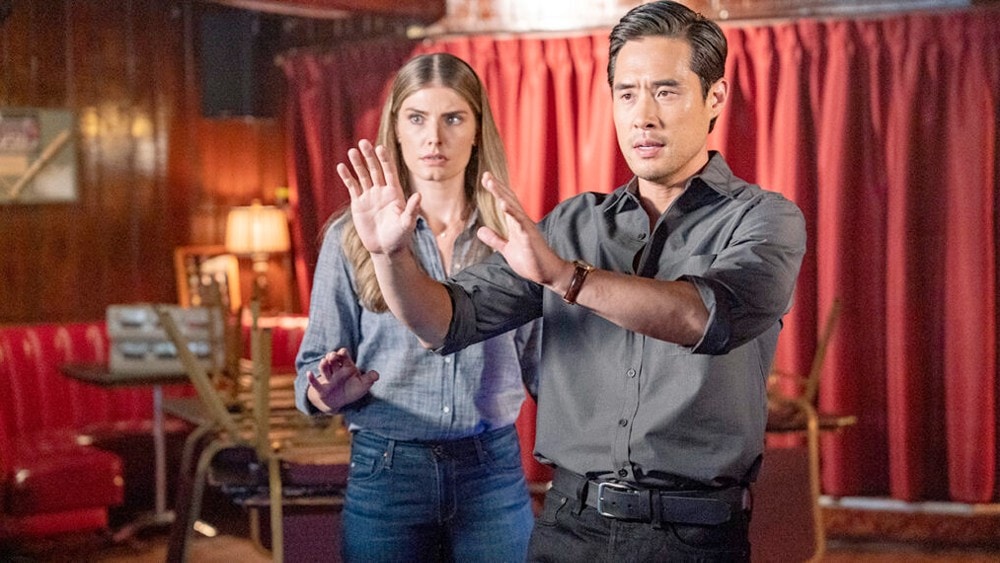
Speaking of Quantum Leap , in 2022 NBC revived the 1989 series into a more modern take on the cult classic.
In this new Quantum Leap , thirty years have passed since Dr. Sam Beckett vanished into the Quantum Leap accelerator, and the Quantum Leap project was put to rest.
Now the project is restarted with a new team, who tries to puzzle together the mysteries behind Beckett and his time-traveling machine.
So, we follow Ben Song, the lead physicist of the Quantum Leap time travel project, who gets lost in the past after leaping back in time.
As he tries to return to the present he is helped by his fiancée Addison Augustine, who appears to him as a hologram during each leap, and the team back in the present time.
Where to watch Quantum Leap reboot:
The way home, hallmark channel (2023 – present).

Among the newest time travel shows on this list is Hallmark’s The Way Home which has already been renewed for a second season.
The Way Home follows three generations of Landry women who learn that they can time travel after discovering a magic pond on their family’s farm in Port Haven.
When Kat and her daughter Alice return to Port Haven and are forced to move in with Alice’s estranged mother Del, the three women use time travel to uncover their family history, including what really happened to Kat’s little brother Jacob and whether they can prevent his disappearance.
Where to watch The Way Home:
Russian doll, netflix (2019 – 2022).
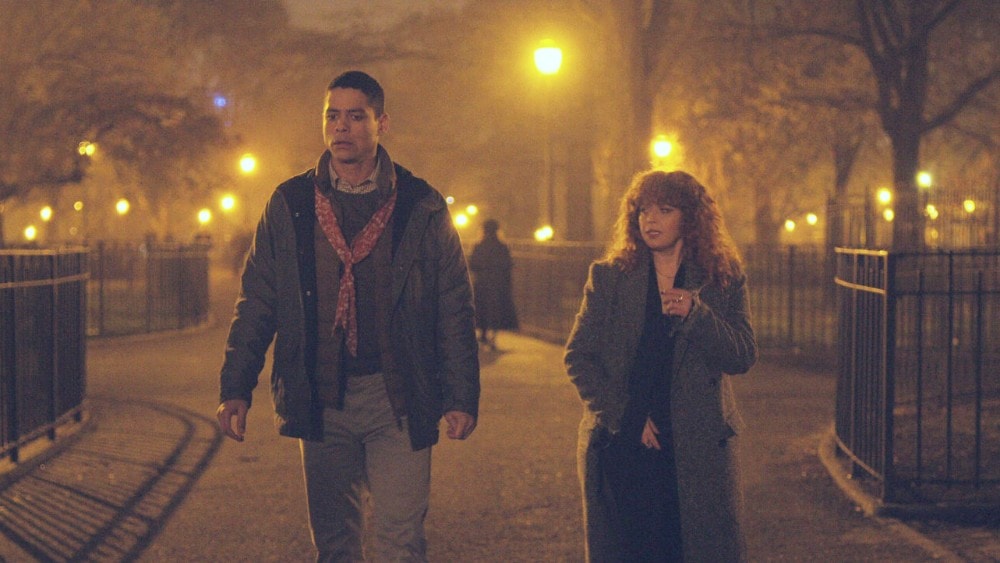
Netflix’s Russian Doll deviates from the traditional time travel theme of a willing traveler in one specific timeline because Russian Doll’s protagonist Nadia Vulvokov not only has absolutely no choice or control over her so-called time traveling, but hers is also a time loop.
She wakes up every day having to relive the day of her 36th birthday party in New York City; every time, she dies and comes back to the exact same moment.
Every time, Nadia scrambles to figure out what happens to her and tries to prevent her death, leading her to find Alan, a man who is experiencing the same time loop.
Where to watch Russian Doll:
Undone, prime video (2019 – present).
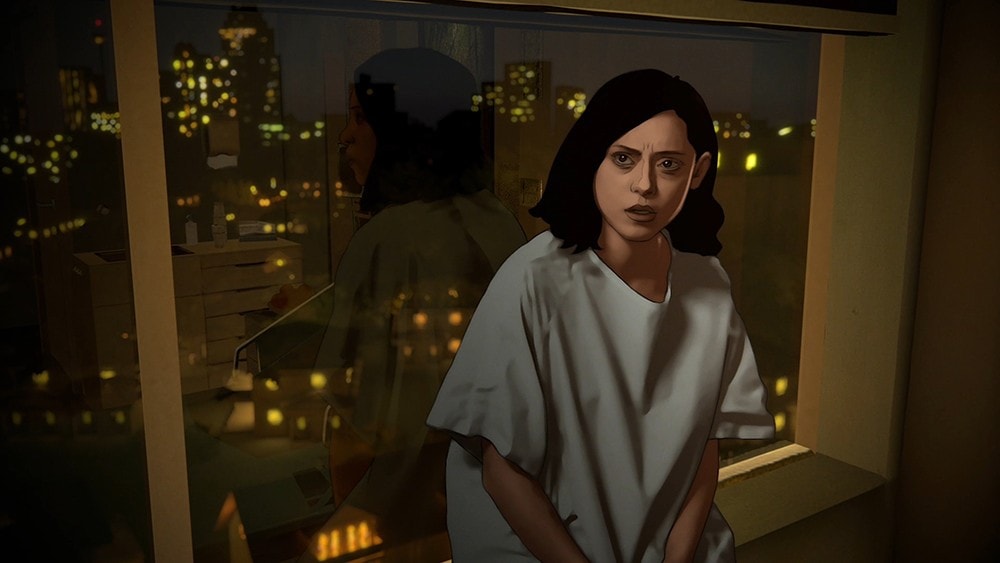
Undone may be an animated series, but it certainly isn’t geared toward younger audiences; though there is a touch of comedy, the series leans more towards the psychological drama genre and “explores the elastic nature of reality”.
The series follows Alma Winograd-Diaz right after she gets into a near-fatal car accident.
Right before the crash, she has a strange vision of her dead father, and right after it, she finds that she now has the ability to manipulate and move through time.
Using this newfound power, she travels between time periods to get to the bottom of the mystery surrounding her father’s death.
Where to watch Undone:
Voyagers, nbc (1982 – 1983).
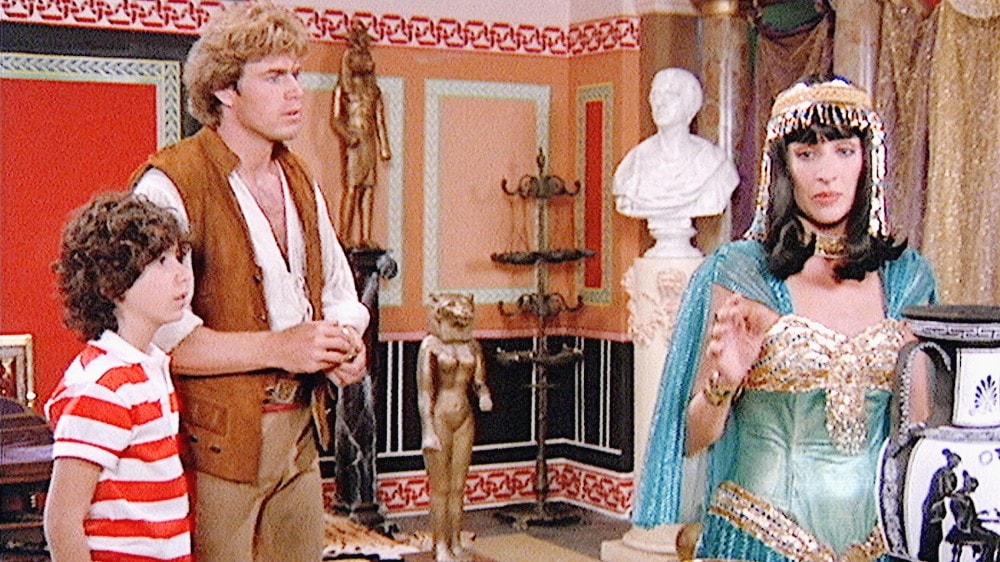
Premiering back in the early 1980s, NBC’s Voyagers! Is set in a world where time travel already exists.
In fact, there’s already a secret society in place that trains its members, called Voyagers, to go back in time and make sure that historical events happen exactly the way they’re supposed to – otherwise it could affect the present in unexpected ways.
One such Voyager is Phineas Bogg, although he isn’t exactly the best at the job.
During an accidental trip to 1982, he meets the young Jeffrey Jones and ends up bringing him along on one of his missions.
Having lost his Guidebook, Phineas now needs to rely on the extremely smart Jeffrey to get history right.
Where to watch Voyagers!:
Fringe, fox (2008 – 2013).
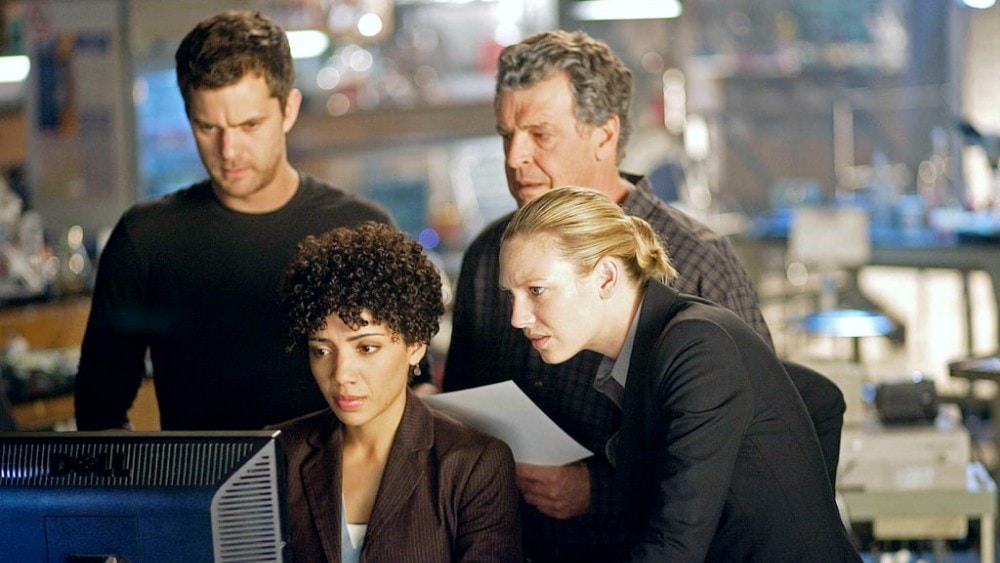
Fox’s Fringe is a series that was well into the science fiction genre, with parallel universes, supernatural abilities, biotechnology, doomsday predictions, and of course, time travel.
The title is taken from fringe science, which is a branch that deals with scientific theories riddled with skepticism or even having been disproven already.
In Fringe , Special Agent Olivia Dunham is assigned to oversee the FBI ’s Fringe Division, which is run by Peter Bishop and his father Walter.
Together, the team uses both fringe science and Olivia’s knowledge in investigative techniques to explore the unexplained.
In the process, they discover a larger mystery involving parallel universes and alternate timelines .
Where to watch Fringe:
Time after time, abc (2017).
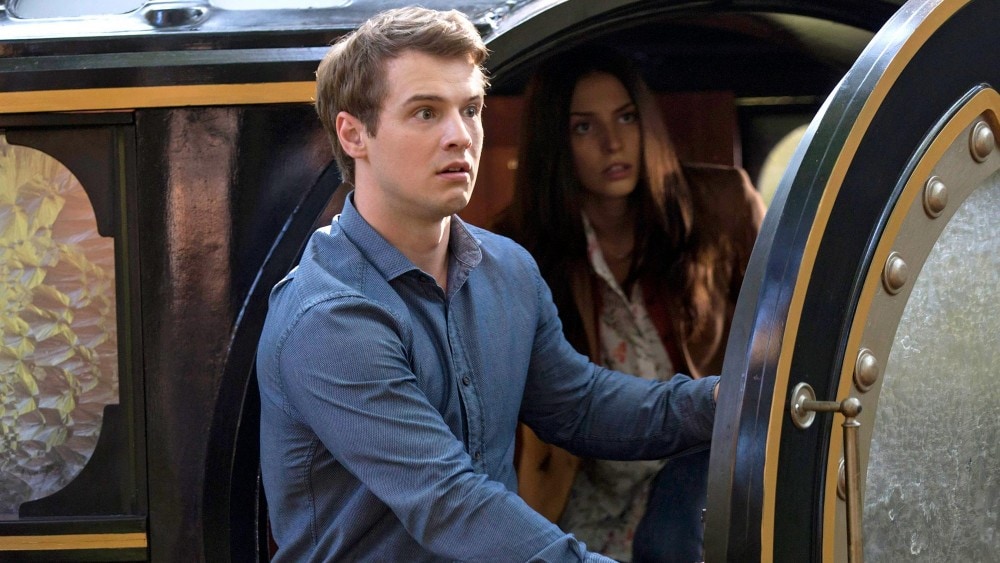
ABC’s Time After Time is based on the novel of the same name written by Kevin Williamson in 1979.
In addition to that, each episode takes its title from a line in Cyndi Lauper’s song, which was inspired by the film (and subsequently, the same book!).
In Time After Time , we are taken to H.G. Wells’ home in 1893.
During a dinner party, he reveals his time machine – right before his guest John Stevenson is arrested for actually being Jack the Ripper .
John escapes through the time machine and Wells follows him straight into the present: 2017. Thus begins a cat-and-mouse game as John attempts to gain control of the machine.
Where to watch Time After Time:
11.22.63, hulu (2016).
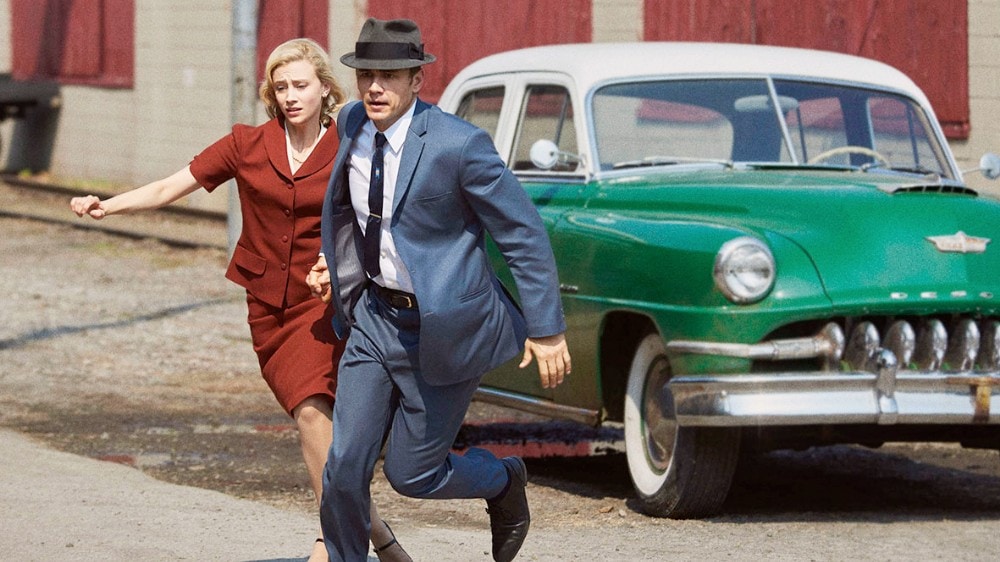
When you have anything with Stephen King involved, you know it’s going to be great.
Hulu’s eight-episode miniseries 11.22.63 is based on King’s novel 11/22/63 and is a science fiction thriller like no other.
Starring James Franco in the lead role, 11.22.63 follows Jake Epping, an English teacher from Maine .
His best friend Al reveals a time travel machine and asks him to take over the mission he’s been working on: to travel to the 60s and prevent the assassination of President John F. Kennedy.
Will Jake be successful in changing a past that simply refuses to be changed?
Where to watch 11.22.63:
The 4400, usa network/sky one (2004 – 2007).
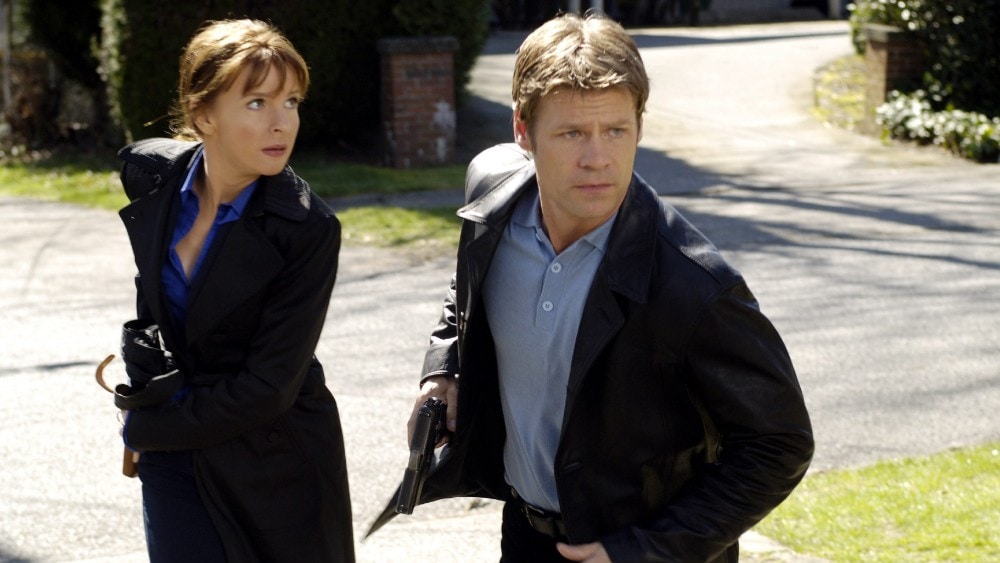
The 4400 is yet another slightly different take on the idea of time travel, in that there has been just one (fairly significant) shift forward in time, to the present.
Beginning in 1946, individuals who were easily overlooked or marginalized by society slowly began disappearing through beams of green light.
Now, all 4400 of them (hence the title) have been returned to the present day – without having aged a day and in some cases, even manifesting supernatural abilities like telekinesis, healing, and telepathy.
Tom Baldwin and Diana Skouris are assigned to investigate the phenomenon and find out why the 4400 have returned.
NOTE: For a fresher take on the show, you can also check out the reboot of the original series which is currently airing on The CW.
Where to watch The 4400:
Somewhere between, abc (2017).
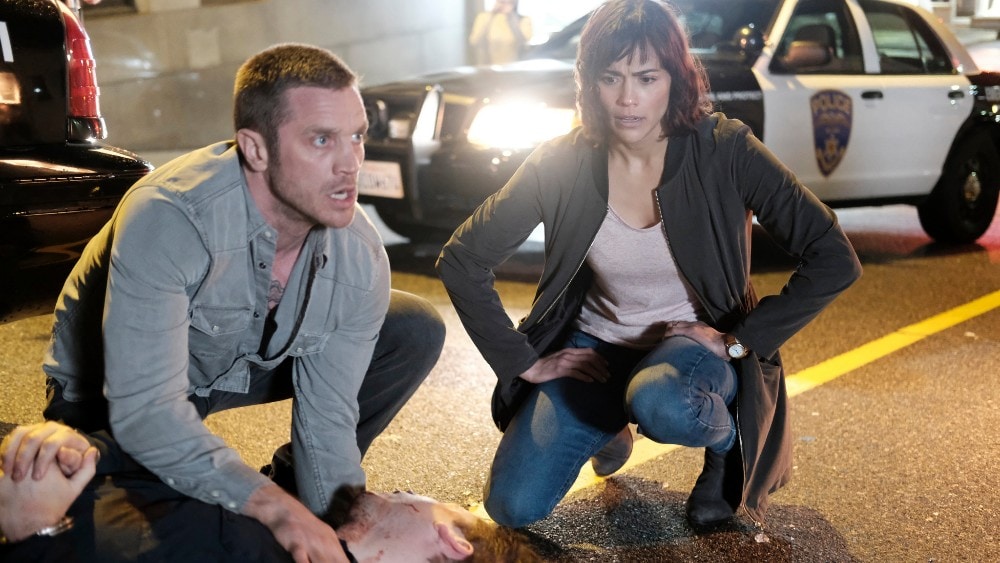
When tragedy strikes our lives, we always wish there was something we could’ve done to prevent it.
In ABC’s Somewhere Between we meet Laura Price, a successful news producer with a great career, a loving husband who’s a district attorney, and a beautiful daughter named Serena.
However, her life changes when the serial killer she is helping the cops to catch kills Serena.
Distraught with grief , Laura attempts to complete suicide but is unsuccessful, instead waking up having time-traveled to a week before Serena’s death.
She teams up with Nico, a former SFPD detective who experienced the same reset and wants to find the real killer to change his brother’s fate as well.
Where to watch Somewhere Between:
Terra nova, fox (2011).
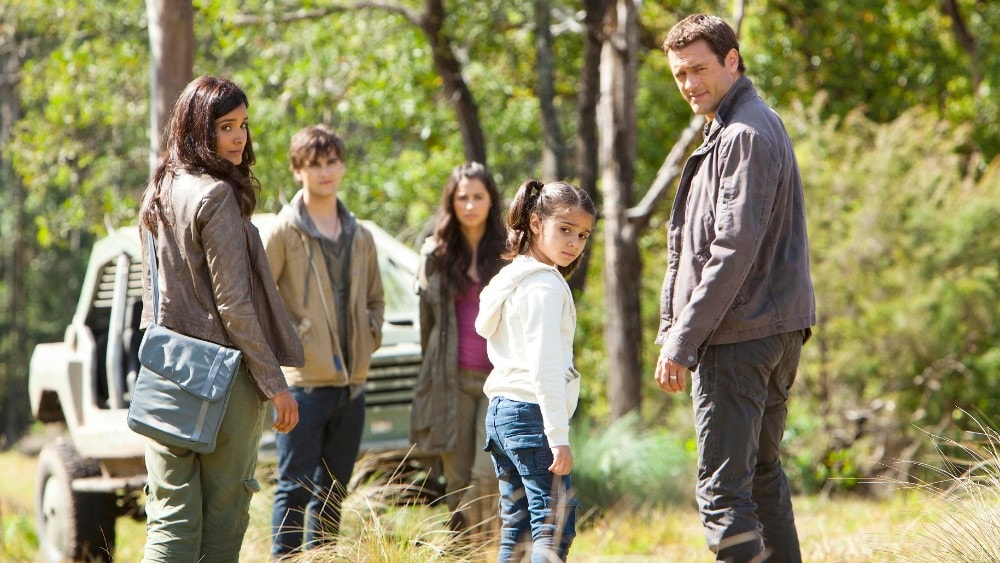
Terra Nova takes its viewers to both extremes of the time-traveling timeline.
The present-day is 2149, where overpopulation has threatened to deplete the Earth’s resources.
In an attempt to save Earth and mankind, scientists have found a way to travel back in time, sending groups of humans back to the Cretaceous Period to set up colonies.
Terra Nova focuses primarily on Elisabeth and Jim Shannon, and their three children, who have joined the 10th pilgrimage to Terra Nova.
They offer their expertise as a trauma surgeon and former narcotics detective and help those in charge with stopping those whose intentions go against the greater good.
Where to watch Terra Nova:
Frequency, the cw (2016 – 2017).
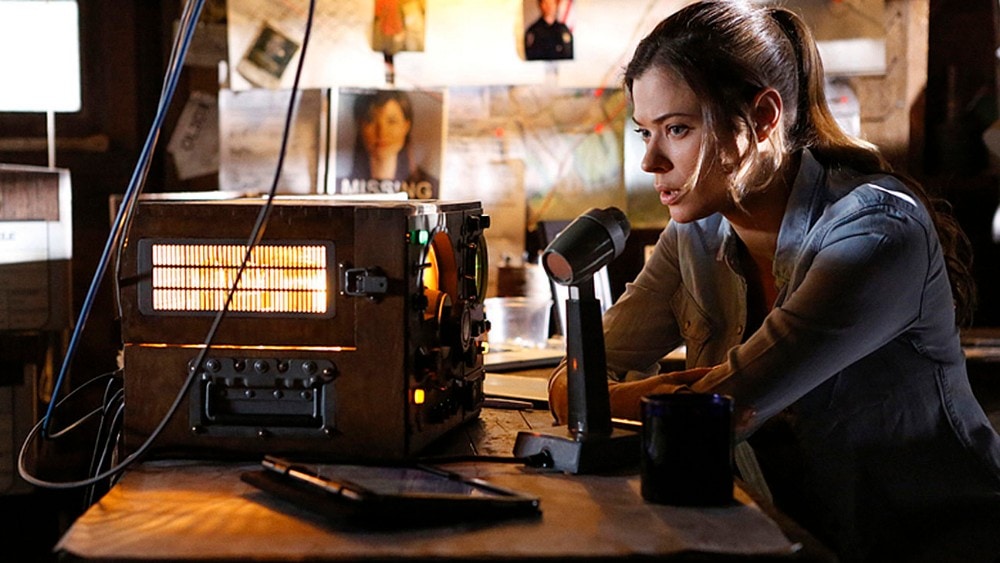
One concept in time travel is known as “the butterfly effect”, wherein one small change in time may have great effects elsewhere.
Frequency demonstrates this concept perfectly.
Raimy Sullivan is an NYPD detective who, after a strange weather phenomenon, discovers that she can communicate with her dead father through his old ham radio.
Believing he was a corrupt cop, she learns the truth and warns him of his murder, thus saving his life.
However, this has profound effects on the future – Raimy’s present.
Now, they must work together across time to save her father and preserve the present.
Where to watch Frequency:
Life on mars, bbc one (2006).
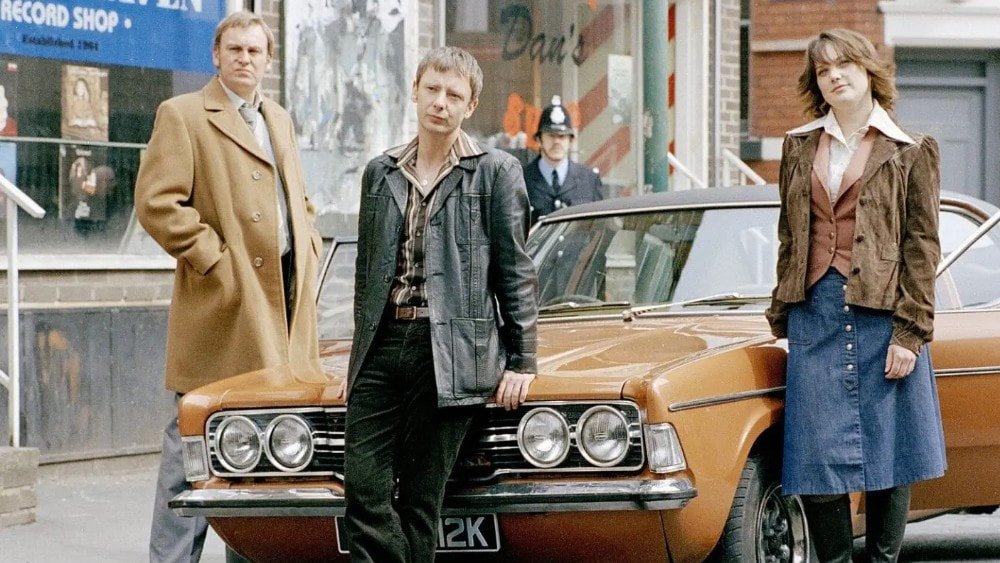
In many of the shows on the list so far, the protagonists experience a time loop that’s triggered at the point of their death.
It’s no different for Sam Tyler, the main character in the British series Life on Mars .
Sam is a Detective Chief Inspector with the Greater Manchester Police, but one day he accidentally gets hit by a car.
When he awakens, he’s in 1973 and working at one rank lower than he was: Detective Inspector.
The selling point of Life on Mars , however, is that we’re left unsure if Sam’s predicament is due to his actual death, a comatose, or time travel.
Where to watch Life on Mars:
Always a witch, netflix (2019 – 2020).

Always A Witch (or Siempre Bruja in its original Spanish title) is a Colombian series that is set in both present-day Colombia and the 17th century .
The series follows Carmen Eguiliuz, a young 19-year-old witch who, after committing the crime of falling in love with a white man in 1646 colonial Colombia, is scheduled to be burned at the stake.
She gets a chance to escape to a new life when the mysterious wizard Aldemar makes a deal with her: he will save the man she loves if she travels into the future to find the woman who can break his curse.
Where to watch Always a Witch:
Beforeigners, hbo (2019 – present).

HBO’s Beforeigners is a Norwegian sci-fi crime drama series and the first Norwegian original from HBO Europe.
The title is a clever play on words centered on the general plot: a group of “foreigners” has suddenly shown up at a neighborhood in Oslo, and they are all from “before” times, or several different time periods in history.
Whether from the Viking period , the Stone Age, or the more recent 19th century , each of these ‘Beforeigners’ tries to integrate in modern-day Norwegian society.
One of them even partners with a detective to investigate first a murdered Stone Age woman, then a series of murderers tied to Jack the Ripper.
Where to watch Beforeigners:
Alice, sbs tv (2020).

Alice was a South Korean sci-fi series that aired in late 2020.
In the lead-up to the main plot, the show’s background is explained to its viewers.
Set in 2050, time travel is monitored by an agency called Alice, which sends its clients to the past to help find closure with deceased loved ones.
Alice one day sends two agents to 1992 in order to find the Book of Prophecy, but one of them disappears with the book and her unborn child.
In 2020, the child becomes a detective and in his investigation into his mother’s death in 2010, discovers the existence of Alice and time travel.
Where to watch Alice:
Live up to your name, tvn (2017).

Yet another South Korean time travel series , Live Up to Your Name initially takes its viewers some 400 years into the past, right in the middle of the Joseon dynasty.
There we meet Heo Im, a doctor of traditional Korean medicine who also specializes in acupuncture.
On one of his treatments of the king’s migraines, he made a mistake and was charged with treason.
Chased by the king’s soldiers, he’s shot with an arrow and presumed dead when he falls into the river – except he ends up waking up in present-day Seoul instead, where he meets cardiothoracic surgeon Choi Yeon-kyung.
Where to watch Live Up to Your Name:
My only love song, netflix (2017).

Our third South Korean series is Netflix’s My Only Love Song , which aired in 2017.
We start off in modern-day Korea where we meet Soo-jung, a talented and top-level actress.
However, it seems that the fame may have gotten to her head as she’s arrogant, and believes fame and money make the world go round.
When things don’t go her way on her new show, she winds up in a time-traveling van that takes her to the 6th century.
There, she meets a man much like herself in terms of arrogance, but his hidden soft spot and generosity towards the poor changes her perspective on her own life and self.
Where to watch My Only Love Song:
Signal, tvn (2016).

Signal is based on the 2000 American film Frequency , but another thing that sets this South Korean series apart from others is that the cases investigated in the series are also based on real-life crimes in the country.
Signal follows a cold case profiler from 2015 and a detective from 1989 simultaneously; they discover they’re able to communicate with each other through an old walkie-talkie.
Using this unique ability to provide much-needed foresight in investigations, they team up to both solve and in some cases, even prevent these horrific crimes.
Where to watch Signal:
Rooftop prince, sbs (2012).

Last but not least, South Korea brings its last time-traveling series to the table with Rooftop Prince , a comedy-drama filled with intrigue, mixed identities, and possible reincarnations.
Crown Prince Lee Gak from the Joseon dynasty accidentally time travels to 2012 with three others from his entourage, and their lives are thrown into a whirlwind.
He crosses paths with Se-na, who looks exactly like his recently deceased wife.
In the hopes of getting answers about his wife’s mysterious drowning, he assumes the identity of another man who he also looks exactly like and attempts to marry Se-na in this timeline as well.
Where to watch Rooftop Prince:
11 comments.
Tomorrow people cw
You forgot The Time Tunnel, an Irwin Allen sci-fi show (Voyage to the Bottom of the Sea, Lost In Space, Land of The Giants), all classic 60s sci-fi
Journeyman should also be on this list. It was only half a season on NBC but it wraps up to a satisfying conclusion.
Fantastic acting and interesting characters.
Glad someone else watched Journeyman. I thought I’d was a great spiritual successor to Quantum Leap.
Journeyman is one of the good shows u can watch but qunatum leap i watched and didnt like
Where is The Time Tunnel?????
Another show for your list is “Being Erica” (CBC, 2009-2011). Excellent writing, and very unique.
i was looking for this comment. such an underrated show
I concur. This was definitely a great one. It certainly provides a lot of food for thought.
Some of the information in the Doctor Who one is wrong. It started in 1963, it was only revived in 2005 (you put 2006), and it’s been going for 39 seasons, as of June 2022
Thanks for letting me know! I updated the article accordingly.
Leave a Reply Cancel reply
Your email address will not be published. Required fields are marked *
Save my name, email, and website in this browser for the next time I comment.
Ad-free. Influence-free. Powered by consumers.
The payment for your account couldn't be processed or you've canceled your account with us.
We don’t recognize that sign in. Your username maybe be your email address. Passwords are 6-20 characters with at least one number and letter.
We still don’t recognize that sign in. Retrieve your username. Reset your password.
Forgot your username or password ?
Don’t have an account?
- Account Settings
- My Benefits
- My Products
- Donate Donate
Save products you love, products you own and much more!
Other Membership Benefits:
Suggested Searches
- Become a Member
Car Ratings & Reviews
2024 Top Picks
Car Buying & Pricing
Which Car Brands Make the Best Vehicles?
Car Maintenance & Repair
Car Reliability Guide
Key Topics & News
Listen to the Talking Cars Podcast
Home & Garden
Bed & Bath
Top Picks From CR
Best Mattresses
Lawn & Garden
TOP PICKS FROM CR
Best Lawn Mowers and Tractors
Home Improvement
Home Improvement Essential
Best Wood Stains
Home Safety & Security
HOME SAFETY
Best DIY Home Security Systems
REPAIR OR REPLACE?
What to Do With a Broken Appliance
Small Appliances
Best Small Kitchen Appliances
Laundry & Cleaning
Best Washing Machines
Heating, Cooling & Air
Most Reliable Central Air-Conditioning Systems
Electronics
Home Entertainment
FIND YOUR NEW TV
Home Office
Cheapest Printers for Ink Costs
Smartphones & Wearables
BEST SMARTPHONES
Find the Right Phone for You
Digital Security & Privacy
MEMBER BENEFIT
CR Security Planner
Take Action
Travel Products
- Overview Overview
- Ratings Ratings
- Recommended Recommended

Features & Specs
Price & shop.
Unlock to see our ratings and compare products side by side
Ratings Scorecard
Test Results
Keeping drinks hot
How long the travel cup keeps hot liquids hot.
Ease of cleaning
How easy it is to clean the nooks and crannies of the lid.
Keeping drinks cold
How long the travel cup keeps cold liquids cold.
Gasket removal
How easy it is to remove the gaskets from the cup's lid for cleaning.
Gasket replacement
How easy it is to replace the gaskets from the cup's lid after cleaning them.
Ease of use
A combination of factors: leak-proof-ness, ease of opening the lid, drinking without the lid, and fit into a typical car's drink holder.
- Excels at removing embedded dirt from carpets
- You must bend to adjust the pile height
Unlock for unbiased ratings and reviews for products and services you use everyday
Bowl material
The material that the inner surface of the cup is made of.
More From Consumer Reports
Oops you no longer have digital access to ratings and reviews..
Reactivate now to get the information you were looking for!
You will get digital access to reviews and ratings for over 8,500 products and services to help you make better choices for life’s big moments and the everyday ones in between.
If you feel you have received this message in error, please view our customer care FAQs or access your account information here.

Unlock the Power of Google Flights: Your Guide to Traveling Smarter
- Google Flights experienced a 36% increase in searches for "cheap flights" during the COVID-19 pandemic.
- The tool utilizes machine learning algorithms to predict flight delays with 85% accuracy.
- Google Flights aggregates data from various airlines and travel agencies, facilitating comparison of prices and options.
- Brian Kelly , Founder of The Points Guy, praises Google Flights for its money-saving features and user-friendly design.
- The article provides insider tips on how to use Google Flights effectively for smarter travel.
Fly Cheap: Capitalizing on Google Flights
During the COVID-19 pandemic in 2020, Google Flights saw a staggering 36% increase in searches for "cheap flights". This surge reflects the public's growing recognition of the platform as an efficient and reliable tool to optimize travel.
The Power of Machine Learning in Your Pocket
Did you know Google Flights leverages machine learning algorithms to predict flight delays? With a whopping 85% accuracy rate, it's your secret weapon for smoother, stress-free travel.
Brian Kelly’s Take on Google Flights
"Google Flights is a powerful tool for travelers because it aggregates data from various airlines and travel agencies, allowing users to compare prices and options easily," says Brian Kelly , Founder and CEO of The Points Guy. "The platform's features, such as price tracking and flexible date search, can help people save money and find the best deals on airfare."
Your Personal Travel Consultant: Navigating Google Flights
Like a loyal travel consultant, Google Flights offers a myriad of features designed to make your travel planning a breeze. From predicting prices to suggesting alternative airports and dates, here's how to make the most of these features:
Price Tracking: Google Flights allows you to track flight prices, notifying you when prices drop or are about to rise. It's like having your own personal financial advisor for flights.
Flexible Dates: This feature allows you to view the cost of flights on different days, helping you find cheaper options.
Explore Map: Feeling adventurous? Use this feature to view flight prices to various destinations worldwide, all based on your budget and preferred travel dates.
The Secret Features You Should Know About
Google Flights is not just your average flight aggregator; it's also an unparalleled travel planning tool. Let's delve into some secret features that even seasoned travelers might not know:
Multi-City Trips: Want to add a quick detour to Paris on your way to Tokyo? Google Flights has you covered with its multi-city search option. You can plan a trip involving up to five cities, and Google Flights will calculate the best route for you.
Nearby Airports: With Google Flights, you don’t have to limit yourself to one airport. The tool can provide prices for other airports near your destination, potentially saving you money.
Price Guarantee: This feature gives you peace of mind. If Google is confident that flight prices won't drop further, they'll guarantee it. If the price does drop after you book, Google might refund you the difference.
Transform Your Travel Experience
In conclusion , Google Flights is much more than a flight search engine. It's a comprehensive tool that provides valuable insights into your travel planning. By effectively leveraging these tools and features, you can make informed decisions and have smoother, more cost-effective travel experiences.
Go Green with Google Flights
Google Flights is not just a tool for finding the best flight deals; it also helps environmentally conscious travelers make greener choices. Google Flights includes carbon emissions data for flights, allowing you to choose the less carbon-intensive options. Now, you can jet set across the globe while also doing your bit to save it.
Travel Inspiration? Google Flights Has Got You Covered
If you're bitten by the travel bug but unsure of your next destination , Google Flights comes to the rescue. Its 'Explore' feature provides you with inspiration by suggesting destinations based on your interests like beaches, adventure, culture, wildlife, and more. All you need to do is enter your preferred travel dates and let Google Flights serve you an array of exciting options within your budget.
What makes Google Flights unique from other flight search engines?
Google Flights aggregates data from various airlines and travel agencies, making it easier for users to compare prices and options.
How accurate is Google Flights' flight delay prediction?
Google Flights uses machine learning algorithms to predict flight delays with an accuracy rate of up to 85%.
What are some unique features of Google Flights?
Google Flights offers a range of features, including price tracking, flexible date search, and an explore map to view flight prices to various destinations worldwide.
Is Google Flights a reliable source for finding cheap flights?
Yes, Google Flights is a reliable tool for finding cheap flights. It saw a 36% increase in searches for "cheap flights" during the COVID-19 pandemic in 2020, highlighting its trustworthiness.
What are some tips for using Google Flights effectively?
Some tips for using Google Flights effectively include leveraging its price tracking feature, using the flexible date search to find cheaper options, and exploring the map for budget-friendly destinations.
Can Google Flights help me plan a multi-city trip?
Yes, Google Flights offers a multi-city search option, allowing you to plan a trip involving up to five cities.
Does Google Flights offer a price guarantee?
Yes, in some cases, if Google is confident that flight prices won't drop further, they offer a price guarantee. If the price does drop after you book, Google may refund you the difference.
Can Google Flights show prices for nearby airports?
Yes, Google Flights can provide prices for other airports near your destination, which might help save money on your travel costs.
How does Google Flights help make eco-friendly travel choices?
Google Flights includes carbon emissions data for flights, enabling travelers to opt for less carbon-intensive options.
Can Google Flights suggest destinations based on interests?
Yes, Google Flights' 'Explore' feature can suggest destinations based on your interests like beaches, adventure, culture, and more.
What makes Google Flights a comprehensive travel planning tool?
Google Flights aggregates data from various airlines, provides price tracking, suggests alternative dates and airports, and even helps plan multi-city trips. It also offers a price guarantee and provides carbon emissions data for eco-friendly travel.
In the fast-paced digital age , Google Flights is proving to be an indispensable tool for modern travelers. By harnessing its power, you can transform your travel planning experience, saving both time and money.
- The Points Guy
- Google Flights
- CNBC Report

- United States
- United Kingdom
DBOS: A better way to build applications?
An operating system on top of a distributed database, dbos is a tantalizing glimpse of something that may eventually turn out to be cool..
Contributor, InfoWorld |

DBOS Cloud 1.0
At the end of March 2024, Mike Stonebraker announced in a blog post the release of DBOS Cloud , “a transactional serverless computing platform, made possible by a revolutionary new operating system, DBOS, that implements OS services on top of a distributed database.” That sounds odd, to put it mildly, but it makes more sense when you read the origin story:
The idea for DBOS (DataBase oriented Operating System) originated 3 years ago with my realization that the state an operating system must maintain (files, processes, threads, messages, etc.) has increased in size by about 6 orders of magnitude since I began using Unix on a PDP-11/40 in 1973. As such, storing OS state is a database problem. Also, Linux is legacy code at the present time and is having difficulty making forward progress. For example there is no multi-node version of Linux, requiring people to run an orchestrator such as Kubernetes . When I heard a talk by Matei Zaharia in which he said Databricks could not use traditional OS scheduling technology at the scale they were running and had turned to a DBMS solution instead, it was clear that it was time to move the DBMS into the kernel and build a new operating system.”
If you don’t know Stonebraker , he’s been a database-focused computer scientist (and professor) since the early 1970s, when he and his UC Berkeley colleagues Eugene Wong and Larry Rowe founded Ingres . Ingres later inspired Sybase, which was eventually the basis for Microsoft SQL Server. After selling Ingres to Computer Associates, Stonebraker and Rowe started researching Postgres, which later became PostgreSQL and also evolved into Illustra, which was purchased by Informix.
I heard Stonebraker talk about Postgres at a DBMS conference in 1980. What I got out of that talk, aside from an image of “jungle drums” calling for SQL , was the idea that you could add support for complex data types to the database by implementing new index types, extending the query language, and adding support for that to the query parser and optimizer. The example he used was geospatial information, and he explained one kind of index structure that would make 2D geometric database queries go very fast. (This facility eventually became PostGIS . The R-tree currently used by default in PostGIS GiST indexes wasn’t invented until 1984, so Mike was probably talking about the older quadtree index.)
Skipping ahead 44 years, it should surprise precisely nobody in the database field that DBOS uses a distributed version of PostgreSQL as its kernel database layer.
The DBOS system diagram makes it clear that a database is part of the OS kernel. The distributed database relies on a minimal kernel, but sits under the OS services instead of running in the application layer as a normal database would.
DBOS features
DBOS Transact, an open-source TypeScript framework, supports Postgres-compatible transactions , reliable workflow orchestration , HTTP serving using GET and POST, communication with external services and third-party APIs, idempotent requests using UUID keys, authentication and authorization , Kafka integration with exactly-once semantics, unit testing , and self-hosting . DBOS Cloud, a transactional serverless platform for deploying DBOS Transact applications, supports serverless app deployment , time-travel debugging , cloud database management , and observability .
Let’s highlight some major areas of interest.
DBOS Transact
The code shown in the screenshot below demonstrates transactions, as well as HTTP serving using GET. It’s worthwhile to read the code closely. It’s only 18 lines, not counting blank lines.
The first import (line 1) brings in the DBOS SDK classes that we’ll need. The second import (line 2) brings in the Knex.js SQL query builder , which handles sending the parameterized query to the Postgres database and returning the resulting rows. The database table schema is defined in lines 4 through 8; the only columns are a name string and a greet_count integer.
There is only one method in the Hello class, helloTransaction . It is wrapped in @GetApi and @Transaction decorators, which respectively cause the method to be served in response to an HTTP GET request on the path /greeting/ followed by the username parameter you want to pass in and wrap the database call in a transaction, so that two instances can’t update the database simultaneously.
The database query string (line 16) uses PostgreSQL syntax to try to insert a row into the database for the supplied name and an initial count of 1. If the row already exists, then the ON CONFLICT trigger runs an update operation that increments the count in the database.
Line 17 uses Knex.js to send the SQL query to the DBOS system database and retrieves the result. Line 18 pulls the count out of the first row of results and returns the greeting string to the calling program.
The use of SQL and a database for what feels like should be a core in-memory system API, such as a Linux atomic counter or a Windows interlocked variable, seems deeply weird. Nevertheless, it works.
This TypeScript code for a Hello class is generated when you perform a DBOS create operation. As you can see, it relies on the @GetApi and @Transaction decorators to serve the function from HTTP GET requests and run the function as a database transaction.
DBOS Time Travel Debugger
When you run an application in DBOS Cloud it records every step and change it makes (the workflow) in the database. You can debug that using Visual Studio Code and the DBOS Time Travel Debugger extension . The time-travel debugger allows you to debug your DBOS application against the database as it existed at the time the selected workflow originally executed.
To perform time-travel debugging, you first start with a CodeLens to list saved trace workflows. Once you choose the one you want, you can debug it using Visual Studio Code with a plugin, or from the command line.
Time-travel debugging with a saved workflow looks very much like ordinary debugging in Visual Studio Code. The code being debugged is the same Hello class you saw earlier.
DBOS Quickstart
The DBOS Quickstart tutorial requires Node.js 20 or later and a PostgreSQL database you can connect to, either locally, in a Docker container, or remotely. I already had Node.js v20.9.0 installed on my M1 MacBook, but I upgraded it to v20.12.1 from the Node.js website.
I didn’t have PostgreSQL installed, so I downloaded and ran the interactive installer for v16.2 from EnterpriseDB. This installer creates a full-blown macOS server and applications. If I had used Homebrew instead, it would have created command-line applications, and if I had used Postgres.app, I would have gotten a menu-bar app.
The Quickstart proper starts by creating a DBOS app directory using Node.js.
Then you configure the app to use your Postgres server and export your Postgres password into an enviroment variable.
After that, you create a “Hello” database using Node.js and Knex.js.
With that complete, you build and run the DBOS app locally.
At this point, you can browse to http://localhost:3000 to test the application. That done, you register for the DBOS Cloud and provision your own database there.
Finally, you can register and deploy your app in the DBOS Cloud.
The “Hello” application running in the DBOS Cloud counts every greeting. It uses the code you saw earlier.
DBOS applications
The “Hello” application does illustrate some of the core features of DBOS Transact and the DBOS Cloud, but it’s so basic that it’s barely a toy. The Programming Quickstart adds a few more details, and it’s worth your time to go through it. You’ll learn how to use communicator functions to access third-party services (email, in this example) as well as how to compose reliable workflows. You’ll literally interrupt the workflow and restart it without re-sending the email: DBOS workflows always run to completion and each of their operations executes once and only once. That’s possible because DBOS persists the output of each step in your database.
Once you’ve understood the programming Quickstart, you’ll be ready to try out the two DBOS demo applications , which do rise to the level of being toys. Both demos use Next.js for their front ends, and both use DBOS workflows, transactions, and communicators.
The first demo, E-Commerce , is a web shopping and payment processing system. It’s worthwhile reading the Under the Covers section of the README in the demo’s repository to understand how it works and how you might want to upgrade it to, for example, use a real-world payment provider.
The second demo, YKY Social , simulates a simple social network, and uses TypeORM rather than Knex.js for its database code. It also uses Amazon S3 for profile photos. If you’re serious about using DBOS yourself, you should work though both demo applications.
A tantalizing glimpse
I have to say that DBOS and DBOS Cloud look very interesting. Reliable execution and time-travel debugging, for example, are quite desirable. On the other hand, I wouldn’t want to build a real application on DBOS or DBOS Cloud at this point. I have lots of questions, starting with “How does it scale in practice?” and probably ending with “How much will it cost at X scale?”
I mentioned earlier that DBOS code looks weird but works. I would imagine that any programming shop considering writing an application on it would be discouraged or even repelled by the “it looks weird” part, as developers tend to be set in their ways until what they are doing no longer works.
I also have to point out that the current implementation of DBOS is very far from the system diagram you saw near the beginning of this review. Where’s the minimal kernel? DBOS currently runs on macOS, Linux, and Windows. None of those are minimal kernels. DBOS Cloud currently runs on AWS. Again, not a minimal kernel.
So, overall, DBOS is a tantalizing glimpse of something that may eventually turn out to be cool. It’s new and shiny, and it comes from smart people, but it will be awhile before it could possibly become a mainstream system.
Cost: Free with usage limits ; paid plans require you to contact sales .
Platform: macOS, Linux, Windows, AWS.
Next read this:
- Why companies are leaving the cloud
- 5 easy ways to run an LLM locally
- Coding with AI: Tips and best practices from developers
- Meet Zig: The modern alternative to C
- What is generative AI? Artificial intelligence that creates
- The best open source software of 2023
DBOS and DBOS Cloud look very interesting: Reliable execution and time-travel debugging, for example, are quite desirable. On the other hand, I wouldn’t want to build a real application on either DBOS or DBOS Cloud at this point.
- Provides reliable execution and high availability
- Supports time-travel debugging
- Has transactionality and fault tolerance
- Code for DBOS is new and different
- Nobody really has experience building apps for DBOS outside of the company
- Doesn’t actually conform to its own system diagram, at least not yet
- Software Development
- Serverless Computing
- Cloud Computing
Martin Heller is a contributing editor and reviewer for InfoWorld. Formerly a web and Windows programming consultant, he developed databases, software, and websites from 1986 to 2010. More recently, he has served as VP of technology and education at Alpha Software and chairman and CEO at Tubifi.
Copyright © 2024 IDG Communications, Inc.
Protect Your Trip »
The 7 best 3-day cruise itineraries for 2024.
Plan a long weekend getaway aboard a cruise for fun, scenery and entertainment.
The Best 3-Day Cruise Itineraries

Courtesy of Carnival Cruise Line
Hop aboard the Carnival Radiance for a short but fun-filled cruise weekend.
Whether you're short on vacation days or you only have a long weekend to spare, three-night cruises offer a fun and affordable way to get a change of scenery. These shorter sailings from the U.S. often amount to a weekend cruise and only depart from Florida and California for now. However, short cruises still let you dine and dance on board, enjoy world-class entertainment, and visit nearby destinations like Nassau in the Bahamas; Key West, Florida; or Ensenada, Mexico.
If you're looking for short cruises that pack a lot of good times into a weekend vacation, you should know that many cruise lines offer these trips, including Norwegian Cruise Line, MSC Cruises, Royal Caribbean International and Celebrity Cruises. Read on to find out which short cruises we recommend, where they depart from, and everything you can see and do over the span of three incredible nights.
3-Day Cruises From Florida
Norwegian sky from miami.

Courtesy of Norwegian Cruise Line
Dates: Aug. 2 to 5, 2024
Departure port: Miami
Stops: Key West, Florida; Great Stirrup Cay, Bahamas
Starting price: $399 per person
This three-night cruise on Norwegian Sky departs from Miami in August 2024 with stops at two iconic tropical destinations. The vessel's first stop is Key West , where cruise passengers will have the day to visit the southernmost tip of the United States, book a snorkeling or kayaking tour, or bar hop along the world-famous Duval Street. From there, the cruise stops at Great Stirrup Cay in the Bahamas, which is a private island paradise that's only for cruise passengers. Here, visitors can enjoy some beach time, plan a WaveRunner adventure or snorkel the clear waters to watch out for wildlife.
When not at port, passengers on Norwegian Sky can enjoy the ship's 10 dining options, onboard spa, casino at sea, and variety of pools and hot tubs. The Norwegian Cruise Line vessel even has a sushi bar and a Starbucks onboard, and it was completely renovated from top to bottom in 2019.
Book a Norwegian cruise on GoToSea , a service of U.S. News.
MSC Seashore from Port Canaveral

Conrad Schutt | Courtesy of MSC Cruises
Dates: Multiple dates in November and December 2024
Departure port: Port Canaveral, Florida (Orlando)
Stops: Nassau and Ocean Cay Marine Reserve, Bahamas
Starting price: $169 per person
This three-night cruise on MSC Seashore departs from Port Canaveral near Orlando and takes passengers to two tropical destinations in the nearby Bahamas . The first is the island of Nassau, which is known for its luxury resorts (including the exclusive Atlantis Paradise Island Bahamas), huge casinos and powder white sands. After that, guests can spend a second day at port at MSC Cruises ' private island, Ocean Cay MSC Marine Reserve. This island offers a perfect beach retreat for people who just want to relax, including several expansive white sand beaches with ample seating, an interior ocean lagoon for swimming, and beach bars and eateries dotted throughout.
MSC Seashore features huge pools, an onboard water park for kids, the expansive MSC Aurea Spa and 11 distinct dining venues for passengers to choose from. The ship also boasts the exclusive "ship within a ship" Yacht Club area, which offers the best of everything for discerning guests.
Find an MSC Cruises deal on GoToSea.
Celebrity Reflection from Fort Lauderdale

Courtesy of Celebrity Cruises
Dates: Ongoing in 2024
Departure port: Fort Lauderdale, Florida
Stops: Perfect Day at CocoCay and Nassau, Bahamas
Starting price: $273 per person
This three-night cruise on Celebrity Cruises ' Celebrity Reflection departs from Fort Lauderdale and leaves for two days in the sunny Bahamas. The first stop gives guests a full day to enjoy at Perfect Day at CocoCay, a cruise line private island that's typically reserved for Royal Caribbean guests. This island paradise features an exclusive beach club, idyllic white sand beaches for swimming and floating, a water park, a zip line, and plenty of places to eat and drink all day. The next stop is Nassau: Visitors can dine and shop their way through the port area or book a fun day pass to the Baha Bay water park, which is located at resort Baha Mar and features waterslides, an expansive lazy river and incredible cuisine options right at the park.
Celebrity Reflection was recently refurbished in 2022. It features an incredible array of included dining options, eight specialty and exclusive dining establishments, and bars and lounges throughout the ship. The Retreat, a VIP ship-within-a-ship concept, is also offered on board for those who want an elevated cruising experience.
Explore Celebrity Cruises on GoToSea.
Tips on Trips and Expert Picks Newsletter
Travel tips, vacation ideas and more to make your next vacation stellar.
Sign up to receive the latest updates from U.S News & World Report and our trusted partners and sponsors. By clicking submit, you are agreeing to our Terms and Conditions & Privacy Policy .
Disney Dream from Fort Lauderdale

Courtesy of Disney Cruise Line
Dates: Nov. 6 to 9, 2024
Stops: Disney Lookout Cay at Lighthouse Point and Disney Castaway Cay, Bahamas
Starting price: $1,973 per stateroom
This three-night Bahamian cruise on Disney Dream stops at two exclusive destinations in the Bahamas – Disney Lookout Cay at Lighthouse Point, then Disney Castaway Cay. The first stop offers incredible beaches with play areas and crystal-clear water for swimming, as well as the Bahamian Arts and Culture Pavilion for families who want to learn something about the local culture on vacation. At Disney Castaway Cay, families can relax the day away on white sand beaches, go biking or kayaking, ride two waterslides, and more. Both destinations even have adults-only beach areas for cruisers who are traveling kid-free.
Disney Dream holds a maximum of 4,000 passengers and has everything you would expect on an exclusive Disney Cruise Line vessel, including kids and family areas, adults-only dining options and pools, and two large theaters. The ship also has several supervised kids clubs as well as dedicated clubs for teenagers and tweens .
Read: The Top Cruises for Babies and Toddlers
Liberty of the Seas from Fort Lauderdale

Courtesy of Royal Caribbean International
Stops: Nassau and Perfect Day at CocoCay, Bahamas
Starting price: $263 per person
Royal Caribbean International also boasts a Bahamas cruise from Fort Lauderdale that stops in Nassau and at the line's private island, Perfect Day at CocoCay. In Nassau, cruisers get the chance to explore one of the most popular cruise ports throughout the Caribbean, where you can book an excursion to a local beach, plan a snorkeling adventure or play in one of the two biggest casinos throughout the region at Atlantis or Baha Mar. At Perfect Day at CocoCay, families can stay active with waterslides, book a kayaking tour or ride a hot air balloon up to 450 feet in the air.
Liberty of the Seas is also an ideal ship for families thanks to fun features like a huge onboard water park with slides, an ice skating rink with shows and the Broadway at Sea theater. The Royal Caribbean vessel also has nearly a dozen different dining venues, including Cupcake Cupboard, Johnny Rockets, a pizza kitchen and an old-world Italian eatery called Giovanni's Table.
Compare Royal Caribbean International cruises on GoToSea.
3-Day Cruises From California
Navigator of the seas from los angeles.

Dates: Throughout 2024
Departure port: Los Angeles
Stops: Ensenada, Mexico
Starting price: $282 per person
Royal Caribbean offers a three-night West Coast adventure on Navigator of the Seas that includes a fun day at sea and a full-day stop in Ensenada, Mexico. This Mexican destination is known for the many activities that can be enjoyed along its rugged shores, which can include leisurely days at nearby Estero and Mona Lisa beaches, hiking experiences, exploration of Baja California's wine region, whale watching and more.
Dates for this sailing are offered throughout 2024, and the ship itself has plenty to keep passengers enthralled while at sea. For example, Navigator of the Seas features the longest waterslide at sea, enlarged pool deck areas for relaxation, ice skating shows and shopping – not to mention Broadway-style shows with dancers, acrobats and singers. There are also 12 unique dining options onboard, including Starbucks, Jamie's Italian by Jamie Oliver and Johnny Rockets.
Carnival Radiance from Los Angeles

Dates: Jan. 26 to 29 and Sept. 24 to 27, 2024
Departure port: Long Beach (Los Angeles)
Starting price: $244 per person
Carnival Radiance also embarks on three-night journeys to Mexico from Los Angeles throughout the year, including in January and September 2024. This Carnival Cruise Line itinerary includes a fun day at sea and a stop in Ensenada, Mexico, where passengers can plan a sightseeing trip, nosh on the unique Baja cuisine the area is known for, shop for silver jewelry and other keepsakes, or spend the day relaxing on the beach.
Carnival Radiance itself serves as the perfect floating vessel for this fun weekend vacation, with onboard amenities that span the Cloud 9 Spa and WaterWorks water park with slides to a comedy club and special clubs for kids and teens. The ship also boasts an adults-only solarium and 10 different bars to choose from.
Book a Carnival cruise on GoToSea.
Why Trust U.S. News Travel
Holly Johnson is a professional travel writer and cruise expert who has covered family travel and cruises for more than a decade. She has cruised more than 40 times across most of the major cruise lines in destinations throughout the Caribbean, Europe and the Middle East. Johnson used her personal experience and research expertise to curate the itineraries for this article.
You might also be interested in:
- Cruise Packing List
- Beach Packing List
- Cruise Drink Packages: Your Options by Cruise Line
- First-Time Cruise Tips
- The Best Cruise Insurance Plans
Tags: Travel , Cruises
World's Best Places To Visit
- # 1 South Island, New Zealand
- # 4 Bora Bora
If you make a purchase from our site, we may earn a commission. This does not affect the quality or independence of our editorial content.
You May Also Like
Flight canceled or delayed what to do.
Amanda Norcross April 26, 2024

The Best Beach Hats
Megan Johnson and Sharael Kolberg April 26, 2024

The Best Florence Tours
John Rodwan April 25, 2024

The 9 Best Louisiana Swamp Tours of 2024
John Rodwan April 24, 2024

How Much Does a Cruise Cost?
Gwen Pratesi April 24, 2024

The Best Whale Watching in Cape Cod
Lyn Mettler April 24, 2024

Best Whale Watching Tours in Maine
Marisa Méndez April 23, 2024

The Best Wineries in Napa Valley
April 23, 2024

The Best East Coast Beaches
April 19, 2024

The Best Luggage Brands
Rachael Hood April 17, 2024

See A 90-Foot Waterfall On This Under-3-Mile Hike
Olympic National Park is home to some of the most beautiful waterfalls in the nation and this one is no exception.
- Olympic National Park's Marymere Falls Trail offers a magical 90-foot waterfall just outside Port Angeles, perfect for hikers.
- This well-maintained trail leads hikers through the stunning forests of Olympic National Park to witness the captivating Marymere Falls.
- Perfect for all seasons, but best experienced from April to October, providing varying views as per the weather changes, so be prepared.
Some of the most sought-after hikes in the United States are those that have breathtaking waterfalls. Just to be able to hear the crashing of the water from the falls into the pool below, to witness the power of the falls, or feel the mist on your skin is reason enough for hikers to take long yet rewarding hikes.
7 Quick State & National Park Road Trips From Seattle
Fortunately, some hikes can be done relatively easily and enjoyed often that feature a waterfall or more along the trail. One such trail in Washington State, which just happens to be home to the most waterfalls in the US , allows hikers to see a 90-foot waterfall along an under-three-mile hike.
Those who have frequented Olympic National Park and have explored the scenic trails in the national park may know the trail well. Those who do not may want to become familiar with the Marymere Falls Trail to enjoy the beauty of the magical waterfall that takes little effort to see.
Marymere Falls Trail Features A 90-Foot Waterfall
Hikers on marymere falls trail are treated to a 90-foot waterfall after a short hike into olympic national park.
The scenic Marymere Falls Trail is located just outside of Port Angeles, known for having a variety of activities to do . The trail is within the Olympic National Park in the Hoh Rainforest. While the trail is accessible from several locations in Olympic National Park, the loop at Lake Crescent Lodge offers hikers a 2.1-mile out-and-back round-trip hike leading to a 90-foot waterfall.
The well-maintained trail, which is just 1.7 miles without including the distance from the lodge, takes hikers through the wilderness of the national park. Along the way, forests of fir, spruce, and cedar are walked through and scenic overlooks from hilltops on clear days allow hikers to see incredible views in Olympic National Park.
As the trail gets closer to the waterfall, hikers will cross two creeks, Barnes Creek and Falls Creek, via a wooden bridge. This allows for further sightseeing of the water below and the mossy trees on each bank. Once across the bridge, the stairs to Marymere Falls almost immediately come into view. It is a quick hike up the stairs until hikers make it to the overlook on the trail and are rewarded for their efforts.
For those hikers who do not want to hike to the upper portion of Marymere Falls, instead of taking the stairs, the trail continues on just slightly after the river. At the end of the trail is the lower viewing area of the falls. If time allows, able hikers should explore both the upper and lower views as the waterfall from either vantage point will not disappoint.
7 Scenic Hikes In Washington National Parks
What to know about marymere falls trail, given the amount of rain olympic national park gets, temperatures vary, marymere falls trail is muddy year-round, and the amount of water from the falls increases and decreases seasonally.
Olympic National Park has an endless number of things to do and see in the park. It is also one of the wettest locations in the United States. Receiving anywhere from 100 to 170 inches of rain annually , the trails at the park are more often than not, muddy. This is the case for the Marymere Falls Trail given that there is thick vegetation in some areas as well as dense forests that only allow for a minimal amount of sunlight to break the canopy. Because of this, wearing proper hiking shoes is a necessity when heading to Marymere Falls.
Additionally, while the trail is an easy out-and-back hike , the temperatures can vary greatly during your hike. Most seasoned hikers will dress in layers. But during the summer months, when the sun is shining, this may be forgotten. But regardless of the season, temperatures will significantly drop while on the trail and at Marymere Falls.
Unlike some waterfall trails, Marymere Falls flows throughout the year. Even when temperatures drop and portions of the falls freeze, there is still flowing water. If it is possible to see Marymere Falls during the different seasons, there will be different sights to see and varying levels of water crashing over the falls as the weather warms and cools.
Olympic vs. Mount Rainier: Which Should You Visit?
Best time to visit marymere falls trail, the best time to visit marymere falls trail and marymere falls themselves is from april to october.
Marymere Falls Trail can be accessed year-round. Each season provides different views of the trail, different experiences at Marymere Falls and varied sights to see in Olympic National Park as a whole. Because of this, Marymere Falls Trail is always a popular hike for those visiting both Olympic National Park and Lake Crescent Lodge.
However, for those who want to see Marymere Falls when they are at their capacity of water, April through October proves to be the best time to visit. This is also considered peak season for Olympic National Park and the Marymere Falls Trail, and the trail will have other hikers on it. While this does not generally impact any views of the falls, hikers should be aware they will not be hiking in solitude from the spring through the fall.
For those who want to take in more sights and escape the crowds during peak season, on the hike back from the falls, a trail will lead to Mount Storm King , providing an unparalleled view of Lake Crescent. For those who opt to do this, it is a significantly more difficult hike than that of Marymere Falls Trail and about twice the distance.
But if you are already taking in the views of Marymere Falls during the peak season, it may be worth adding to the itinerary.
Mountain View, CA
Mountain View
Around the Globe
Hurricane tracker.
Severe Weather
Radar & Maps
News & features, winter center, news / live updates.
LIVE: Death toll climbs to 4 after devastating tornadoes
Tornadoes and damaging thunderstorms blasting across the central United States, and will continue to threaten lives and property in more than a dozen states through the weekend.
Updated Apr. 28, 2024 5:39 PM PDT
Death toll climbs to 4 after devastating tornadoes
Apr. 28, 2024 4:36 PM PDT
At least four deaths, including a 4-month-old child in Oklahoma, have been confirmed in the wake of powerful tornadoes that ripped a heartbreaking path of destruction across the state Saturday night.
Daylight Sunday revealed a trail of incomprehensible devastation in the hard-hit town of Holdenville about 60 miles southeast of Oklahoma City where officials say four people were killed, including a baby, and several others injured.
“You just can’t believe the destruction,” Oklahoma Gov. Kevin Stitt said Sunday. “It seems like every business downtown has been destroyed.”
Another 60 miles southwest of Holdenville, damage in the city of Sulpher is hard to fathom. “One person died from storm-related injuries at a sports bar in Sulphur that was hit by a tornado, officials said. At least 30 people were injured in Sulphur, including 20 who were at the sports bar, according to officials,” ABC News reported .
Carolyn Goodman told the Associated Press she traveled to Sulphur trying to locate her former sister-in-law, who she believed was at a local bar when the tornado hit the area. “The bar was destroyed,” Goodman said. “I know they probably won’t find her alive ... but I hope she is still alive.”
About 9,000 Oklahoma customers and 52,000 in Texas were without power as of Sunday night as a result of the storms, according to poweroutage.us . Gov. Stitt issued an executive order on Sunday morning declaring a state of emergency in Carter, Cotton, Garfield, Hughes, Kay, Lincoln, Love, Murray, Okfuskee, Oklahoma, Payne and Pontotoc counties on Saturday. He also made plans to damage hard-hit areas on Sunday.
Severe thunderstorm risk to continue through end of weekend
By Monica Danielle, AccuWeather Managing Editor
Apr. 28, 2024 11:21 AM PDT
Between Thursday and Saturday, over 550 reports of severe weather were submitted across the central United States and the threat is not over. AccuWeather meteorologists continue to track the ongoing outbreak of severe thunderstorms across the center of the nation . Sunday will be the final day of widespread severe weather before thunderstorm activity becomes more localized early in the week.

“The risk for severe weather will continue into a fourth day, Sunday, farther east toward the Mississippi Valley, ” AccuWeather meteorologist Brandon Buckingham said. “ The threat of tornadoes appears to be lower, but instances of damaging winds and hail are still expected, especially across northeastern Texas, northern Louisiana, Arkansas and southern Missouri,” he added.

Flash flooding is also a concern. “Repeated rounds of heavy thunderstorms have resulted in instances of flash flooding over portions of the central Plains, Ozarks and mid-Mississippi Valley,” Buckingham noted adding, “This threat will extend through the end of the weekend as additional thunderstorm activity passes through the region.”

Heavy rain falling in short amounts of time can lead to additional flash flooding concerns, especially in the form of ponding on highways and roadways leading to travel delays along portions of interstates 35, 40, 44 and 70.
A least 2 dead, including baby, after overnight tornadoes in Oklahoma
Apr. 28, 2024 9:55 AM PDT
Residents of Holdenville, Oklahoma, are trying to pick up the pieces of their lives this morning after a violent suspected tornado Saturday night killed at least two people. One of the deaths was a 4-month-old baby, local news affiliate KOCO News 5 reported . Holdenville is about 60 miles southeast of Oklahoma City.
Another 60 miles southwest of Holdenville, damage in the city of Sulpher is hard to fathom. The footage below, shot by storm chaser Brandon Clement, shows homes reduced to rubble, cars tossed around, and trees shredded to stumps.
Damage from an intense tornado on April 27 was seen the morning after in Sulphur, Oklahoma. Video shows buildings collapsed, as well as vehicles thrown into debris along the roadside.
The search for more victims lasted into the morning hours, with Hughes County Emergency Management telling KOCO they worked through power outages and the emergency phone call system shutting down. As of Sunday morning, at least 37,000 customers are without power, according to poweroutage.us .
“Over 200 reports of severe weather were submitted on Saturday, spanning from Texas to Michigan. Out of those reports, there were 38 reported tornadoes,” AccuWeather meteorologist Brandon Buckingham said.
In a statement released late Saturday night, the Oklahoma Office of Emergency Management reported injuries and damage, including downed power lines in Carter County. Several homes and trees were damaged in the town of Devol in Cotton County. Damage and flooding have been reported across the state, and officials are urging residents impacted by the storms to report damages to their property at damage.ok.gov. Reporting damage helps local and state emergency managers better coordinate response and recovery efforts.
AccuWeather’s Tony Laubach was driving on Interstate 35 in Tonkawa, Oklahoma, where severe storms caused a muddy mess on the highway on April 27. Road crews were busy clearing mud and debris.
Gov. Kevin Stitt issued a statement early Sunday morning, saying, “My prayers are with those who lost loved ones as tornadoes ripped through Oklahoma last night. Thank you to Oklahoma Emergency Management and those who have worked through the night to keep Oklahomans safe and have worked to clear debris and assess damage.”
Cleanup begins after tornadoes, severe weather risk to linger through the weekend
Apr. 27, 2024 9:00 PM PDT

Two women help carry a friend's belongings out of their damaged home after a tornado passed through the area in Bennington, Neb., Friday, April 26, 2024. (AP Photo/Josh Funk)
Residents spent Saturday sifting through what was left of their homes after a powerful tornado ripped through suburban Omaha, Nebraska on Friday, including the hard-hit town of Elkhorn.

People pick through the rubble of a house that was leveled in Elkhorn, Neb., on Saturday, April 27. Residents began sifting through the rubble after a tornado plowed through suburban Omaha, demolishing homes and businesses as it moved for miles through farmland and into subdivisions. (AP Photo/Nick Ingram)
The massive twister destroyed homes and businesses as it moved for miles through neighborhoods and fields before tearing through Minden, Iowa. Incredibly, no deaths have been reported.
Cleanup began for many parts of Oklahoma, Kansas and Nebraska after tornadic severe storms blasted the region on April 26-27.
Tens of millions from central Texas to eastern Nebraska and Iowa will be at risk once again from Sunday to Sunday night. Two moderate risk zones are being highlighted around cities like Omaha , Nebraska, and Little Rock , Arkansas, as places where the chances for robust storms is greater.

Localized damaging wind gusts of 55-65 mph will be possible with peak winds up to the AccuWeather Local StormMax™ of 75 mph. Other s evere weather risks such as hail, intense downpours and isolated tornadoes are also a possibility.
Residents should stay vigilant when the risk for severe weather lasts into the overnight hours . Potent thunderstorms hidden under the cover of darkness, especially when there is an isolated tornado threat, can pose a greater risk to lives.
Tornado-producing storms erupt from Texas to Iowa
By Brian Lada, AccuWeather meteorologist
Apr. 27, 2024 5:19 PM PDT
The next round of severe thunderstorms is well underway with s trong storms capable of producing tornadoes rumbling from northern Texas to southern Iowa across an area spanning more than 700 miles. The most intense storms are likely in Oklahoma and northern Texas, where three potent storms are ongoing . Each storm has a history of producing tornadoes. People in and around Wichita Falls, Texas, and Oklahoma City should monitor these storms closely, as well as any more that develop, as the atmosphere in this region is primed to spin up intense, potentially long-tracked twisters through Saturday evening.

A snapshot of the radar around Oklahoma at 4 p.m. CDT on April 27, 2024. The two storms west of Witchita Falls, Texas, and the storm west of Oklahoma City were capable to producing tornadoes. (AccuWeather)
Storm chaser shows tennis-ball sized hail while tracking storms
Apr. 27, 2024 5:11 PM PDT
AccuWeather’s Tony Laubach reports from a hailstorm in Oklahoma and discusses the severe weather outlook for the rest of the weekend.
AccuWeather meteorologist Tony Laubach encountered baseball-sized hail during a “pretty hefty hailstorm” in Tonkawa, Oklahoma, about 100 miles north of Oklahoma City. “The hail was enough to wreck windshields, mine included,” Laubach said during a live report on the AccuWeather Network where he revealed his cracked windshield.

(Credit: Tony Laubach)
After seeing a number of people stopping their cars under overpasses, Laubach also reminded people not to do that.
While it may seem like a good idea to seek shelter from hail under an overpass, it puts other motorists at risk because you’re blocking traffic as you wait for the storm to pass, preventing others from getting out of harm’s way. It reduces visibility for others and increases the potential for a bad accident.
If you encounter hail while driving, slow down and turn on your flashers. If you need to stop, make sure you pull all the way off the road.
'Particularly Dangerous Situation' Tornado Watch issued
By Jesse Ferrell, social media producer and meteorologist
Apr. 27, 2024 1:58 PM PDT
NOAA's Storm Prediction Center issued a rare "particularly dangerous situation" Tornado Watch for parts of Texas and Oklahoma early Saturday afternoon, saying that a few intense tornadoes are likely. The last PDS Tornado Watch was issued on March 31, 2023. Several tornado warnings had also been issued by lunch time CDT but no tornadoes had been reported yet.

Severe weather watches for northern Texas and Oklahoma on the afternoon of April 27, 2024. A "PDS" Tornado Watch is shown in bright red.
On Thursday, AccuWeather meteorologists marked another rare 'high' risk area for severe weather from south-central Oklahoma to east-central Kansas and the western border of Missouri for Saturday, outlining the area with the best prospects for destructive, widespread and dangerous storms.

VIDEO: Stunning destruction in Elkhorn, Nebraska shows power of tornado
Apr. 27, 2024 12:34 PM PDT
Destruction in Elkhorn, Nebraska, a suburb of Omaha, in the wake of a massive tornado that tore through yesterday. pic.twitter.com/JxOAG3ryMD — AccuWeather (@accuweather) April 27, 2024
New video reveals the absolute devastation in hard-hit Elkhorn, Nebraska, a suburb of Omaha, in the wake of a massive tornado that tore through yesterday. Crews spent much of the night searching for anyone trapped or injured, local authorities said . Incredibly, no deaths have been reported.
Elkhorn resident Jason Sunday described the tornado as a “freight train,” affiliate KETV reported.
“We saw it coming from the southwest, and when it got too close for comfort, we headed downstairs quickly. We were in the downstairs bathtub, and it was just like the movie said, it was like a freight train,” Sunday told KETV . “And you knew the roof was coming off because that was a loud pop and sucking motion. It was pretty scary.” The tornado caused severe damage to the Sunday family’s dream home to which they had just moved last month.
“We’re thankful to be alive. We’re very thankful,” Sunday added.
More than 35 million people brace for another round of violent storms on Saturday
AccuWeather’s Tony Laubach recalls several of the tornadoes he chased on April 26 and discusses the potential for more through the weekend.
Following a catastrophic day filled with tornadoes and intense storms across the Plains, AccuWeather meteorologists warn that the pattern on Saturday can pose eerily similar threats .

At least 11 states will be within the danger zone for severe thunderstorms bringing large hail, flash flooding and tornadoes into Saturday night .
Similar to Friday, AccuWeather meteorologists have marked another rare ‘high’ risk for severe weather from south-central Oklahoma to east-central Kansas and the western border of Missouri for Saturday , outlining the area with the highest prospects for destructive, widespread, and dangerous storms.
The risk for severe storms through Saturday night will span roughly 1,400 miles across a chunk of the Central U.S., home to over 35 million people. Potent thunderstorms can begin to ramp up by the midday and afternoon hours for many locations .
“With such a volatile atmospheric setup favoring severe thunderstorms and tornadoes, AccuWeather meteorologists remain concerned that a second tornado outbreak in as many days may occur [into] Saturday night, which may once again include some particularly intense or long-track tornadoes,” AccuWeather Chief Meteorologist Jon Porter said.
WATCH: Tornadoes captured on camera from Texas to Iowa
Apr. 27, 2024 9:26 AM PDT
Tornadoes were captured on camera from Texas to Iowa on April 26 as severe storms raced across the Midwest, damaging airports, knocking out power and leaving communities in ruins . As of Saturday morning, about 27,000 customers in northeast Texas were without power
This compilation video shows the severe weather recording in several states including supercells, lightning, tornadoes and their destructive aftermath.
From Texas to Nebraska to Iowa, multiple tornadoes carved a trail of damage on April 26.
Nebraska Gov. Jim Pillen released a statement saying he extends his deepest prayers to all those impacted by the storms.
“I have ordered that state resources be made available to assist with the emergency response and to support local first responders as they assess the damage. Nebraskans are tough, resilient people, and our neighbors and communities will rally around affected families and businesses to assist them. Nebraskans are no strangers to severe weather and, as they have countless times before, Nebraskans will help Nebraskans to rebuild. ”
Drone footage shows scope of tornado devastation in Iowa
Apr. 27, 2024 8:43 AM PDT
A large tornado ripped through the town of Minden, Iowa, causing extensive damage to property on April 26.
Tornadoes carved several paths of destruction across the midwest on Friday , destroying hundreds of homes and other buildings, many around Omaha, Nebraska. This drone footage shows the scope of destruction a massive twister left behind in the city of Minden, Iowa.
An enormous tornado devastated Minden, Iowa, on Friday, prompting Governor Reynolds to declare a disaster emergency for Pottawattamie County. pic.twitter.com/EX8T5gEI30 — AccuWeather (@accuweather) April 27, 2024
The small city, located about 30 miles northeast of Omaha, was heavily damaged. “Approximately 40 homes, maybe 50, were destroyed, gas leaks, wires down, a lot of debris. So it’s a very dangerous area. We have shut off the entrance to the city , except for the people that live here,” Jeff Theulen with the Pottawattamie County Sheriff’s Office told 6 News . “Obviously, they’re trying to take care of their houses and our thoughts and prayers are with them.”
Theulen said rescue crews pulled many people from damaged and destroyed homes Friday evening. As of Saturday morning, there were several reports of injuries but no immediate deaths . However, the danger is not over, AccuWeather forecasters warn another round of volatile storms is expected Saturday afternoon and evening .
Planes tossed and destroyed at Eppley Airfield, Nebraska
Apr. 26, 2024 8:40 PM PDT
Eppley Airfield in Omaha, Nebraska, released a statement Friday evening saying that a tornado had touched down and the airport was closed for an hour while passengers were in storm shelters. There were no reports of injuries, but several buildings and many planes were destroyed, according to photos and videos posted on X.
More on the destruction at the Eppley Airfield (OMA), Omaha, Nebraska after a massive tornado hit the premises and the area. Eppley Airport says, Passenger terminal was unaffected while a number of buildings and properties of General Aviation terminal sustained damage. Video… pic.twitter.com/69eO2mChFU — FL360aero (@fl360aero) April 27, 2024
Over 75 tornado reports Friday, mostly in Nebraska and Iowa
Apr. 26, 2024 8:33 PM PDT
Over 75 tornado reports have come in today from spotters as of 7:30 PM CDT, mostly in Nebraska and Iowa.

Many reports were likely the same tornado or supercell thunderstorm, as there have been several long-tracking storms.
Over 85 tornado warnings were issued, including some lasting more than 3 hours in which Tornado Emergency Warnings were in effect.
Catastrophic destruction: Emergency crews in Elkhorn, Nebraska checking damaged houses
Apr. 26, 2024 7:08 PM PDT
Photos and videos of catastrophic damage are emerging on social media, showing utter destruction in Elkhorn, Nebraska , a suburb of Omaha, in the wake of a massive tornado that tore through.
Video shows the scary moments as a massive tornado spins toward the town of Elkhorn, Nebraska, on April 26.
The Red Cross has set up an emergency shelter for Elkhorn-area residents, according to the Omaha Police Department. Douglas County authorities report a reunification center is being established at Elkhorn Middle School for parents whose students were held during earlier tornado warnings, according to 6 News WOWT.
During a media briefing at 6:30 p.m. CDT, Omaha police and fire officials say they have extra officers going door-to-door helping people from houses that were "flattened" by the tornado , but no serious injuries or fatalities have been reported. Police say they think media reports regarding warnings helped reduce injuries.

Firefighters work to clear a home damaged by a tornado northwest of Omaha, Nebraska, on Friday, April 26, 2024. (AP Photo/Margery A. Beck)
Fire Chief Kathy Bossman said damage is also reported in other Nebraska towns, including Arbor Village, Arbor View, and Waterloo. "Right now, we are beginning detailed searches of those neighborhoods; we're going to be looking at each property."
The drone-assisted search will take place overnight and possibly into tomorrow.

A destroyed home is seen northwest of Omaha, Neb., after a storm tore through the area on Friday, April 26, 2024. (AP Photo/Margery A. Beck)

A destroyed house is seen northwest of Omaha, Nebraska, after storms swept through the area on Friday, April 26, 2024. (AP Photo/Margery A. Beck)

Debris is seen from a destroyed home northwest of Omaha, Nebraska, after a storm tore through the area on Friday, April 26, 2024. (AP Photo/Margery A. Beck)
"Challenges include power outages; we have power lines down, we have gas leaks, we have unstable structures, we have trees that are down," Chief Bossman said.
The Omaha Police Department tweeted it has established a command center and additional officers are being brought in to assist with 911 calls citywide. Officers are asking everyone to avoid the Elkhorn area “as emergency personnel are assisting those in the path of the tornado.”
As of 7:30 p.m. CDT, poweroutage.us is reporting 7,000 customers are without power in Nebraska.
Another perspective: Tornado rips across Nebraska freeway
Apr. 26, 2024 5:47 PM PDT
Drivers on Interstate 80 got an incredibly scary view of a powerful tornado on the afternoon of April 26. Officials urged residents in eastern Nebraska to seek shelter “immediately” as massive tornadoes moved through the Lincoln and Omaha metro areas
Drivers on Interstate 80 got an incredibly scary view of a powerful tornado on the afternoon of April 26.
You can track the severe weather on AccuWeather’s weather radar . AccuWeather meteorologist Brian Lada has been monitoring the radar throughout the afternoon and said a tornado northwest of Omaha was a “menace on radar” with a debris ball that appeared to be over a mile wide .
Radar showing a supercell thunderstorm with tornado debris ball moving northwest of Omaha, Nebraska on April 26, 2024.
A debris ball, technically known as a tornadic debris signature ( TDS ), is an area of high reflectivity on weather radar caused by a tornado lofting debris into the air.
Storm chaser captures jaw-dropping footage of wedge tornado crossing I-80 in Nebraska
Apr. 26, 2024 4:57 PM PDT
Storm chaser Aaron Jayjack captured this video near Lincoln, Nebraska, on April 26 as a violent tornado tore across a highway, leaving at least one tractor trailer on its side.
Storm chaser Aaron Jayjack was uniquely positioned to record this stunning footage of a massive wedge tornado crossing Interstate 80 in Nebraska Friday afternoon. “VIOLENT tornado just crossed the Interstate 80 Lincoln, NE,” he tweeted .
You can see the powerful twister flinging debris across the interstate as motorists attempt to navigate the treacherous roadway. At one point during the video, Jayjack shouts, “Oh, somebody got hit!”
At least one tractor-trailer was tossed on its side by the intense wind. No word yet on injuries. The Nebraska Department of Transportation caught a different view of the massive twister.

A tornado near Interstate 80 in Lincoln, Nebraska, on April 26, 2024. (Nebraska Department of Transportation)
Wedge tornadoes are the most destructive and catastrophic tornadoes and can grow to be over a mile in diameter.
Storm chaser captures tall rope tornado tearing across Nebraska field
“Wow!!! What a tornado just north of Ravenna, Nebraska, this Friday at 12:32 p.m. CDT,” storm chaser Brandon Montgomery tweeted after recording this footage. “Incredible experience!”
Storm chaser Brandon Montgomery followed a tall rope tornado as it tore across a field in Ravenna, Nebraska, on April 26.
Ravenna is about 175 miles west of Omaha , which is one of the major metro areas that are very close to or within the high-risk area into Friday night along with Kansas City , Missouri; and Des Moines , Iowa.
Rope tornadoes, named after their long, thin appearance, are the smallest type of tornado and can be short-lived, lasting just a few minutes but can be just the start of the evolution of a twister. Don’t be fooled by their size! Even a thin rope tornado can cause damage, although the path of destruction tends to be narrow compared to other kinds of whirlwinds.
Storm chaser intercepts large tornado in Nebraska
Apr. 26, 2024 2:39 PM PDT
One of the first tornadoes of the day touched down in central Nebraska , and AccuWeather Storm Chaser and Meteorologist Tony Laubach was on the scene. Laubach came within a few hundred yards of a large tornado near Elba, Nebraska , as it crossed the road in front of him. Watch the heart-pounding video below:
Meteorologist Tony Laubach got up close with a tornado as it crossed a highway in Elba, Nebraska, on April 26.
New tornado watch issued where strongest storms are expected
Apr. 26, 2024 2:06 PM PDT
There is a high risk of tornadoes, powerful winds and large hail in part of the central United States today, according to AccuWeather meteorologists, and intense storms are in short order. A new tornado watch has been issued for eastern Nebraska and western Iowa in the area where the strongest storms of the day are expected. A tornado has already been reported from a storm about 150 miles west of Omaha, Nebraska, according to storm chasers in the area.

A tornado watch is also in effect for northeastern Texas and part of southeastern Oklahoma where locally severe storms have been rumbling since late Friday morning. People who are under a tornado watch should remain vigilant and seek shelter if a tornado warning is issued.
'Tornado on the ground': Multiple supercells move over Kansas
Apr. 26, 2024 12:01 PM PDT
Stormchaser Ben McHone captured this ominous footage of multiple supercells moving across northwest Kansas producing heavy rain, hail and the formation of a ‘needle tornado’ on Thursday afternoon.
Multiple supercells moved across northwest Kansas producing heavy rain, hail and formation of a needle tornado on April 25.
A needle tornado is another name for a rope tornado which is the smallest type of tornado and named for its long, thin appearance.
On the thunderstorm spectrum, supercells are the least common type of thunderstorm. What makes a supercell unique from all other thunderstorm types is that it contains a deep and persistent rotating updraft called a mesocyclone.
Supercells have a high propensity to produce severe weather , including damaging winds, very large hail, and even violet tornadoes.
Violent storms likely into Friday night
Apr. 26, 2024 11:16 AM PDT

“ There could be more than a dozen tornadoes spawned from Friday afternoon to Friday night alone ,” AccuWeather Chief On-Air Meteorologist Bernie Rayno said. “Into Friday night, the areas most likely to be strewn with intense, discrete thunderstorms -- the type that often produces strong tornadoes -- extends from northeastern Kansas and northwestern Missouri to southeastern Nebraska and southern and central Iowa.”
Major metro areas that are very close to or within the high-risk area into Friday night include Kansas City , Missouri; Omaha , Nebraska; and Des Moines , Iowa. The AccuWeather Local StormMax™ straight-line wind gust is 80 mph into Friday night and is stronger than that of the minimum threshold for a hurricane (74 mph).
People in the severe weather threat zones each day and night are encouraged to pay attention to the weather, take alerts and warnings seriously and have a plan of action in place in case violent conditions become imminent. A method to receive audible alerts when sleeping is strongly advised
Thursday’s storms seen from space
Apr. 26, 2024 9:19 AM PDT
High resolution imagery of severe storms erupting tonight across the Central Plains. pic.twitter.com/S6GqdUuKba — CIRA (@CIRA_CSU) April 26, 2024
As severe weather erupted over the Plains on Thursday afternoon, NOAA’s GOES-EAST weather satellite was keeping a close eye on the evolving situation. The satellite was focused on eastern Colorado, western Kansas, and southern Nebraska, where the strongest storms of the day rumbled to life . There were around 70 reports of large hail from storms in this area, including chunks of ice as large as tennis balls.
Storm chaser nearing 500,000 miles in pursuit of storms, twisters
Apr. 26, 2024 7:39 AM PDT

The miles can add up fast for folks who drive across the country to capture footage of tornadoes and severe thunderstorms, and one storm chaser is closing in on a monumental benchmark. “ I am making my way to half a million storm-chasing miles, ” AccuWeather Meteorologist and Storm Chaser Tony Laubach said. So far this year, Laubach has logged 5,448 miles , and he will add to that in the coming days as he hunts down dangerous storms across the central United States. Laubach said that hitting the 500,000-mile mark has been a long-standing goal for his storm-chasing career and he might finally reach the benchmark later this year.
Blue shelf cloud moves over Arkansas
Apr. 25, 2024 9:23 PM PDT
Heavy rain and hail hit Little Rock, Arkansas, as this shelf cloud passed through the area.
An incredible timelapse of a shelf cloud with blue hues was recorded in Little Rock, Arkansas Thursday afternoon. Flooding was also reported from the storms.
Shelf clouds often form at the leading edge of strong winds flowing down and outward from a storm. It is not uncommon for thunderstorms to contain blue or green tinted clouds , but there is no direct correlation to the severity of the storm.
Storm chaser wraps up a day of tracking severe weather, gets ready for tomorrow
AccuWeather meteorologist and storm chaser Tony Laubach is wrapping up a day of tracking severe weather across Kansas and is headed east to get set up for tomorrow. AccuWeather Prime’s Melissa Constanzer caught up with Laubach as he traveled through Quinter, Kansas.
“It has been more of a hail day today,” Laubach said. “Most of the hail we saw was anywhere between nickel and quarter-sized. We had hail reports in Kansas as big as two-and-a-half inches , that would be tennis ball-sized hail. ”
In the video below, Laubach explains why there was more hail than tornadoes:
Severe thunderstorms produced prolific hail across parts of the Plains on April 25, but cold air undercut the threat for tornadoes.
Tennis-ball-sized hail pelts the Plains
Apr. 25, 2024 8:50 PM PDT
Storm spotters reported hail as large as 2.5 inches in diameter (about the size of a tennis ball) near Russell Springs, Kansas, earlier Thursday evening, with 2-inch-diameter hail near Syracuse and Colby, Kansas. Wind gusts also spiked to 70 mph at a weather station near Sharon Springs, Kansas.

Hail as large as 4.5 inches in diameter fell in the Carolinas last weekend. A hailstone that fell in Vivian, South Dakota, on July 23, 2010 , holds the United States' record for largest hail size with a diameter of 8 inches and heaviest weight at 1.94 pounds.
Severe weather to escalate on Friday
Apr. 25, 2024 7:59 PM PDT
Thursday is just the start of an extended severe weather event across the central United States . AccuWeather meteorologists say there is a high threat of severe thunderstorms on Friday and Friday night, the second-highest level on AccuWeather’s severe weather index.
Approximately 38 million people could face thunderstorms, the strongest of which may spin up tornadoes and unleash large hail and damaging winds.

Additional rounds of severe weather are in the forecast through the weekend , with some areas at risk of being hit multiple times.
Landspout touches down in Colorado
Apr. 25, 2024 6:34 PM PDT
A landspout tornado touches down in Akron, Colorado as another funnel cloud spins above it.
A landspout tornado touched down today near Akron, Colorado, while another funnel cloud spun nearby. The landspout was on the ground for only five minutes. Landspouts start as a column of spinning air near the ground and aren't always connected to a severe thunderstorm, whereas tornadoes are spawned in a rotating thunderstorm and move down to the ground.
Tornado watches issued as storms erupt
Apr. 25, 2024 6:18 PM PDT
Severe thunderstorms are rumbling over the Plains with two tornado watches in effect from eastern Colorado and southern Nebraska to the Texas Panhandle. One thunderstorm in northwestern Kansas has already produced a tornado , according to a storm chaser in the area. Thunderstorms may become more widespread into Thursday night over the region, with additional watches possible. Three preliminary tornadoes have been reported across the entire region as of 5:10 p.m. CDT.

Tornado watches in the central United States as of 5 p.m. CDT on April 25, 2024. (AccuWeather)
A tornado watch means that weather conditions are prime for severe thunderstorms to develop and spin up twisters. Meanwhile, a tornado warning means that a tornado is imminent or is happening and that people in the path of the storm should seek shelter.
Calm before the storm
Apr. 25, 2024 3:03 PM PDT

A clear sky over Colby, Kansas, an area where tornado-producing thunderstorms are possible later Thursday afternoon. (AccuWeather/Tony Laubach)
Storm chasers are in position ahead of an outburst of thunderstorms expected to erupt over part of the Plains later Thursday afternoon. AccuWeather Meteorologist and Storm Chaser Tony Laubach is in Colby, Kansas , located in the northwest part of the state, and is sitting under a sunny sky with a few patches of clouds. A much different scene is foreseen to unfold over the region in a few hours, including the potential for tornadoes.
In-depth look at the severe weather threat
Apr. 25, 2024 1:07 PM PDT
AccuWeather Severe Weather Expert Guy Pearson joined Chief Meteorologist Bernie Rayno to talk about the forthcoming severe weather outbreak over the United States, explaining why the threat of damaging thunderstorms will unfold over several days. Watch the interview below:
The Plains and Midwest regions of the United States face a weekend of dangerous severe weather including the risk of tornadoes starting on Friday.
Types of tornadoes that may touch down through the weekend
Apr. 25, 2024 11:56 AM PDT
Tornadoes come in all shapes and sizes, but meteorologists can classify each one based on distinct features. The smallest type of twister is a rope tornado , named after its long, thin appearance. It is one of the most common types of tornadoes and can be short-lived, but some evolve into larger, more powerful twisters.

A large tornado spinning near Morton, Texas, on May 23, 2022. (Marcus Diaz via Storyful)
Wedge tornadoes are the largest type of tornadoes and can be over a mile wide . Some of the most intense tornadoes in history were wedge tornadoes, including the EF5 that leveled Joplin, Missouri, in 2011. Click here to see more types of twisters that occur over the United States.
Severe weather outbreak to commence Thursday afternoon
Apr. 25, 2024 10:19 AM PDT
The first round of a multiday severe weather event is about to unfold over the central United States with each day through the weekend bringing the risk of damaging winds, hail and tornadoe s. On Thursday, the severe weather threat will extend from northern Texas to eastern Wyoming, with thunderstorms expected to erupt late Thursday afternoon. The strongest storms are likely from the Texas Panhandle through western Kansas.

An even higher risk of severe weather is in the offing at the end of the week as the next round of thunderstorms unfolds. “ I think the worst days for severe weather, specifically tornadoes, is going to be [Friday] and then on Saturday ,” AccuWeather Chief Meteorologist Bernie Rayno said. Click here for a full breakdown of the impending severe weather outbreak.
How to stay alert when severe weather nears
By AccuWeather staff
Apr. 25, 2024 8:17 AM PDT
Knowing when severe weather is approaching can be life-saving information , especially during a severe weather outbreak, like what is unfolding over the South Wednesday. One of the easiest ways to receive severe weather alerts, such as tornado warnings, is by having the free AccuWeather App on your smartphone . Unlock advanced, hyperlocal severe weather alerts when you subscribe to Premium+ on the AccuWeather app , which also provides an ad-free experience. AccuWeather Alerts™ are prompted by our expert meteorologists who monitor and analyze dangerous weather risks 24/7 to keep you and your family safer. These custom alerts can provide critical time to seek shelter before damaging weather moves into the area . Watching the AccuWeather Network and monitoring AccuWeather’s website are two other ways to stay updated with the latest weather information.

Top Stories
LATEST ENTRY
13 hours ago

Severe storm threat to continue into early week
2 hours ago

Weather Forecasts
Spring fever: Northeast cities chasing 90-degree highs
4 hours ago

10 types of tornadoes that occur in the US

Hawaii attraction to be removed following bad tourist behavior

Featured Stories
Weather News
Dozens killed after dam bursts in Kenya after weeks of heavy rain
49 minutes ago

Global wine production worst in 62 years due to 'extreme climate'
42 minutes ago

Tornado kills at least 5, injures 33, in Chinese metropolis as region ...
16 minutes ago

Gold watch worn by Titanic passenger sells for record-breaking sum
19 minutes ago

More than 100 prisoners flee after rainfall destroys prison in Nigeria

We have updated our Privacy Policy and Cookie Policy .
Get AccuWeather alerts as they happen with our browser notifications.
Notifications Enabled
Thanks! We’ll keep you informed.

IMAGES
VIDEO
COMMENTS
So whenever you use the GPS feature on your smartphone or your car's satnav, there's a tiny element of time travel involved. You and the satellites are traveling into the future at very slightly ...
Time travel is the hypothetical activity of traveling into the past or future. ... One of the first stories to feature time travel by means of a machine is "The Clock that Went Backward" by Edward Page Mitchell, which appeared in the New York Sun in 1881. However, the mechanism borders on fantasy.
In Summary: Yes, time travel is indeed a real thing. But it's not quite what you've probably seen in the movies. Under certain conditions, it is possible to experience time passing at a different rate than 1 second per second. And there are important reasons why we need to understand this real-world form of time travel.
Science says time travel is possible. Here, we explore some of the theories behind time travel and the science that supports time-bending. ... The series features the Doctor, an extraterrestrial ...
Traveling Back in Time:6,500 years. Nebulae are clouds of gas and dust where stars are birthed, or the remnants of a dead or dying star itself. These beautiful, ethereal cosmic objects are the subject of some of Hubble's most iconic images, but they can also teach us more about how our universe behaves and evolves.
The former type of stories, which we shall call natural time travel, exploit the features or natural topology of spacetime regions. Natural time travel tends to severely constrain the activities of a time traveler and entails immense technological challenges. The latter type of stories, which we shall call Wellsian time travel, enable the time ...
Time traveling to the near future is easy: you're doing it right now at a rate of one second per second, and physicists say that rate can change. According to Einstein's special theory of ...
The book was a product of its time - both in terms of the science played upon (Charles Darwin had only published Origin of the Species 35 years earlier), and the racist attitudes: it is speculated ...
One of the first known examples of time travel appears in the Mahabharata, an ancient Sanskrit epic poem compiled around 400 B.C., Lisa Yaszek, a professor of science fiction studies at the ...
Time Travel. First published Thu Nov 14, 2013; substantive revision Fri Mar 22, 2024. There is an extensive literature on time travel in both philosophy and physics. Part of the great interest of the topic stems from the fact that reasons have been given both for thinking that time travel is physically possible—and for thinking that it is ...
How Time Travel Works In Back To The Future, Explained. In Back To The Future 's opening act, Doc Brown helpfully explains the requirements for mankind to breach the time barrier - his miraculous new scientific breakthrough. Inside the DeLorean are a set of time circuits and three readouts displaying the current date, the intended destination ...
Scientific theories suggest it's possible to travel through time. But the reality isn't so clear. Time travel has fascinated scientists and writers for at least 125 years. The concept feels ...
Time travel is a genre unto itself, one that spans sci-fi, mystery, fantasy, history and more. But there are distinct categories of time travel narratives, each with its own set of rules—and each with a different baked-in outlook. ... It features a trio of precogs who dream of future-murders, and a cop assigned to prevent such killings ...
1: Predestination Paradox. A Predestination Paradox occurs when the actions of a person traveling back in time become part of past events, and may ultimately cause the event he is trying to prevent to take place. The result is a 'temporal causality loop' in which Event 1 in the past influences Event 2 in the future (time travel to the past ...
Snowflake Time Travel enables accessing historical data (i.e. data that has been changed or deleted) at any point within a defined period. It serves as a powerful tool for performing the following tasks: Restoring data-related objects (tables, schemas, and databases) that might have been accidentally or intentionally deleted.
features of Lewisian time travel in a non-eternalist framework. Time travel involving hypertime meets many of the goals of Lewis's theory, including a good working definition of time travel, an account of time travel as real travel, the ability to handle the Grandfather Paradox, and the repudiation of "second time around" time travel.
Type 6 Time Loop / Groundhog Day. Definition: Characters relive the same day over and over, resetting back to a respawn point once they die or become incapacitated. This type gained popularity after the movie, Groundhog Day, became a tremendous hit.Most of the other examples take the Groundhog Day idea and put a slight twist on it. Like Type 4 "This Always Happened", the popularity of this ...
Snowflake Time Travel & Fail-safe. Querying, cloning, and restoring historical data in tables, schemas, and databases for up to 90 days through Snowflake Time Travel. Disaster recovery of historical data (by Snowflake) through Snowflake Fail-safe. These features are included standard for all accounts, i.e. no additional licensing is required ...
Data versioning for reproducing experiments, rolling back, and auditing data. We are thrilled to introduce time travel capabilities in Databricks Delta Lake, the next-gen unified analytics engine built on top of Apache Spark, for all of our users. With this new feature, Delta automatically versions the big data that you store in your data lake ...
What is Snowflake Time Travel Feature? Image Source. Snowflake Time Travel is an interesting tool that allows you to access data from any point in the past. For example, if you have an Employee table, and you inadvertently delete it, you can utilize Time Travel to go back 5 minutes and retrieve the data.
Dark, Netflix (2017 - 2020) Netflix's first German original series was the science fiction series Dark, which mixes in some mystery drama with sci-fi: time travel, the apocalypse, wormholes, and parallel worlds.. Dark takes place in Winden, a fictional German town, and begins in 2019 after children begin to disappear from the town. As the show progresses, however, timelines jump ...
We've tested and reviewed products since 1936. Read CR's review of the Stanley The Flowstate Quencher H2.0 Tumbler travel product to find out if it's worth it.
Like a loyal travel consultant, Google Flights offers a myriad of features designed to make your travel planning a breeze. From predicting prices to suggesting alternative airports and dates, here ...
To perform time-travel debugging, you first start with a CodeLens to list saved trace workflows. Once you choose the one you want, you can debug it using Visual Studio Code with a plugin, or from ...
Whether you're short on vacation days or want to try a cruise for a shorter period of time, these are the top 3-day cruise options from Florida and California. Plan a long weekend getaway aboard a ...
The scenic Marymere Falls Trail is located just outside of Port Angeles, known for having a variety of activities to do.The trail is within the Olympic National Park in the Hoh Rainforest. While the trail is accessible from several locations in Olympic National Park, the loop at Lake Crescent Lodge offers hikers a 2.1-mile out-and-back round-trip hike leading to a 90-foot waterfall.
Tornadoes and damaging thunderstorms blasting across the central United States, and will continue to threaten lives and property in more than a dozen states through the weekend.